BEN NEWBY Design portfolio
EDITORIAL Design
With four victories in six years in the 24 Hours of Le Mans and countless other successes in international competition at the dawn of 1957, Jaguar’s factory racing team looked poised to continue its winning ways. But disaster struck on the evening of Tuesday, February 12, when a fire destroyed a huge swath of Jaguar’s Brown’s Lane, Coventry factory, consuming the works racing D-Types including nine of the 25 being altered to road-going XKSS specification. Without the capability to resume D-Type production, in 1958, Jaguar enlisted George Lister Engineering Limited, a Cambridge light-engineering firm, to carry Coventry’s

banner back into competition, spawning a most interesting chapter in both British and American sports-car racing history.
The elder Lister’s son, Brian, had built his first race car in 1953, utilizing an MG driveline. Lister’s close friend, Archie ScottBrown, drove a Bristol-powered version of this diminutive racer to dominate the RAC’s 2-liter sports-car class, paving the way for a small 1955 production run that enjoyed widespread success. In 1956, Lister wrapped a sleek body around a lighter tube chassis and installed the inline-6 engine from the Maserati A6GCS Formula 2 car, but the Maserati engine was consistent only in its terrible unreliability.

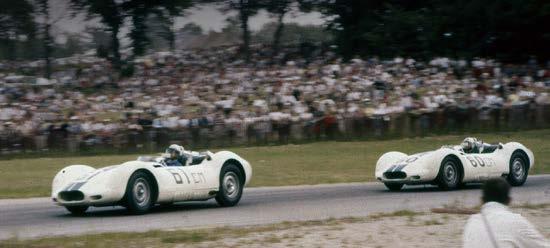

Late in 1956, London jeweller and prospective Lister customer Norman Hillwood suggested to Brian Lister that Jaguar’s 3.4L engine would be perfect for his lightweight racer. It was a fortuitous call; Lister was then under contract with the Shell/BP combine, who had also sponsored the Jaguar factory D-Types. With no entries to field after their retirement, Shell/ BP needed a new unlimited-capacity sports racer to compete against the Esso-sponsored Aston Martin and Ecurie Ecosse teams. The company wanted Lister to build it, and he was only too happy to accommodate them. Lister designed a well-packaged and attractive car in the mold of the ListerMaserati, powered by a 3.4L Jaguar twin-cam 6 using dry-sump oiling and triple twin-choke Weber side-draft carburetors. In fully loaded racing trim, it was lighter than a dry D-Type, specifically because it was designed for club racing and lacked the lights, windshield wipers, luggage space and other components it would need to qualify for FIA international competition.
The first Lister-Jaguar proved virtually unbeatable in 1957 with the enormously
talented and courageous Scott-Brown at the wheel, winning 11 of 14 races overall that year and breaking every existing lap record while laying waste to the competition from Aston Martin and the D-Types of Ecurie Ecosse. This was more than enough to attract Sir William Lyons’ attention as he sought a works replacement for the D-Type. Lister and Lyons quickly reached an agreement to produce a factory-backed successor, with Lister supplying a rolling chassis and body, and Jaguar contributing its twin-cam engines and transmissions, engineering expertise and even a flush customer list. The new Lister-Jaguar was, in fact, the perfect marriage of highly tuned Jaguar power and proven race-car engineering that had its roots, according to Lister himself, in the great prewar Mercedes-Benz Grand Prix racing cars. In contrast to the first Lister-Jaguar, the new car was designed to meet the FIA’s Appendix C rules. Its muscular lines suggested a D-Type on steroids, its high forward wheel arches flowing down into a front end designed to minimize overall frontal area while complying with Appendix C windshield-height requirements. A central bulge running

the length of the hood dropped down around and behind the engine, a brilliant trick that provided the lowest possible mounting height for the regulation windscreen yet limiting its effective height and inspiring the car’s “Knobbly” moniker. The rear deck rose up behind the driver from the rounded tail to level with the top of the windscreen, with an opening in the headrest through which to fill a large 38-gallon fuel tank.

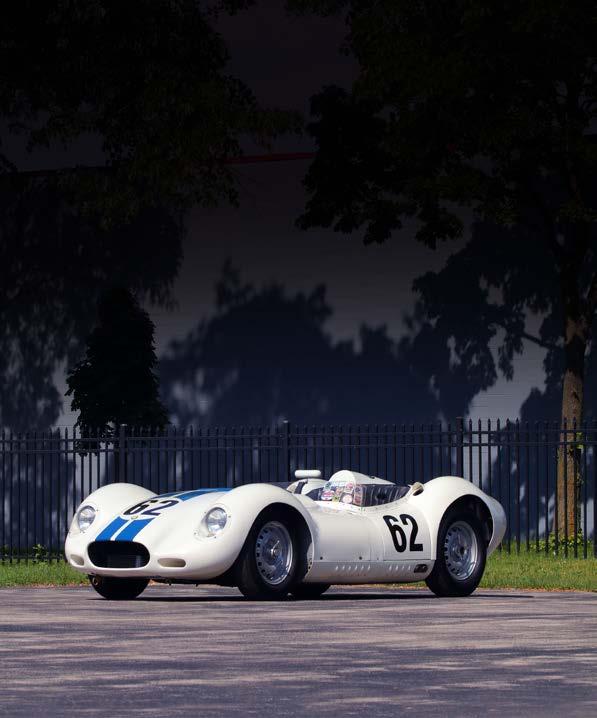
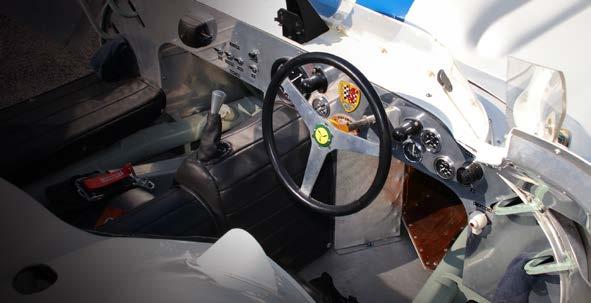
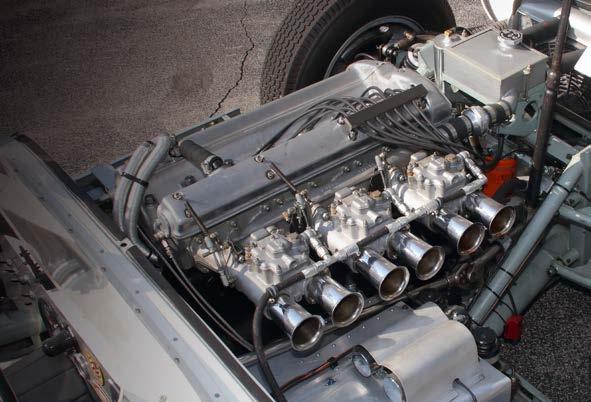


LISTER
JAGUAR EX-BRIGGS CUNNINGHAM TEAM CAR
Kane
Photos by Dan and Carol Duckworth // Vintage Photos Courtsey of The Comer Collection MECUM.COM • 3 Beneath the aluminum skin was Lister’s favored chassis design comprising two main rails of 3-inch-diameter steel tubing separated by parallel tubes forming center section for the cockpit. front subframe carried the upper and lower wishbones, steering rack, coilover shocks, sway bar, uprights and outboard disc brakes, and rear cage held the De Dion tube, coilovers and solidly mounted center section flanked by inboard disc brakes and independent axles. The result was car, in 1958, that was capable of 0-60 in fewer than seconds and had top speed of 181 MPH according to Lawrence Whittaker of Lister Cars. Stunning performance today and earth-shattering nearly 60 years ago. One of the first potential customers to learn of the new car was the wealthy American sportsman Briggs Cunningham, who in 1955, Sir William had appointed as Jaguar’s distributor in the Northeastern U.S. He was also one of Jaguar’s most successful campaigners in American sports-car racing and enjoyed close ties as factory insider of considerable influence. With his aging trio of D-Types in need of replacement, Cunningham traveled to Lister’s Cambridge works with his engineer, the brilliant Alfred Momo, to insist on securing the first two new Lister-Jaguars, which had already been allocated to the Scottish Ecurie Ecosse team. So confident the deal was done, in fact, Lister had already assigned chassis numbers EE101 and EE102 to the cars, the prefix obviously referring to Ecurie Ecosse. However, after intense negotiations and “reminding” Jaguar of their relationship, Cunningham succeeded in getting the first two cars for his team, quickly renumbered as BHL-101 and BHL-102 to match Lister’s routine chassis prefix. The Lister-Jaguar presented here is BHL-102, the second of the factorybacked “Knobbly” Lister-Jaguars built. It was delivered via air freight along with BHL-101 to Briggs Cunningham’s New York facility to be prepared by Momo for the 1958 Sebring 12 Hours in March. On the day of the race, the two cars lined up in the traditional white-and-blue Cunningham livery and with Appendix C-mandated 3.0L engines under their bulging bonnets. Archie Scott-Brown was paired with Cunningham teamace Walt Hansgen in BHL-101, while team newcomers Ed Crawford and Pat O’Connor were assigned to BHL-102. Unbeknownst to the Cunningham team, the Jaguar 3.0L engines were prone to piston failure with prolonged high-speed operation, likely caused by lean fuel metering. BHL-101 was the first 3.0-powered car to suffer burned piston, after only three laps; BHL-102 suffered the same fate on lap 6, followed soon thereafter by every other entrant running the 3.0L Jaguar engine. THE NEW LISTER-JAGUAR WAS THE PERFECT MARRIAGE OF HIGHLY TUNED JAGUAR POWER AND PROVEN RACE-CAR ENGINEERING It was an embarrassing outcome for Jaguar’s engineering department that Momo would remedy by preparing his own 3.8L, dry-sump engines for the coming SCCA season. The Momo 3.8 engines produced more than 350 HP, plenty enough to make the Cunningham Lister-Jaguars the class of the field in SCCA competition. Walt Hansgen in BHL-101 and Ed Crawford in BHL-102 combined to take victories out of 16 races and earn Cunningham the 1958 SCCA National Championship. Indeed, American road racing would not see such dominance again until Carroll Shelby unleashed his Cobras on an unsuspecting world. BHL-102 amassed one of the most impressive competition records in 1950’s American sports-car racing. It won numerous races at Road America from 1958 through 1960, including the 1958 June Sprints and the 1959 Road America 500, where Ed Crawford was also awarded the Harley Earl Trophy. raced and often won at such venues as Virginia International Raceway, Watkins Glen, Cumberland, Lime Rock, Montgomery, New York, Thompson Raceway and Bridgehampton; in addition to Ed Crawford, its drivers included Briggs Cunningham, Walt Hansgen, Stirling Moss, Phil Forno, Pat O’Connor, Dale Duncan, Lake Underwood, Russ Boss, Fred Windridge, Ed Hugus and Bob Grossman. BHL-102 was the star of the Cunningham team, which remains one of the greatest American racing institutions in the sport’s history. One of only nine Knobbly Lister-Jaguars ever built, BHL-102 and its stablemate are easily the most famous and accomplished of that lineage. The final appearance of Lister-Jaguar BHL-102 for Team Cunningham was at Riverside on October 15 and 16, 1960, for the Los Angeles Times Grand Prix. Chuck Daigh, interested in buying BHL102, was given the drive. Although he failed to qualify, he nevertheless bought the car from Cunningham. few years later, the next owner of record, Ali Lugo of Connecticut, sold the car to Bob Jones, member of the Vintage Sports Car Club of England. Jaguar specialist John Harper inspected the car when it arrived in England and confirmed its authenticity. Jones raced it in the VSCC Pomeroy Trophy before selling it to Harper. Subsequent owners were Walter Haskins in the UK and Rick Weiland in Germany. BHL-102 AMASSED ONE OF THE MOST IMPRESSIVE COMPETITION RECORDS IN 1950’S AMERICAN SPORTS-CAR RACING. MONTHLY Wieland completed full restoration of the car in 1984, obtained FIA Technical Certification and passport for BHL-102 and then raced in many historic venues, including the Oldtimer Grand Prix and the Nürburgring beginning in 1985. After Frank Snyter of the UK purchased in 1989, he sold to Murray Smith of New York. It was then purchased by Larry Kinch in Scotland, who later sold to Nick Collona of Montana, who raced extensively at such varied venues as Mont Tremblant, Sonoma, Coronado and Monterey. In 2006, Steven Hilton of Arizona acquired BHL-102. Hilton raced in the Wine Country Classic Historic Car Races at Infineon Raceway and at the Rolex Monterey Historic at Laguna Seca every year from 2006 to 2012. Present owner Colin Comer purchased the car in November 2012, and in 2013 covered more than 1,100 miles in the Copperstate 1000 road rally accompanied by “Road Track” magazine Executive Editor Sam Smith, who recounted the trip in the June 2014 issue of “Road Track.” Comer has also continued to race the car in vintage events since his purchase, and has regularly exercised in “spirited” fashion on the open road. BHL-102 has also won its share of beauty pageants, winning “Best Competition Car” and numerous other awards at several Concours events, including the Arizona Festival of Speed, the Road Track Concours at Elkhart Lake, the Milwaukee Masterpiece Concours d’Elegance and was invited to the 2015 Amelia Island Concours d’Elegance for an honored place in the Cars of Stirling Moss display. In 2015, Comer piloted BHL-102 to First in Class and second overall after starting at the back of the grid for fun at Road America during the Jaguar Feature Race of the Elkhart Lake Vintage Festival—behind an ex-Group 44 Jaguar XJR-5 GTP racer, a fitting accomplishment for the car Comer has described as the crown jewel of his collection. Which, we suspect, with its illustrious history and breathtaking performance, BHL-102 would be the crown jewel of almost any collection. OFFERED AUGUST 18 AT MONTEREY 2017 MECUM.COM MONTHL Y MONTHL Y $7.95 VOLUME // ISSUE 8 FERRARI AT MONTEREY J. GEILS’ ITALIAN EXOTICS THE COLIN COMER COLLECTION AND MORE LISTER 1958 JAGUAR EX-BRIGGS CUNNINGHAM TEAM CAR MECUM MAGAZINE LAYOUTS
1958
By
Rogers
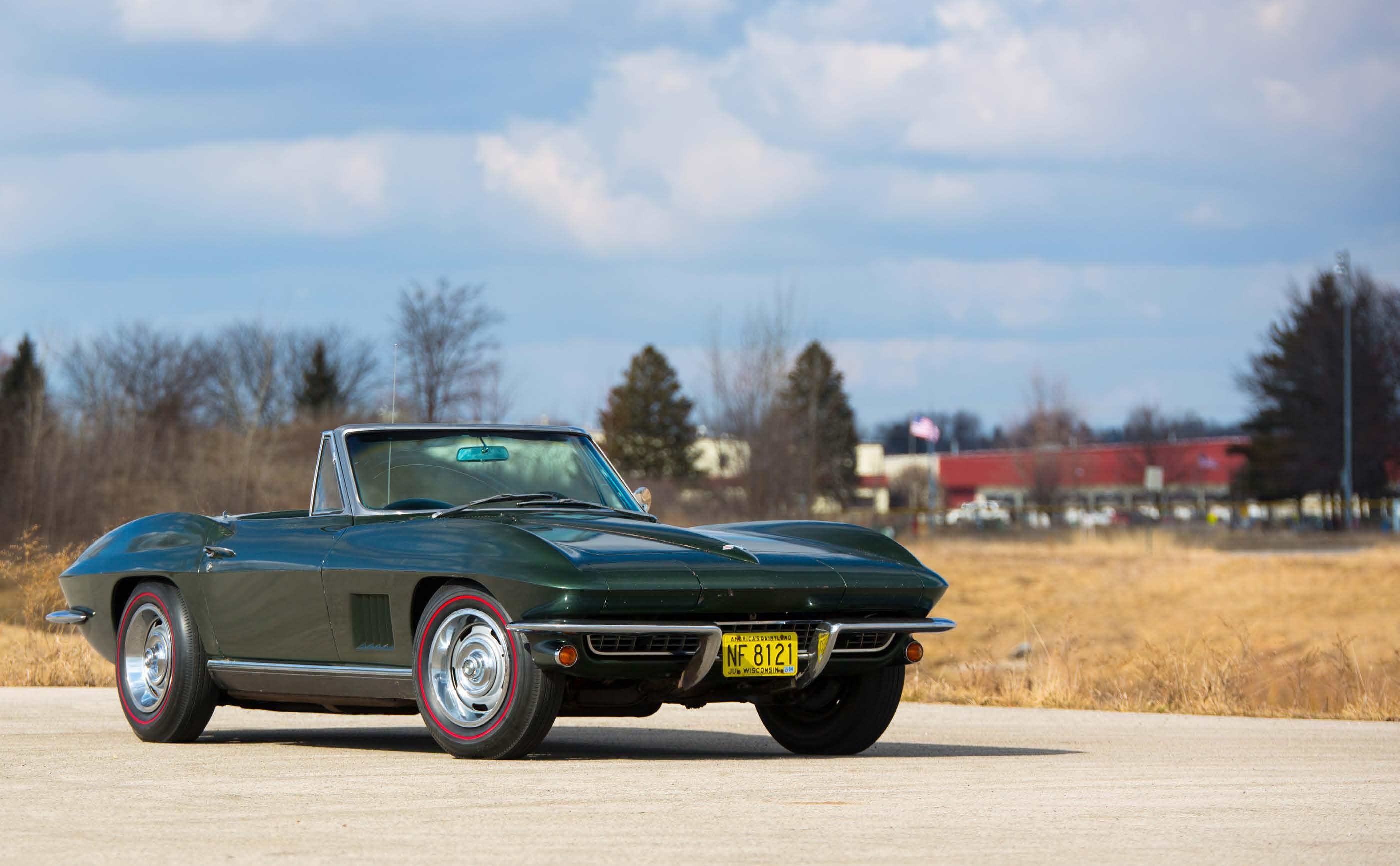





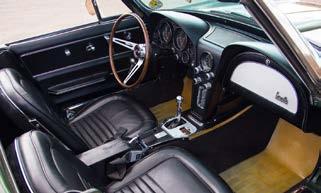
In January of 1967, the Green Bay Packers won the first Super Bowl under the leadership of quarterback Bart Starr. One of the NFL’s all-time greatest players, Starr led the Packers to a 35-10 victory over the Kansas City Chiefs and was named the game’s Most Valuable Player. To commemorate that award and celebrate the victory, this 1967 Corvette Sting Ray Convertible was gifted to
Starr for his efforts.

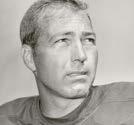










UNRESTORED 1967 CONVERTIBLE GIFTED TO PACKERS’ MVP TO BE OFFERED AT INDY 2 • MONTHLY MECUM.COM • 3 BartStarr’s SUPER BOWL I SUPER BOWL I An accomplished restorer with several Bloomington Gold and NCRS Top Flight winners to his credit, Anderson soon confirmed the Corvette’s provenance when he uncovered the tank sticker, clearly stating “Courtesy Delivery: B. Starr,” as well as the AFL-NFL World-Championship Game ink pen, which was discovered underneath the passenger seat. Closer inspection showed that the Corvette was highly original but in need of restoration, and that is when Anderson was faced with not-unfamiliar choice: complete nut-and-bolt rebuild to factory-original specifications, or sympathetic renewal that would respect the car’s originality and maintain the wonderful patina had acquired through the passage of time. Fortunately for Corvette purists, Anderson chose the latter route. He removed the body from the frame to clean and recondition An icon among generations of NFL greats, Bart Starr amassed singular record of accomplishments. From 1960 through 1967, the Packers’ win-loss record was remarkable 62-24-4. In that time, Starr guided the Packers to win six divisional, five NFL and the first two Super Bowl championships, in both of which Starr was awarded MVP honors. He also racked up 104.8 passer rating in the playoffs, an NFL record that remains intact to this day. In 1973, the Green Bay Packers honored Starr by retiring his number, and in 1977, he was inducted into both the Packers Hall of Fame and the NFL Hall of Fame. Off the field, Bart Starr and his wife, Cherry, have been dedicated community servants, supporting numerous charities that include the Vince Lombardi Cancer Clinic, Midwest Athletes Against Childhood Cancer, Athletes in Action and the Rawhide Ranch, charity dedicated to helping at-risk youth, which the Starrs helped found in 1968. HALL OF FAMER ON THE FIELD AND OFF the undercarriage and suspension, hand-scrubbing the chassis components and the body underside and replacing the body mounts, suspension rubbers, u-joints, seals and bearings. The brake system was overhauled and the calipers were upgraded with stainless-steel piston sleeves for durability. Anderson asserts that the car runs and drives well, and he further confirms that the driveline is original and matching-numbers to the car; the engine has never been disassembled and still retains the original gaskets and paint. A new Dewitts reproduction radiator was installed, but the original was retained to accompany the car. The car’s Goodwood Green paint is also mostly original with a few minor touch-ups and great patina. While exhibiting some checking and cracking, shows very well in maintaining a significant element in the car’s overall originality. set of period-correct bias-ply redline tires on the original 1967 Rally wheels complete this amazing artifact of NFL and Green Bay Packers history. OFFERED MAY 18 AT INDY 2018 The original tank sticker remains with the car showing delivery to B. Starr. Photo courtesy of the Green Bay Packers MONTHLY Built at the St. Louis assembly plant in June 1967, it was ordered in Goodwood Green to match the Packers’ home jerseys and was fitted with a black interior and black soft top. Equipped with the base 327/300 HP small-block V-8, it was optioned with 4-speed manual transmission, 3.36:1 Positraction differential, Soft Ray-tinted windshield, telescopic steering column and an AM/FM radio. The Corvette found its way into private hands in the 1980s, eventually coming into the ownership of woman in Wausau, Wisconsin, as part of a divorce settlement. In 1994, chance meeting occurred at Minnesota’s Brainerd International Raceway between the woman, who was visiting friend in Brainerd, and Michael Anderson, owner of Thunder Valley Classic Cars in nearby St. Joseph, which specializes in Corvettes. In describing her Corvette to Anderson, she claimed that it was originally given to Bart Starr for being the MVP of the 1967 Super Bowl. Intrigued, Anderson offered to buy the Corvette, which by then had been in storage for several years. On the advice of her mechanic and in service to helping her daughter complete college, the woman accepted the offer, and Anderson took the Corvette back to his facility in St. Joseph. MECUM MAGAZINE LAYOUTS
Bart


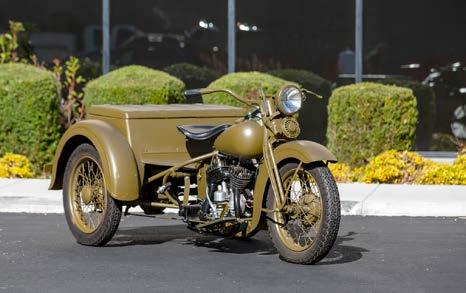
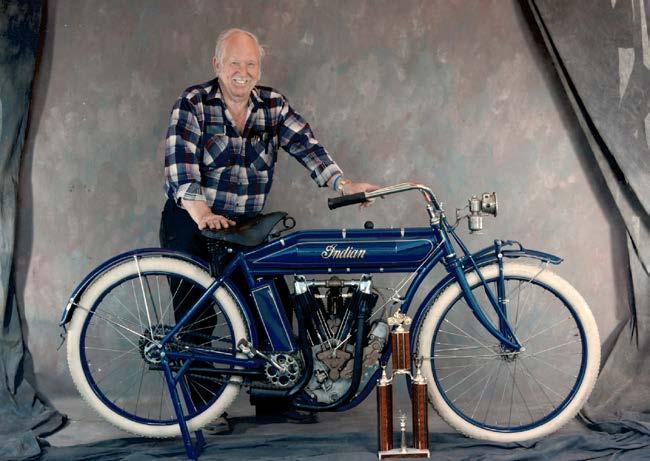


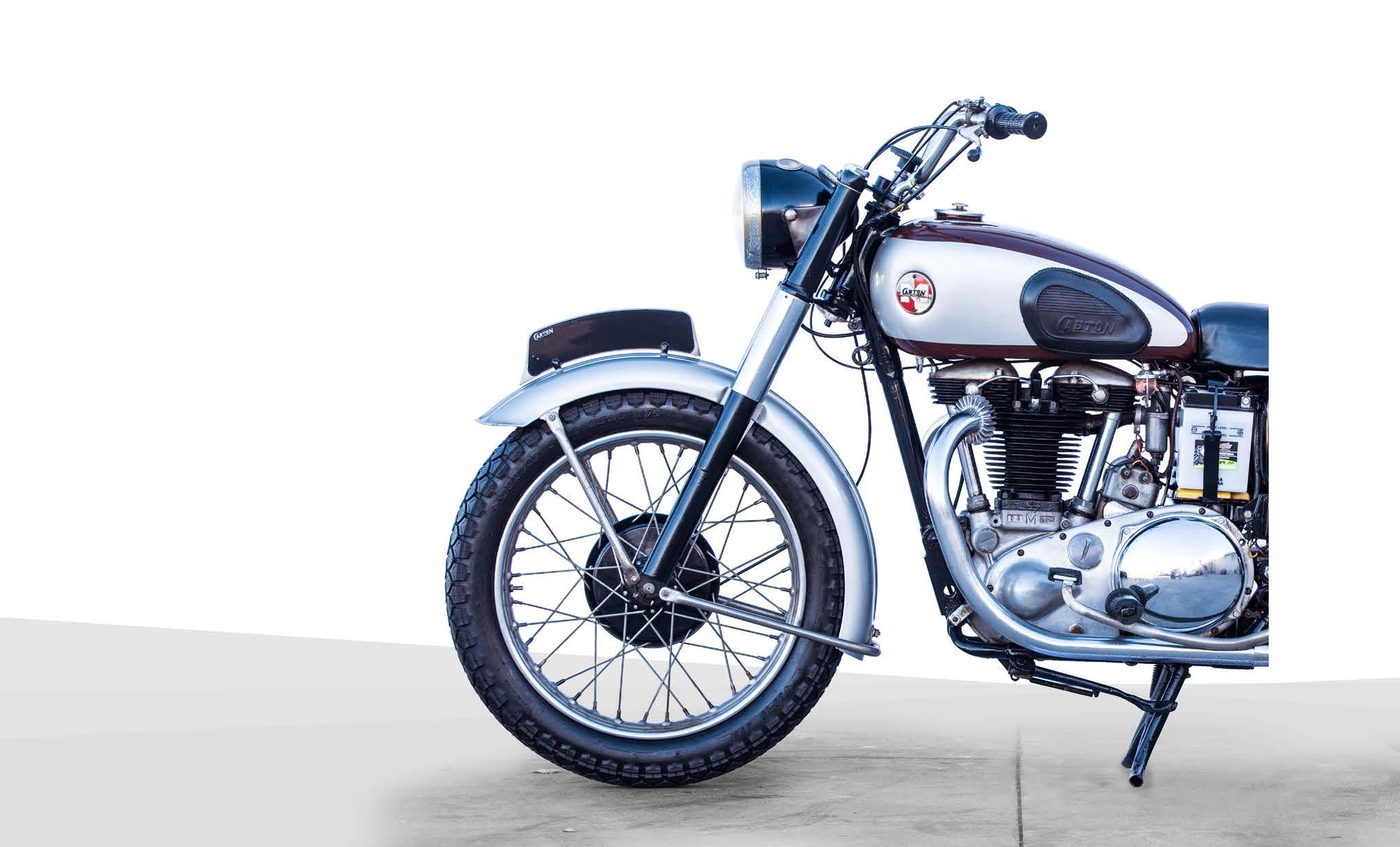
All 12 Harley-Davidson Knucklehead variations and more to cross the auction block at Las Vegas 2021 idden away near Tacoma, Washington, on the outskirts of Mount Rainier National Park—home to the state’s highest peak—is a little plot of land once owned by the late Johnnie Clifton “JC” Burgin and his wife, Bernadine. On it, an unassuming barn-like building remains and still houses Burgin’s private collection of motorcycles. While the location and even the building well reflect Burgin’s own modest and relaxed nature, the motorcycles within belie the tale entirely. Far from inconspicuous or understated, the assemblage contains some of the rarest and most desirable HarleyDavidson motorcycles still extant today. Together, the group of approximately 50 vintage and antique motorcycles stands as one of the only collections in the world to contain at least one example of all 12 of Harley-Davidson’s famed Knucklehead series, and the story doesn’t stop there, with rows and rows of other historically significant machines lining the floor of the barn as well. Since the couple’s passing, Burgin in 2005 and Bernadine in 2019, the motorcycles have been cared for by family and friends, including their daughter Lola Freiheit and longtime friend and shop manager Steve White. While the pair attest that caring for the bikes has been their honor, they’re finally ready to part with the assemblage and will offer the jaw-dropping group of HarleyDavidsons and more this April at the 30th anniversary return of the annual Las Vegas vintage and antique motorcycle auction. Before Burgin ever dreamed of becoming a collector of motorcycles, he filled his time on the North Carolina family farm toying with tractors and other mechanical workhorses. In a filmed interview with The News Tribune in 2008, Bernadine said that, by about 12 years of age, Burgin had taught himself to fix his grandfather’s tractor; “He just figured out how it worked,” she said with a shrug. The farm’s upkeep required all hands on deck, and with Burgin’s aptitude for mechanical repair work, his parents soon took him out of school in order to help out around the farm. By age 16, the young and restless Burgin had grown tired of tinkering with the slow-moving tractors that plowed the fields and kept up with the crops, and his wandering eye was soon caught by an issue of The Enthusiast, Harley-Davidson’s official magazine. Not long after scouring the pages of the publication until they became too fragile to flip through, Burgin acquired his very own 1930 Harley-Davidson VL—a sturdy little project bike that kept him occupied until the outbreak of World War II, when he enlisted in the U.S. Army and served as a Motor Sergeant for three-and-a-half years in the South Pacific. White attests that Burgin, in spite of his sixth-grade education, was a “borderline genius” with a near photographic memory. During his time at war, White added, the resourceful and talented Burgin even invented a tool so brilliantly engineered that it was soon officially adapted by the U.S. military for regular use. Story by Chelsey Hinsenkamp Burgin shows off the beautifully restored vintage Indian that earned him the first place trophy in the Antique Pre-1935 Class at DJ’s Motorcycle and Swap Meet Show on September 25, 1994. Johnnie “J.C.” Burgin in 1945 in West Monroe, Louisiana. H 2 MECUM.COM MECUM.COM 3 MECUM.COM • 3 2 • MONTHLY Years ago, it was rare to see Japanese vehicles show up at car or motorcycle auctions. They just weren’t considered collectible or desirable. In some corners, there was still some resentment over the way the Japanese motorcycle industry had slowly edged out some manufacturers such as Triumph and BSA. For many people an inexpensive (or even expensive) Japanese vehicle was their introduction to motorsports. Many a first ride was taken on a Honda Mini Trail, and others remember commuting on a step-through Honda. The Japanese motorcycle began to mature and then dominate the motorcycle industry in the early ‘70s. When Honda introduced its CB-750, the company wasn’t sure if it would be a success, so it initially set them up for the sand-casting procedure. When sales took off, the company switched to die-casting. There were stories of employees from western manufacturers who were very impressed with the Japanese design and sadly realized their own employers wouldn’t be around much longer. ON RISING SUN MOTORCYCLES THE SUN BEGINS TO SHINE Japanese models seeing upsurge in collectability By Somer Hooker CABTON • HONDA KAWASAKI SUZUKI YAMAHA CABTON • HONDA KAWASAKI SUZUKI YAMAHA CABTON HONDA • KAWASAKI SUZUKI YAMAHA CABTON HONDA KAWASAKI SUZUKI YAMAHA CABTON HONDA KAWASAKI SUZUKI • YAMAHA CABTON HONDA KAWASAKI SUZUKI YAMAHA CABTON HONDA KAWASAKI SUZUKI YAMAHA CABTON HONDA KAWASAKI SUZUKI YAMAHA CABTON HONDA • KAWASAKI SUZUKI YAMAHA CABTON HONDA KAWASAKI SUZUKI YAMAHA CABTON HONDA KAWASAKI SUZUKI • YAMAHA CABTON HONDA KAWASAKI SUZUKI YAMAHA CABTON HONDA KAWASAKI SUZUKI YAMAHA CABTON HONDA KAWASAKI SUZUKI YAMAHA CABTON HONDA • KAWASAKI SUZUKI YAMAHA CABTON HONDA KAWASAKI SUZUKI YAMAHA CABTON HONDA KAWASAKI SUZUKI • YAMAHA CABTON HONDA KAWASAKI SUZUKI YAMAHA CABTON HONDA KAWASAKI SUZUKI YAMAHA CABTON HONDA KAWASAKI SUZUKI YAMAHA CABTON HONDA • KAWASAKI SUZUKI YAMAHA CABTON HONDA KAWASAKI SUZUKI YAMAHA CABTON HONDA KAWASAKI SUZUKI • YAMAHA CABTON HONDA KAWASAKI SUZUKI YAMAHA CABTON HONDA KAWASAKI SUZUKI YAMAHA CABTON HONDA KAWASAKI SUZUKI YAMAHA CABTON HONDA • KAWASAKI SUZUKI YAMAHA CABTON HONDA KAWASAKI SUZUKI YAMAHA CABTON HONDA KAWASAKI SUZUKI • YAMAHA CABTON HONDA KAWASAKI SUZUKI YAMAHA CABTON HONDA KAWASAKI SUZUKI YAMAHA CABTON HONDA KAWASAKI SUZUKI YAMAHA CABTON HONDA • KAWASAKI SUZUKI YAMAHA CABTON HONDA KAWASAKI SUZUKI YAMAHA CABTON HONDA KAWASAKI SUZUKI • YAMAHA CABTON HONDA KAWASAKI SUZUKI YAMAHA CABTON HONDA KAWASAKI SUZUKI YAMAHA CABTON HONDA KAWASAKI SUZUKI YAMAHA CABTON HONDA • KAWASAKI SUZUKI YAMAHA CABTON HONDA KAWASAKI SUZUKI YAMAHA CABTON HONDA KAWASAKI SUZUKI • YAMAHA CABTON HONDA KAWASAKI SUZUKI YAMAHA CABTON HONDA KAWASAKI SUZUKI YAMAHA CABTON HONDA KAWASAKI SUZUKI YAMAHA CABTON HONDA • KAWASAKI SUZUKI YAMAHA CABTON HONDA KAWASAKI SUZUKI YAMAHA CABTON HONDA KAWASAKI SUZUKI • YAMAHA CABTON HONDA KAWASAKI SUZUKI YAMAHA CABTON HONDA KAWASAKI SUZUKI YAMAHA CABTON HONDA KAWASAKI SUZUKI YAMAHA CABTON HONDA • KAWASAKI SUZUKI YAMAHA CABTON HONDA KAWASAKI SUZUKI YAMAHA CABTON HONDA KAWASAKI SUZUKI • YAMAHA CABTON HONDA KAWASAKI SUZUKI YAMAHA CABTON HONDA KAWASAKI SUZUKI YAMAHA CABTON HONDA KAWASAKI SUZUKI YAMAHA CABTON HONDA • KAWASAKI SUZUKI YAMAHA CABTON HONDA KAWASAKI SUZUKI YAMAHA CABTON HONDA KAWASAKI SUZUKI • YAMAHA CABTON HONDA KAWASAKI SUZUKI YAMAHA CABTON HONDA KAWASAKI SUZUKI YAMAHA CABTON HONDA KAWASAKI SUZUKI YAMAHA CABTON HONDA • KAWASAKI SUZUKI YAMAHA CABTON HONDA KAWASAKI SUZUKI YAMAHA CABTON HONDA KAWASAKI SUZUKI • YAMAHA CABTON HONDA KAWASAKI SUZUKI YAMAHA CABTON HONDA KAWASAKI SUZUKI YAMAHA CABTON HONDA KAWASAKI SUZUKI YAMAHA CABTON HONDA • KAWASAKI SUZUKI YAMAHA CABTON HONDA KAWASAKI SUZUKI YAMAHA CABTON HONDA KAWASAKI SUZUKI • YAMAHA CABTON HONDA KAWASAKI SUZUKI YAMAHA CABTON HONDA KAWASAKI SUZUKI YAMAHA CABTON HONDA KAWASAKI SUZUKI YAMAHA CABTON HONDA • KAWASAKI SUZUKI YAMAHA CABTON HONDA KAWASAKI SUZUKI YAMAHA CABTON HONDA KAWASAKI SUZUKI • YAMAHA CABTON HONDA KAWASAKI SUZUKI YAMAHA CABTON HONDA KAWASAKI SUZUKI YAMAHA CABTON HONDA KAWASAKI SUZUKI YAMAHA CABTON HONDA • KAWASAKI SUZUKI YAMAHA CABTON HONDA KAWASAKI SUZUKI YAMAHA CABTON HONDA KAWASAKI SUZUKI • YAMAHA CABTON HONDA KAWASAKI SUZUKI YAMAHA CABTON HONDA KAWASAKI SUZUKI YAMAHA CABTON HONDA KAWASAKI SUZUKI YAMAHA CABTON HONDA • KAWASAKI SUZUKI YAMAHA CABTON HONDA KAWASAKI SUZUKI YAMAHA CABTON HONDA KAWASAKI SUZUKI • YAMAHA CABTON HONDA KAWASAKI SUZUKI YAMAHA CABTON HONDA KAWASAKI SUZUKI CABTON HONDA • KAWASAKI SUZUKI CABTON • HONDA KAWASAKI • SUZUKI CABTON HONDA KAWASAKI SUZUKI CABTON HONDA • KAWASAKI SUZUKI CABTON • HONDA KAWASAKI • SUZUKI CABTON HONDA KAWASAKI SUZUKI CABTON HONDA • THE 2017 MECUM LAS VEGAS MOTORCYCLE AUCTION EXPOSED THE POPULARITY OF JAPANESE BIKES ON THE COLLECTOR MARKET 1955 CABTON RTS
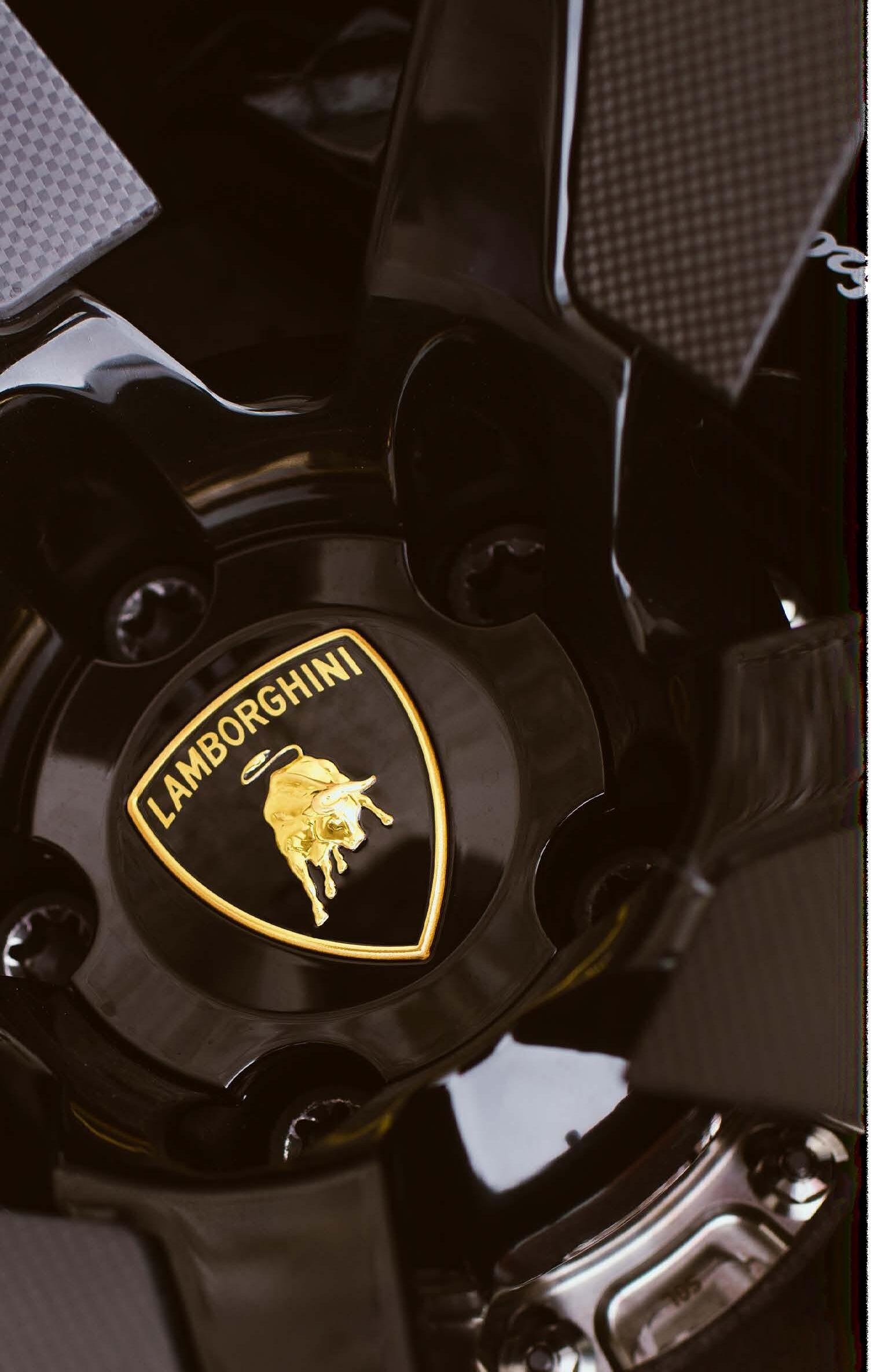
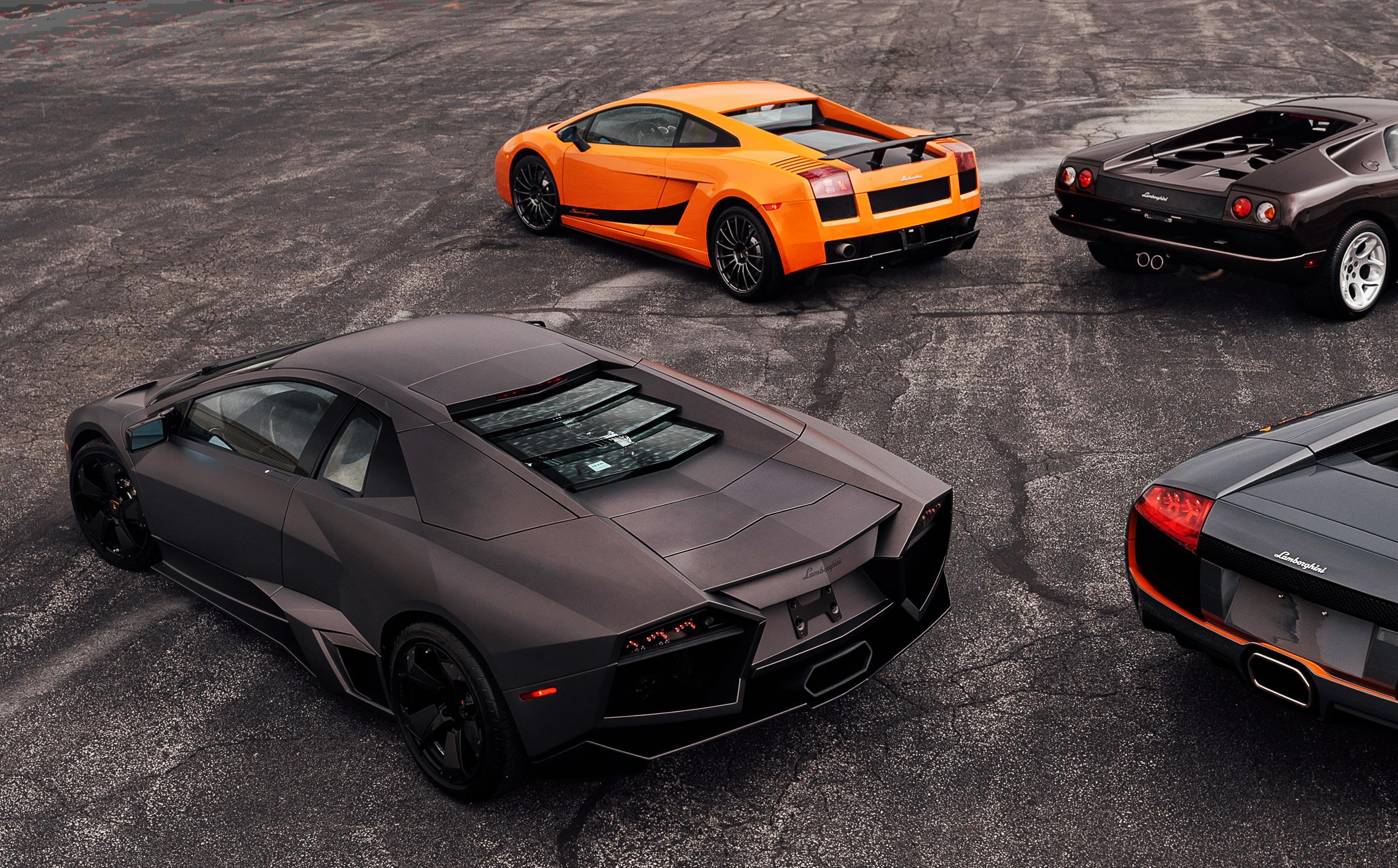
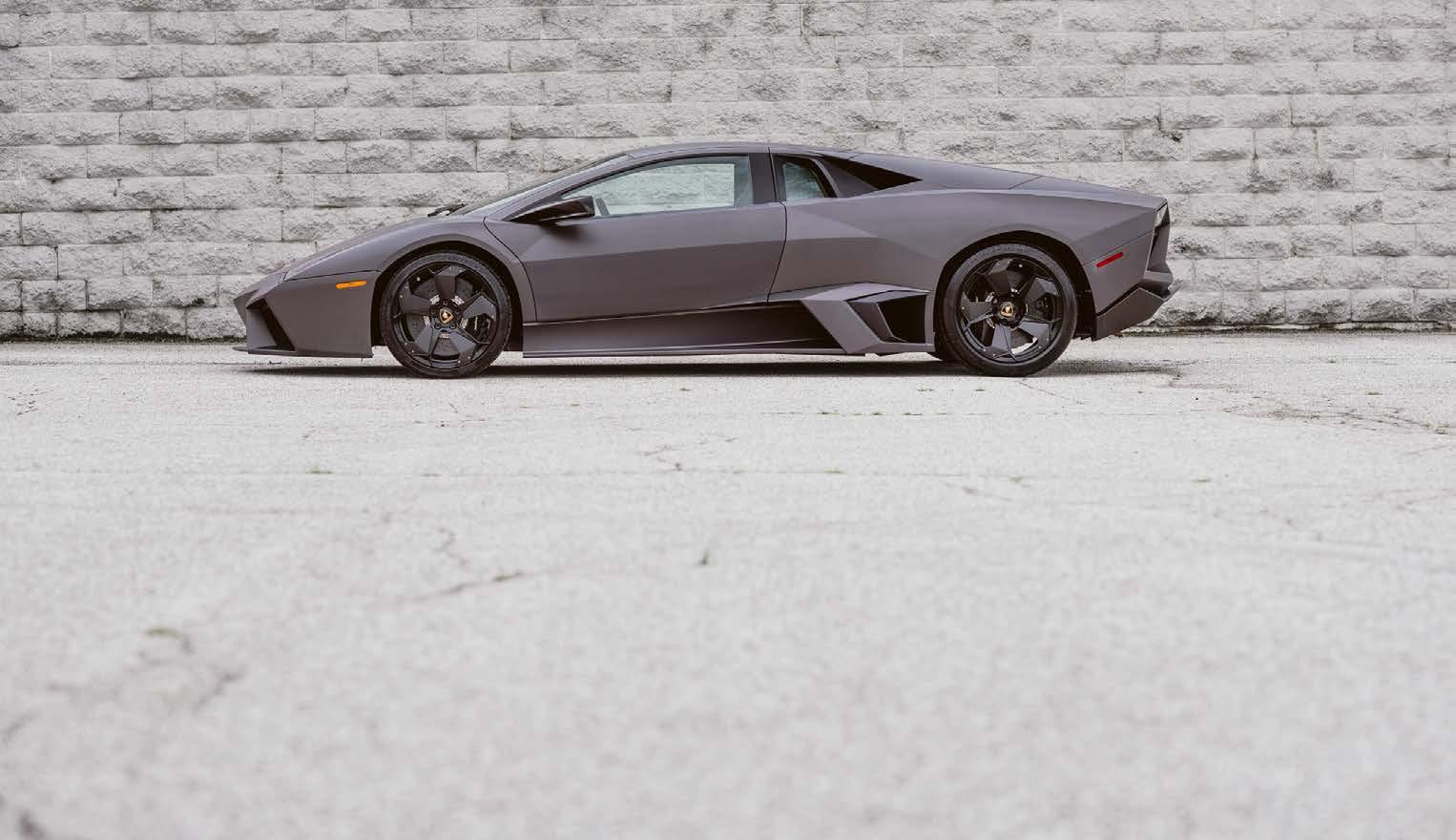









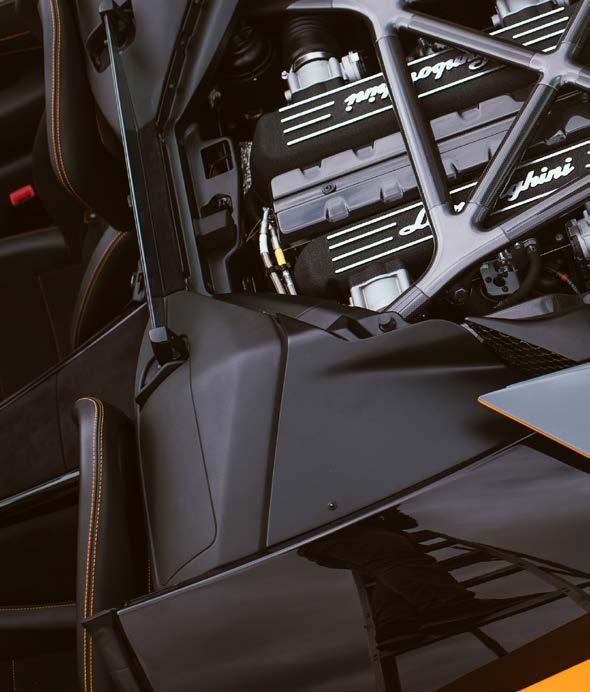

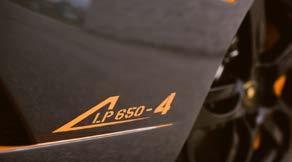







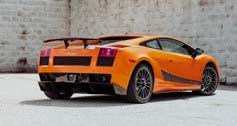


2010 LAMBORGHINI MURCIELAGO LP650-4 ROADSTER A QUARTET OF ULTRA-EXCLUSIVE ITALIAN SUPERCARS Marshall Goldman Motor Sales in Cleveland, Ohio, is one of the foremost dealers of previously owned, low-mileage exotic and specialty automobiles in the United States, attracting faithful customers from across the country and around the world. Founded by Marshall Goldman in 1978, the company collectively has more than 300 years of combined knowledge among its highly experienced staff, whose professional skills, like the fine automobiles they offer, are second to none. Mecum is extremely pleased to bring this fine company’s incredible quartet of exceptionally rare Lamborghinis to the Mecum auction platform at the 10th annual Monterey Daytime Auction on August 25, 2018. By Kane Rogers Photos by Theo Civitello 2001 LAMBORGHINI DIABLO SE 2008 LAMBORGHINI GALLARDO SUPERLEGGERA 2 • MONTHLY MECUM.COM • 3 2008 LAMBORGHINI GALLARDO SUPERLEGGERA Lamborghini introduced the compact V-10-powered Gallardo in 2003 as stablemate to its V-12 models, the Murcielago and that car’s successor, the Aventador. Named following Lamborghini tradition after famed fighting bull, the Gallardo became Lamborghini’s best-selling model with 10-year production run of 14,022 cars. Only 618 of those, however, were issued bearing the Superleggera name paying tribute to the first Lamborghini, the 350 GT designed and built by Carrozzeria Touring. The Superleggera version of the aluminum-spaceframed Gallardo lighter than the standard model by full 220 pounds thanks to generous use of carbon fiber. Driven just 322 original miles, this 2008 Gallardo Superleggera an arresting sight in brilliant Arancio Borealis paint with black sill stripes and Nero Perseus leather interior. An allaluminum 5.0L/530 HP V-10 and paddle-shifted, dry-clutch 6-speed E-gear transmission, limited-slip differential and rear-biased all-wheel-drive comprise the Superleggera’s superb drivetrain, transforming explosive power into incredible performance. More than sensational track machine, the Superleggera is also well equipped for touring. In addition to front-end lift, tinted glass, power folding mirrors, dualzone climate control and electronic stability, this fiery raging bull features such valuable extras as carbon-fiber rear wing, navigation and rearview camera, and it comes with all factory items including books, tire-changing kit, battery tender and tools. 2001 LAMBORGHINI DIABLO SE From its initial inception by designer Marcello Gandini, the Lamborghini Diablo’s aggressive styling has been subject of controversy, but the Diablo’s visceral appeal carried the line through several evolutionary stages, picking up 4-wheel-drive and number of mechanical and cosmetic refinements along the way. Then in 1998, new generation of Diablo debuted with reworked styling that included a new front and rear fascia, smoother detailing and fresh new interior. The 2001 Diablo’s 6.0L V-12 engine rose from its original rating of 492 HP to 550, shaving a full second from its 0-60 MPH time to 3.6 seconds and boosting top speed from 202 to 205 MPH. This stunning 2001 Lamborghini Diablo SE is No. 37 of special edition of 40 produced and one of only 20 in showstopping effervescent Marrone Eklipsis paint matched inside with Marrone leather. The SE package added more to the Diablo’s already exotic mix with titanium 5-speed shift knob and shift gate, special carbon-fiber trim, titanium instrument dial surrounds, Lamborghini brake calipers, magnesium intake manifolds and cam covers, full Alpine infotainment system and power seat backrests. Another superb offering from the Marshall Goldman Limited Production Lamborghini Collection, shows just 2,433 kilometers and comes complete with a tool pouch, four keys and two remotes. OFFERED AUGUST 25 AT MONTEREY 2018 MONTHLY MECUM.COM 2008 LAMBORGHINI REVENTÓN Number 20 of only 20 produced, this 2008 Lamborghini Reventón is among the most exclusive, radical automobiles the company has ever built, which is really saying something about the folks who brought you the Miura, the Countach and the Diablo. Named in the Lamborghini tradition after the fighting bull that killed famed bullfighter Felix Guzman in 1943, the Reventón is the first car to be totally designed by the Centro Stile Lamborghini in Sant'Agata Bolognese as well as the first Lamborghini modeled entirely digitally. Based on the extraordinarily successful Murciélago LP640, the Reventón boasts all-new exclusive composite carbonfiber body panels, inspired by the F-22 Raptor fighter jet, over its carbon-fiber and steel main structure. Like the F-22, there is not a single flat plane in the entire shape, but series of angles that emphasize the car’s high-speed mission. A machined billet aluminum fuel-filler cap, exhaust outlet, bixenon/LED headlights, LED tail lights and gloss black wheels with carbon-fiber blades all contribute to the Reventón’s exclusivity. The Reventón’s interior is every bit as unique, showing off Nero Perseus leather and Olive Verde Alcantara upholstery covering carbon-fiber seats, and a new instrument cluster sheltering three aircraft-style Thin Film Transistor screens in place of analog readouts. No Lamborghini is complete without brilliantly engineered drivetrain and chassis, and the Reventón lives up to its unique status in both categories. The Reventón’s 6.5L/641 HP V-12 accelerates the car to 60 MPH in 3.4 seconds on the way to its 211 MPH top speed. Driven just 168 miles and in pristine ascompleted condition, this last of the 20 exclusive Reventóns built is offered with all accompanying factory ancillaries. milestone in Lamborghini’s rich history of advanced design, the Reventón promises to fulfill its destiny as true automotive classic. 2010 LAMBORGHINI MURCIELAGO LP650-4 ROADSTER The 2010 Lamborghini Murcielago LP650-4 Roadster is the 49th built of an exclusive series of 50 examples, and at just 179 miles, presents almost entirely as new. Like its namesake, champion bull whose spirit and ferocity led its opponent, the great Spanish matador Rafael Molina, to spare its life, the Lamborghini Murcielago was specially bred for brute strength and beauty. Successor to the Countach and Diablo, it introduced new level of design and performance surpassing both, with broad-shouldered body designed to slice through the air with ease thanks to moveable flaps that direct current where it most needed to maximize both cooling and aerodynamic trim. After introducing several special coupe and roadster variants, in 2009 Lamborghini released this LP650-4 Roadster in limited edition of just 50 cars, all finished in distinctive gray-over-orange livery (Grigio Telesto and Arancio in the Italian literature) that was repeated in the cockpit. Built on a high-strength alloy tube chassis, the LP650-4 Roadster is driven at all four wheels by its mid-mounted all-aluminum 6.5L/650 HP DOHC V-12 engine driving Lamborghini’s stout E-Gear transmission. This highly exclusive LP650-4’s distinctive cockpit features Nero Perseus leather, orange stitching and accents, Alcantara seat and panel inserts, black piano-type trim, and controls for front-end lift and Kenwood audio systems. MECUM MAGAZINE LAYOUTS


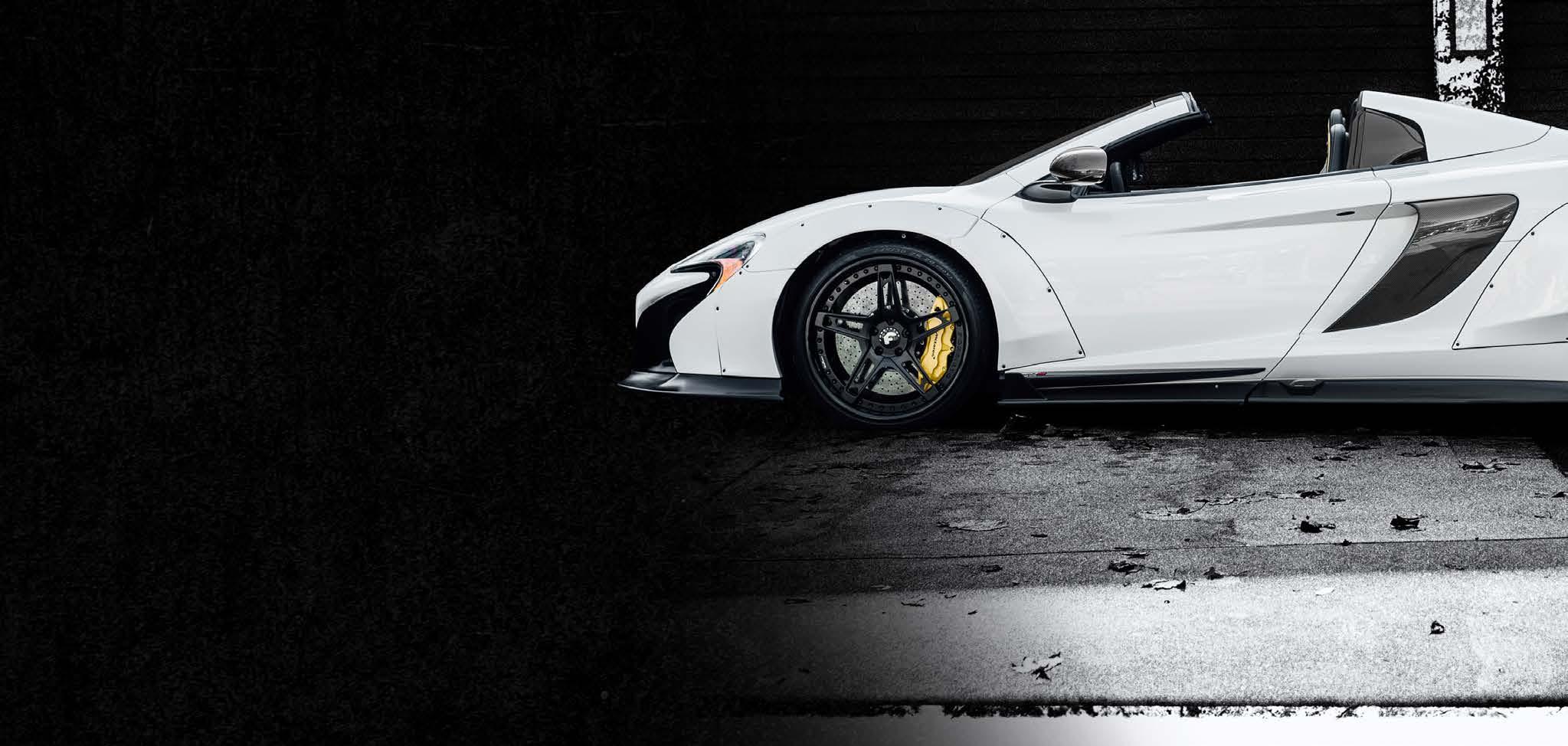

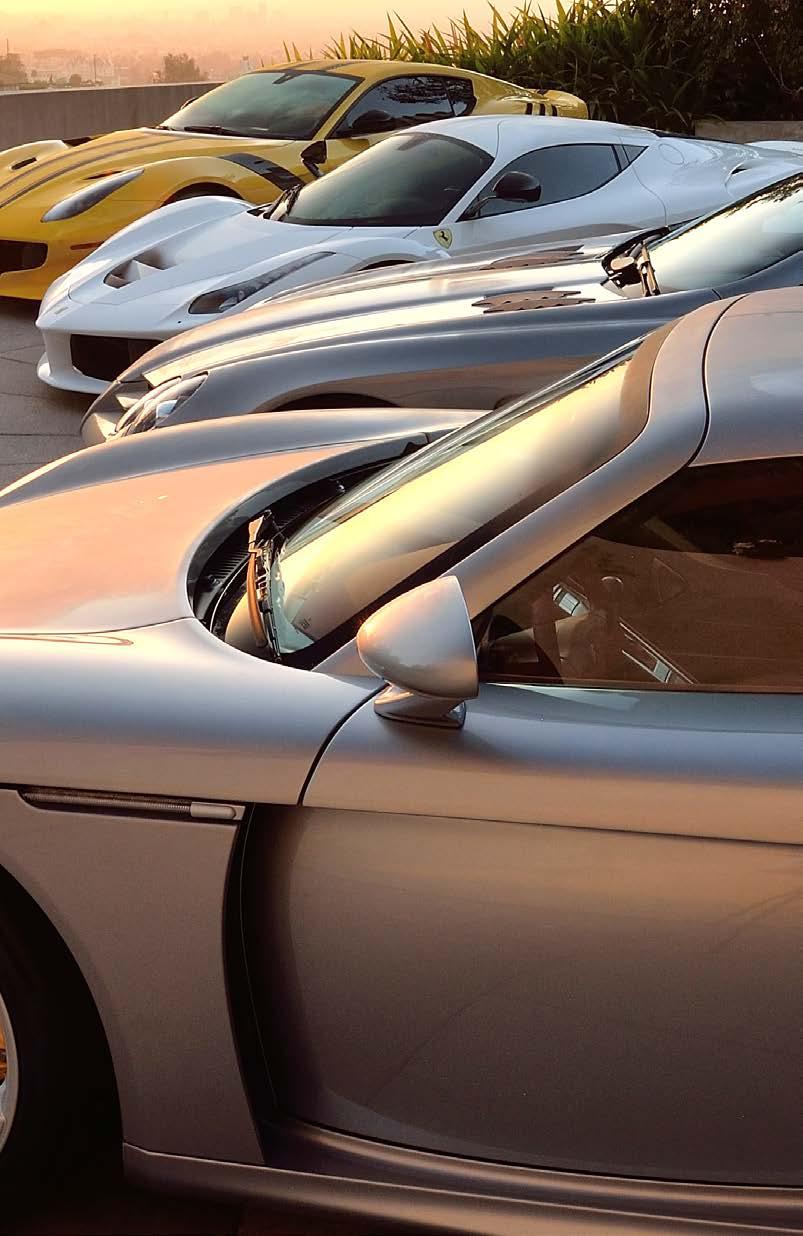


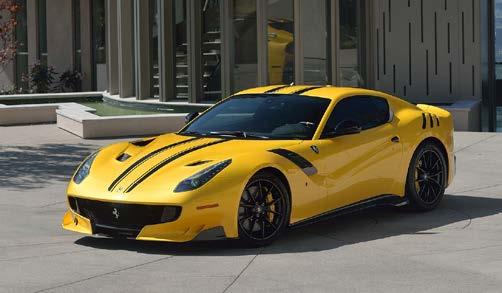

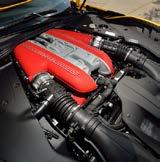



By Bill Nakasone • Photos by Theo Civitello GREATNESS OF Descendants MECUM.COM 3 2 MONTHLY MECUM.COM • 3 T he Gatsby Collection includes such a breathtaking array of modern exotic cars, it tends to stun the senses. Seven special machines with iconic names adorning them such as Ferrari, Porsche, Maserati and Ford— even a Mercedes-Benz with a McLaren badge—make this one group of cars that is sure to garner the attention of collectors. Perhaps as a teenager, you would think about how you would fill a dream garage if freed of monetary constraints. Maybe you even had the same dream when you reached retirement age. Hypotheticals need not apply here. Dan Gatsby has made that dream come true. A successful real estate magnate, the appropriately named Gatsby splits up his time among the trendy locales of Los Angeles, Miami and Las Vegas. Through his company, Gatsby Investment, he hopes to reach $1 billion in yearly investments in real estate over the next decade or so. His website, GatsbyInvestment.com, offers a look at some of the amazing properties and other investments currently in his portfolio. Flush with success, about two years ago he started collecting cars, making it a point to only buy limited-edition examples of exotic cars with unique features. Not surprisingly, the headliner of this amazing group of exotic cars is Ferrari’s ultimate supercar, the LaFerrari. Not just any LaFerrari, but a 209-mile example with dramatically contrasting Bianco Fuji paint over a Rosso interior. This 949 HP rocket ship is one of only two LaFerraris exported to North America with this stunning paint and interior combination. It’s a hybrid wonder that is one of the most aggressive and complex machines ever created by the folks at Maranello. Anyone who has had the pleasure of hearing the 6.3L V-12 engine/electric motor scream down a boulevard will not soon forget the aural sensation bestowed by the LaFerrari. It’s certainly special. This prancing horse uses a combination of active aerodynamics and ground-effects diffusers to create a hypercar that feels glued to the road. With a 2.4-second 0 to 60 time and an electronically limited top speed of 217 MPH, it is a worthy fifth-generation successor to the Ferrari supercar mantle. The LaFerrari fits right in with the amazing cars that inspired its creation: 288 GTO, F40, F50 and Enzo. It’s no mystery why the most powerful Ferrari street car ever built is so coveted by collectors. With its aggressive mid-engine stance, the LaFerrari is the unquestioned apex predator of Ferraris, but the F12tdf is perhaps the most incredible front-engine car ever produced—not just by Ferrari, but by anyone. The tdf moniker stands for Tour de France, in honor of the famed and treacherous road-and-track race—no bicycles need apply here—that ran from 1956-64. This Metallic Yellow-over-black two-seat coupe is a superb example of a car that Ferrari itself considers to be its topof-the-line production vehicle. Much like the LaFerrari, motivation is provided by a 6.3L V-12 engine, but in this application, it is done without the complex hybrid drive. The normally aspirated powerplant does produce an otherworldly 769 HP. No turbochargers, superchargers or electric motors are necessary to produce that kind of power—think about that for a moment, and it really is an amazing feat. With a mere 84 miles on the odometer, this 2017 F12tdf is as close as you can get to owning a brand-new Ferrari without waiting a year or more to take delivery from the factory. By Alex Yovanovich Photos by David Newhardt AT MONTEREY The Gatsby Exotics Collection 2015 FERRARI LaFERRARI 2017 FERRARI F12tdf
T
he late Benny Parsons became bestremembered by many fans during NASCAR’s explosive growth in the 1990s as a smiling color commentator and announcer on the top-level Cup Series television programming on ESPN. This vocation made him more familiar than many retired drivers, but Parsons’ true legacy was one of championships and
driving. This car, the original 1973 No. 72 Chevrolet Chevelle that Parsons piloted dramatically to a world title late that season, is perhaps the very best memento of a storied and successful career in circletrack racing.
As rebuilt today, original crew member Tex Powell as well as others who were part of that winning effort have brought

this car back to a race-ready condition, still actually capable of the performances that era produced. Located following a number of years of hard service, the car was refreshed by the team using the same tools and techniques that had made it a winner that year, and it now accurately reflects the standard Parsons set in 1973.


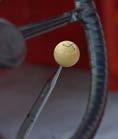

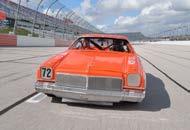

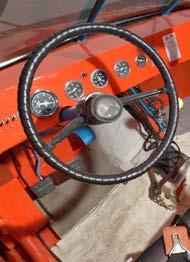

WINNING 1973 CHEVROLET CHEVELLE NO. 72 TO BE OFFERED AT KISSIMMEE 1973
MECUM.COM • 3 2 • MONTHLY OFFERED JANUARY 12 AT KISSIMMEE 2019 He had led the points since May, but a lap-13 collision ripped the entire side off the No. 72, which was unceremoniously towed back to the pits on wrecker. Led by passion, major thrash ensued that saw the team, plus sympathetic members from other teams, install and weld-in the complete door bars from another entry and replace all front and rear suspensions to get Parsons back on track again by lap 135. Missing an entire side of the vehicle, he could not race with this package, but he put enough laps on the scoreboard to retain his points lead by 67 points, take home the 1973 NASCAR Championship over Cale Yarborough, and become the only driver to win championships in both ARCA and NASCAR’s GN series to that time. How good was Parsons? He finished between third and fifth in series season points the remainder of the decade, 1974 to 1980, winning the 1975 Daytona 500 in the process. Retiring to the broadcast booth in 1988, where he was familiar face until his passing from cancer in 2007, Parsons has been honored by being inducted into the International Motorsports Hall of Fame (1994), NASCAR’s Top 50 Drivers (1998) and the NASCAR Hall of Fame (2017). This car was finished in time for that occasion and was displayed for one year in the Hall of Honor. As noted, revitalized to its 1973 raceready condition by Powell and members of the same crew that manned the Championship team, today the No. 72 Chevrolet sports a period-exact 427 Chevrolet engine rebuilt by GM’s Research and Development group in Detroit, backed by T10 Transmission and 9-3/8 Ford differential. It features correct-design exhaust for the era. Inside, this car retains the original seat recovered by the same man who originally upholstered it, the 1973 NASCAR roll cage, Stewart Warner gauges, Jones tach and Simpson safety belt. The wheels are Holman Moody and the tires are Goodyear bias-ply. final touch was the original gas cap, which one team member had kept since the 1973 Championship. Benny Parsons, praised as gentleman by his peers, would have appreciated the effort. Buyers now have the opportunity to become part of that legacy as its first new owner since its restoration was completed. MONTHLY MECUM.COM Parsons had grown up in the North Carolina hills of Wilkes County, relocating with his family to Detroit where he drove a taxicab as part of the family business. After start in the sportsman ranks, Parsons became more serious racer in the Midwest, winning back-to-back ARCA titles in 1968-69. After moving back south to start racing full-time on the Grand National Series, he began driving the No. 72 L.G. DeWittentered DeWitt Racing car, first with Ford, then Chevrolet for 1973. fearless and fierce competitor, Parsons, whom even Richard Petty credited with love of driving, took home win at Bristol and 21 top 15 finishes in 27 events that year before the season-ending 28th race at Rockingham. T P w & P n w h P n N 2 Ch D a y MECUM MAGAZINE LAYOUTS
By Geoff Stunkard • Photos by David Newhardt

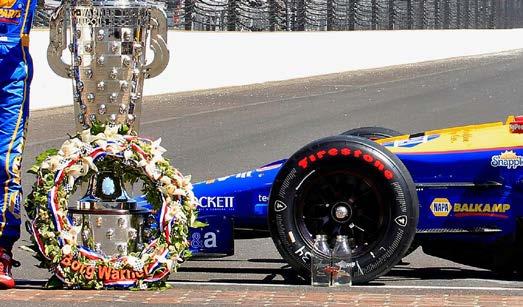
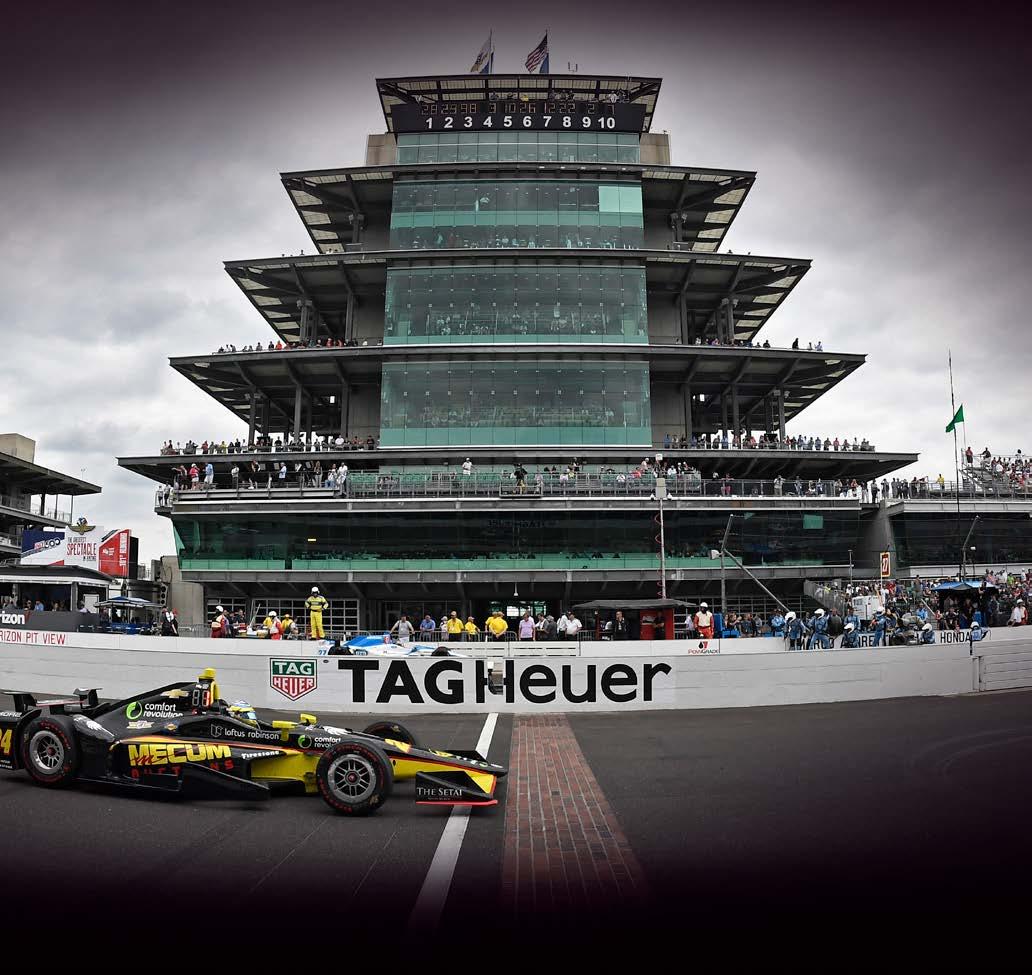
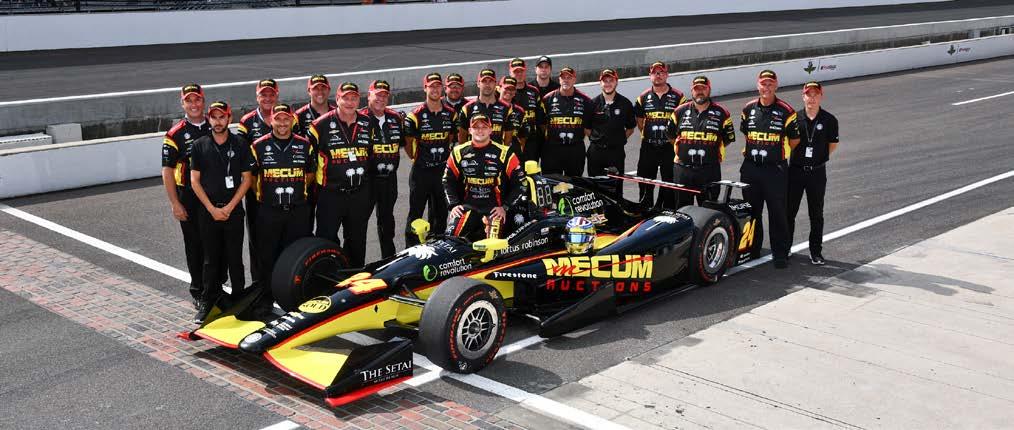


Sage Karam and the Mecum No. 24 Dreyer & Reinbold Racing Chevrolet took to the track at the Indianapolis Motor Speedway for the 101st running of the Indianapolis 500 on May 28th. The Mecum family, along with several Mecum employees and friends, attended the race to show their support for openwheel racing. The race marked Karam’s fourth time competing in the Indy 500, and at 22 years old, he remained the youngest driver in the field. Karam grew up across the street from the Andretti family in Nazareth, Pennsylvania, and has been racing karts since he was just 4 years old. Karam started 21st in this year’s race, and he moved steadily up to 12th at the halfway point of the race before an alternator issue stopped him at lap 125. “It’s unfortunate, but that’s what happens here,” Karam stated. “I just wanted to finish the whole race. We were on pace to do that. We had a top-10 car today. I was driving smart, and was as calm as could be. It’s unfortunate when something out of your control happens and you can’t fix it, but there’s nothing you can do about it … the DRR boys and Mecum Auctions put together a great car this month. It’s tough to see it go down like that. But that’s racing. The beauty of this place is it makes you want to come back more and more because you go through all these hard times. You just want to win.” SAGE KARAM AND THE MECUM NO. 24 DRR CHEVY 2 • MONTHLY PHOTOS COURTESY OF THE INDIANAPOLIS MOTOR SPEEDWAY AND PHOTOGRAPHER MIKE LEVITT The 100th Running of the Indianapolis 500 justifiably received more hype, pomp and circumstance than any of the 99 editions that preceded this centennial celebration of “The Greatest Spectacle in Racing.” Only one car will ever be able to lay claim to capturing this historic event: the 2012 Dallara DW12 Honda Indy Car offered here. Rookie driver Alexander Rossi drove this distinctive blue and yellow NAPA machine for Andretti Herta Autosport with Curb Agajanian to a stirring victory that shocked the estimated crowd of more than 350,000 people. Honda’s contributions to this fabulous machine are significant, as the company spent millions developing a slippery Speedway aerokit that is fitted around the car’s carbon-fiber/Kevlar/composite chassis. Monocoque construction incorporates the cockpit, front suspension and 18.5-gallon rupture-proof fuel cell. A stressed member of the chassis, the engine is coupled to an Xtrac gearbox with six forward gears and paddle shifters. The rear assembly contains the bellhousing, gearbox and rear suspension members, while stopping power comes courtesy of Brembo carbon discs and pads. One of the coolest features on the machine are the Firestone Firehawk tires with special sidewalls that contain the names of all 66 previous drivers that raced to victory in the Indianapolis 500 on Firestone tires. All of this high-tech speed is wrapped up in a package that weighs a mere 1,590 pounds. The end result is a machine capable of averaging 230 MPH around the 2.5-mile oval track at Indianapolis Motor Speedway. ANDRETTI RACING’S DALLARA PILOTED BY ALEXANDER ROSSI TO CROSS THE BLOCK IN MONTEREY WINNER 2016 BY ALEX YOVANOVICH INDY 500 MECUM.COM 3 2 MONTHLY



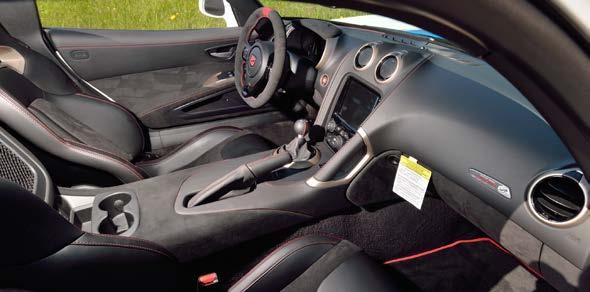
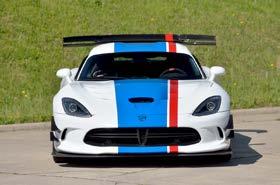
Evil. Wicked. Mean. Nasty. And proud of it all.
The Dodge Viper has been all of those since its inception, when automotive icons Robert Lutz and Carroll Shelby met in 1988 for a casual conversation about the state of the American performance scene and agreed that Chrysler could shake things up. This was years after Chrysler had abandoned the high-performance Field of Dreams to Ford and General Motors, and Chrysler president Lutz was looking for a way to expand his company’s image beyond that of a manufacturer of boxy family vans.
Shelby said in a 1992 interview, “We decided sitting right there that we wanted to build, the two of us, a ‘60s-type muscle car, a Cobra-type two-place sport car with some ‘90s technology in it,” the emphasis being on “some.”
Contrary to the ultra-exotic Porsche 959, then enjoying international acclaim, the car would be an exercise in ‘60s-style minimalism. “I like to build a car for fun transportation,” Shelby noted, invoking the legendary simplicity and durability of the Shelby Cobras and Mustangs, “and I don’t want so many gimmicks on it that something’s always going to go wrong with it when it’s 20 years old … As far as cost, Bob Lutz is not interested in Dodge building a $260,000 Ferrari F40, I can tell you that.” And so the basic die was cast: this new car, called the Viper, was to be the baddest hombre on the road, combining muscular style with a sprinkling of exotica and the performance to back it up in a lowproduction machine that would be exclusive but that wouldn’t break the bank.

Lutz presented his design brief to Chrysler Design Chief Tom Gale, who in turn showed a clay model to Lutz just months later. The finished concept was unveiled at the 1989 North American International Auto Show in Detroit, its signature feature being the V-10 engine that would set it apart from every other production performance car of its time. Having the Shelby cachet behind it was an enticement that got everyone’s attention, and the overwhelmingly positive public reaction encouraged Lutz and crew to begin production, which Chrysler Chairman Lee Iacocca greenlighted in May 1990. Just one year later, Shelby himself drove a pre-production pilot car to pace the 1991 Indianapolis 500, and in January 1992, the first production Viper RT/10 Roadsters were delivered to customers.
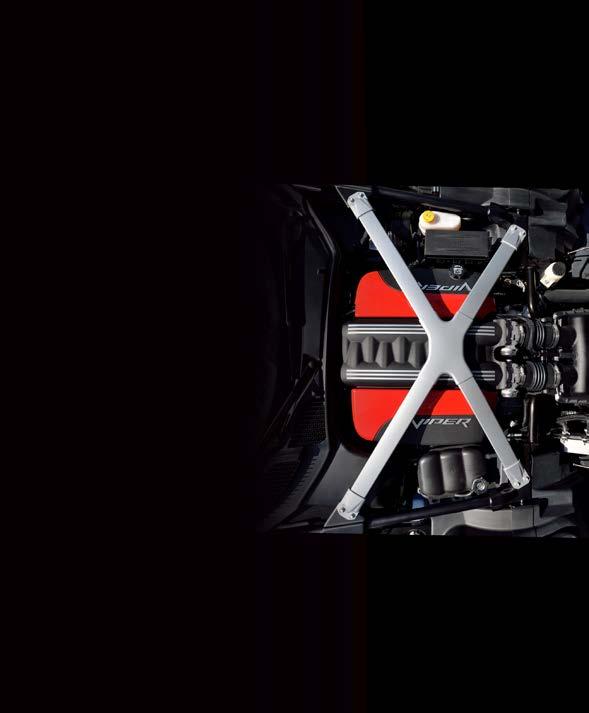

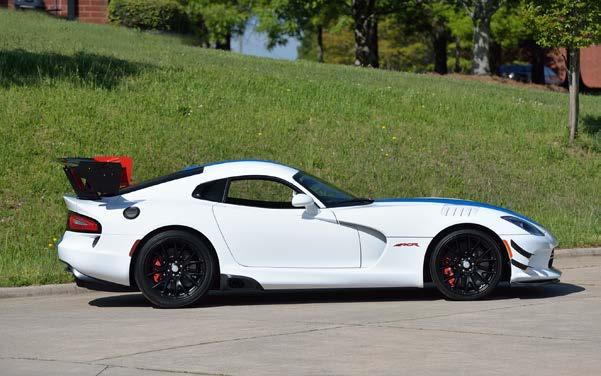
ByKaneRogers • PhotosbyDavidNewhardt 2 • MONTHLY MECUM.COM • 3 Because winning on Sunday has always translated into selling on Monday, Dodge capitalized on the Viper’s winning ways by issuing series of racing-inspired special editions, beginning with street-legal version of the GTS-R factory racer that celebrated the Viper’s first FIA GT2 World Championship (and Viper pilot Derek Bell’s Driver’s Cup title). Fortified with wind-tunnel-tested aero bits and a dual-plane rear spoiler, racing-tuned suspension and brakes, and walloping 460 HP and 500 lb-ft of torque, the GTS-R was as raw and ostentatious as any roadgoing production car ever offered, but Team Viper was just getting started. The 1999 Viper ACR (American Club Racer) was turnkey SCCA-ready racer stripped of its sound and air conditioning systems and equipped with special Dynamic Suspensions components, Meritor springs and huge Michelin Pilot Sport tires on special 20-spoke BBS wheels. The third-generation Viper SRT-10 debuted in 2003 in convertible form only, but packaged in edgier, more aggressive-looking bodywork on a stiffer chassis and offering far more refinement in its redesigned cockpit. Adding to its allure were a 50-pound drop in weight and an increase in power to 500 horses. The Viper coupe returned in 2006 under the SRT-10 designation and with 510 HP, but it was the last hurrah for the third-gen Viper before production ceased in preparation for the fourthgeneration 2008 model and the return of the race-ready ACR coupe, 50 of which were produced for the Viper Cup competition series. The fourth-generation Viper turned up the heat on its competitors with 100 more horses, vastly improved aerodynamics and milestone top speed of 202 MPH. Viper production once again ceased at the end of 2010 after 50-car ACR “Final Edition” series rolled off the Conner Avenue Assembly Plant line. On September 14, 2011, 2010 Dodge Viper SRT-10 ACR coupe recorded 7:12.13 elapsed time at the notorious Nürburgring Nordschleife circuit, the sixth-fastest production, street-legal car lap ever recorded there. The fifth-generation Viper introduced in 2013 was the final and most magnificent chapter in the Viper saga. It marked a return to the original car’s rounded contours, but sharp-edged accents and a bold new front-end treatment set apart from earlier generations in dramatic fashion. The plastic and fiberglass used in the body and construction in past generations gave way to extensive use of carbon fiber and aluminum, and the driving experience was enhanced with the introduction of electronic stability controls, cruise control and launch control. Its specifications were simply astounding: the gorilla-grade V-10 now delivered 640 HP and 605 lb-ft of torque, 3.7-second 0-60 MPH times and a top speed of 206 MPH. After Fiat Chrysler announced the end of Viper production scheduled for August 31, 2017, Dodge paid tribute to the Viper’s legendary status and loyal owner base with series of five special editions, the last of which was the 25th Anniversary Dodge Dealer Edition ACR. Offered through the country’s top two Viper dealers—Tomball Dodge of Tomball, Texas, and Roanoke Dodge of Roanoke, Illinois—production was originally limited to just 33 cars before that number was reduced to 22, each one decorated in Viper White paint with Competition Blue center stripe and an Adrenaline Red driver’s stripe. Among the most exclusive editions in the Viper’s history, the Dealer Edition ACR employed the ultimate 8.4L V-10 rated at 645 HP, a 6-speed manual transmission, 10-position manually adjustable suspension, 19-inch ACR gloss black wheels with Kumho ACR racing radials, the Extreme Aero Package with carbon-fiber rear wing, front splitter and corner strakes, and Brembo carbon-ceramic disc brakes. Inside, the production ACR interior featured black Alcantara seat and steering-wheel covering, red stitching, Harmon Kardon 12-speaker audio system, 8.4-inch touchscreen, GPS navigation and backup camera and exclusive Dealer Edition ACR badging. The example coming to Mecum’s Harrisburg 2018 auction boasts just 11 actual miles and wears No. 4 of the total 22 built. And so the Viper has come full circle, going out with the same brash bang that it came in with, always the bad boy of the performance set, never tamed, always ready to rumble, the quintessential American muscle machine. OFFERED AUGUST 4 AT HARRISBURG 2018 DEALER EDITION ACR EMPLOYED THE ULTIMATE 8.4L V-10 RATED AT 645 HP MECUM.COM The most purposeful American performance car since the Shelby Cobra, the first-generation Viper RT/10 Roadster fulfilled Shelby’s promise of no-frills “sport car” in the Cobra tradition, deviating very little from the concept car first presented to the public in 1989. The scandalously curvaceous bodywork, prominent side exhaust and mega-width tires were all present and accounted for; there was no roof, just removable canvas top stretched between the windshield and the roll bar; and there were zip-out vinyl side curtains, no outside door handles and no air conditioning. Another promise the Viper kept was that of delivering overwhelming power and performance. Derived from Dodge’s superbly engineered truck engine line, its 8.0L/400 HP V-10 pushrod engine was based on an aluminum block cast by then-Chrysler subsidiary Lamborghini. While its cross-laced intake runners, finned plenums and Ferrari-inspired red crinkle finish suggested temperamental exotica, the V-10’s conventional architecture delivered both low-speed tractability and breathtaking acceleration. Tying the Viper together was welded tube steel space frame incorporating all-independent unequal-length A-arm suspension, power steering and robust 13-inch vented power disc brakes. The Viper rode on insanely wide Michelin tires on 17x10.5-inch front and 17x13-inch rear wheels that generated almost a full G in skid-pad testing. Cockpit design was clearly tailored to the driver, offering simple layout with easy-to-read white-faced gauges, gray leather upholstery, heat/ventilation system, standard AM/FM cassette stereo and black leather on the steering wheel, 6-speed shifter and parking-brake handle. COCKPIT DESIGN WAS CLEARLY TAILORED TO THE DRIVER The Chrysler Design Center found fresh inspiration from the original Cobra for its coupe version of the Viper, the Viper GTS. Introduced late in the 1995 model year, the GTS incorporated all the changes slated for the second generation wrapped in lovely yet aggressive-looking fastback bodywork that borrowed the rounded roof, all-glass hatchback and rear spoiler of the Pete Brock-designed Daytona Cobra coupe. While the RT/10 Roadster received interim changes that included boost to 415 HP, the GTS was 90-percent new, packing 450 HP and offering air conditioning, power side windows and door locks as standard equipment, and looked absolutely stunning in the rich Shelby Blue with white stripes inspired by the FIA World Manufacturers Championship-winning Daytona coupe. The GTS gave buyers new level of civility while also doubling down on its already brutish performance, but, perhaps more importantly to Dodge’s image-makers, it positioned the Viper to attack the world of international motorsport. Among its many accomplishments were FIA GT2 and GT World Championships in 1997, 1998 and 1999, three consecutive class wins at the 24 Hours of Le Mans from 1998 to 2000 (Viper fans loved subsequent Chrysler ad that simply read: “Le Mans 24: Ours.”), and perhaps most significantly, the overall victory in the 2000 24 Hours of Daytona. It’s also necessary to note victories at such landmark circuits as Silverstone, Hockenheim, Monza, Mosport and Laguna Seca. MECUM MAGAZINE LAYOUTS

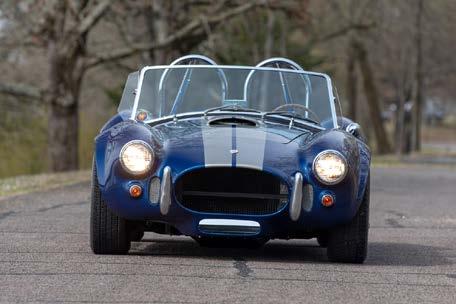
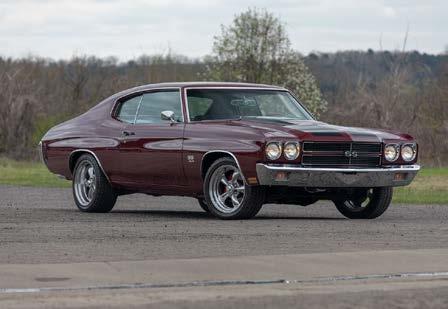

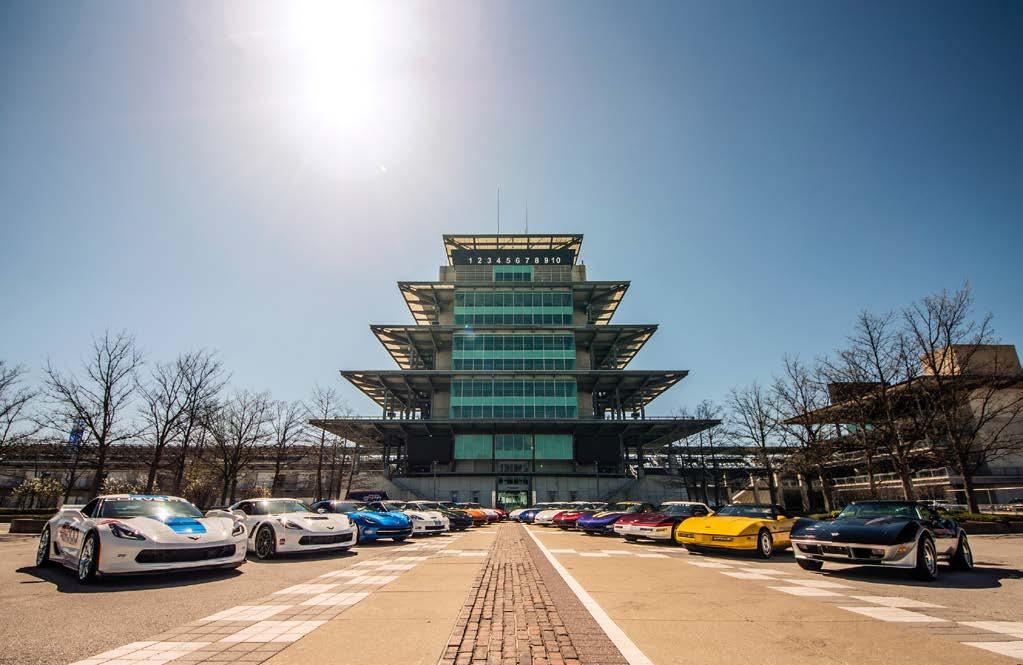


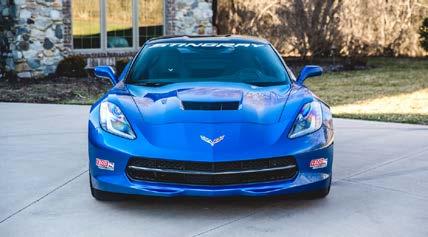
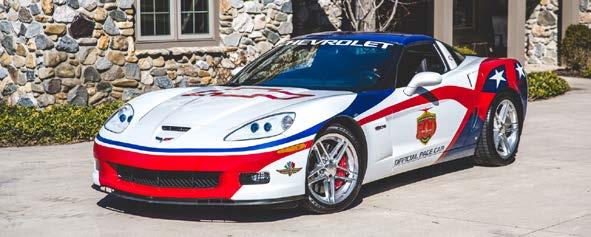
AMERICA’S PACE CAR THE ONLY PRIVATELY OWNED COMPLETE COLLECTION OF INDY 500 CORVETTE PACE CAR EDITIONS T he pace car has been a tradition at the Indianapolis 500 since the race’s inception in 1911, when Indianapolis Motor Speedway founder Carl G. Fisher conceived a marshaled rolling start as the safest way to get the large field of racers underway. Since then, 101 different vehicles have served duty as the Official Pace Car of the Indianapolis 500 up to 2017, 52 of them—a bare majority, but a majority, nonetheless—the product of General Motors. Of those, the Chevrolet Corvette ranks as the most frequently chosen for pace car duties, having served 14 times, which leads us to the subject of our story: the world’s only privately owned complete collection of Indianapolis 500 Corvette Pace Car editions and the history it represents. It no doubt initially surprises most of us that only one such private collection exists, if only because the Indy 500 and the Chevrolet Corvette are two of America’s most lasting and significant contributions to the automotive culture—not just here, but around the world. And yet the group of Corvette Pace Car editions assembled by Keith Busse of Fort Wayne, Indiana, is the only collection in private hands comprising every edition. In recent years, the official pace cars have been produced and earmarked for placement in the Indianapolis Motor Speedway Museum and GM’s Heritage Collection, but no individual collector has been afforded such a luxury. And so it is that Indiana-native Busse, a highly successful industrialist, educator, mentor and philanthropist and a dedicated Corvette enthusiast, has added at least one of every Corvette Pace Car into his personal Corvette collection, one of the world’s largest and most comprehensive. Now slated to cross the auction block at Dana Mecum’s 31st Original Spring Classic, the collection will first be offered together as one complete set; however, if an acceptable offer of purchase is not achieved, each car will then be offered individually without reserve. Additionally, two tickets to the 102nd Running of the Indianapolis 500 Race on May 27, 2018, will also be included with each car. As an added bonus for the philanthropic, proceeds from the sale of The Keith Busse Corvette Pace Car Collection will benefit the Keith Busse Automotive and Classic Art Foundation, which seeks to provide financial support to higher educational institutions and charitable organizations in Northeast Indiana. By Kane Rogers • Photos by Teddy Pieper 2 • MONTHLY AN ECLECTIC OFFERING THE ELKIN BROTHERS COLLECTION WILL HELP KICK OFF MECUM’S DEBUT IN TULSA THIS JUNE STORY BY CHELSEY HINSENKAMP • PHOTOS BY DANIEL HATCHETT or many enthusiasts, the deep love of all things automotive is activated by one, single, significant vehicle—maybe it was the first Corvette they ever laid eyes on, or maybe it was the old Cadillac that Grandpa drove to take them out for ice cream, or their own first car purchased with the savings they managed to squirrel away throughout years of slinging newspapers from sidewalks to porches, narrowly avoiding death-by-dog encounters day after dogged day. For brothers Dwayne and Leo Elkin—who will offer a collection of 14 vehicles at Mecum’s newest auction in Tulsa, Oklahoma— the vehicle that stirred awake their automotive passions was something a bit more rugged than any Corvette or vintage Cadillac, but it did come by way of hard work. As the sons of a sawmill owner and operator, the brothers’ first experience behind the wheel of a motorized vehicle was at the helm of the family pickup truck. “(It) was passed down from family to family to family,” Dwayne explained. “When the
driver throughout high school, after which he passed it down to his younger brother, who, in turn, left it for the youngest of the Elkin boys when he graduated. Sadly, it was sold after the youngest Elkin was through with it, and the family soon lost track of its whereabouts. Nevertheless, it was that truck that started a lifelong love affair with autos for both Dwayne and Leo. Before either could fully indulge in and enjoy that budding relationship, however, the two first had to create sustainable life and career paths for themselves and their own growing families. “Me and my dad were the mechanics of the family,” Dwayne explained. “We had sawmills when we were children, and worked on everything from the sawmill to 18-wheelers to jet boats.” While he developed quite the acumen surrounding the sawmill industry—skills that served him well for many years and still do to this day—his mechanical inclinations ultimately led Dwayne down a different path than that of his father. After outgrowing the family sawmill business, Dwayne eventually joined forces with his brother, Leo, and the two launched their own welding and fabrication business, F and S Metal Works; but not before Dwayne’s path took a few winding detours to get there.
motor went bad in it, my dad took it somewhere and they put a Hot Rod motor in it, and it was actually the fastest truck in Hot Springs (Arkansas) for a while. And that’s where my love of horsepower came from.” Dwayne said the truck became his daily
2 MECUM.COM
Signed copies of Pirsig’s books and other collectibles to be offered at Las Vegas 2021 Story by Hailey
I
n 1968, the late Robert Pirsig, his 11-year-old son Chris and another couple made an epic motorcycle trip from Minnesota to San Francisco; the Pirsigs made the journey on a 1966 Honda Super Hawk that Robert had taught himself to maintain and repair and which now resides in the Smithsonian Museum. This trip would form the backdrop for one of the most celebrated motorcycle books ever written about culture and philosophy, “Zen and the Art of Motorcycle Maintenance,” which was translated into 27 languages with 5 million copies sold after its publication in 1974. In the book, Pirsig relies on tools and their myriad uses as an allegory for the different philosophical approaches of romanticism and classicism in the pursuit of quality. Quality is the central goal in the book, and Pirsig refers to it with a capital Q at least 400 times.
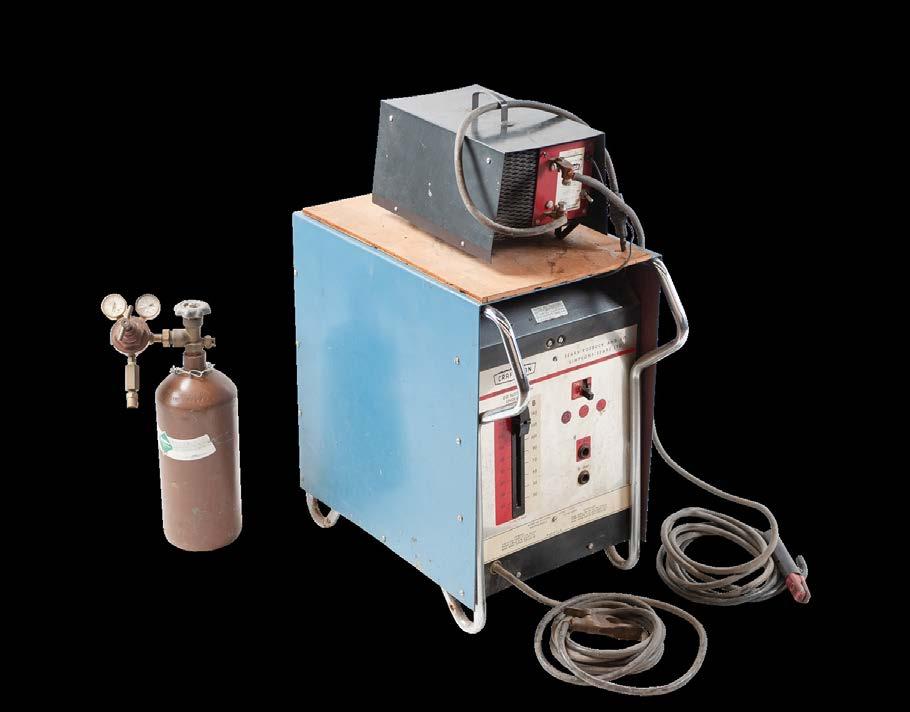
Philosopher’s Story AND THE “To run a cycle with parts in it you’ve made yourself gives you a special feeling you can’t possibly get from strictly store-bought parts.”
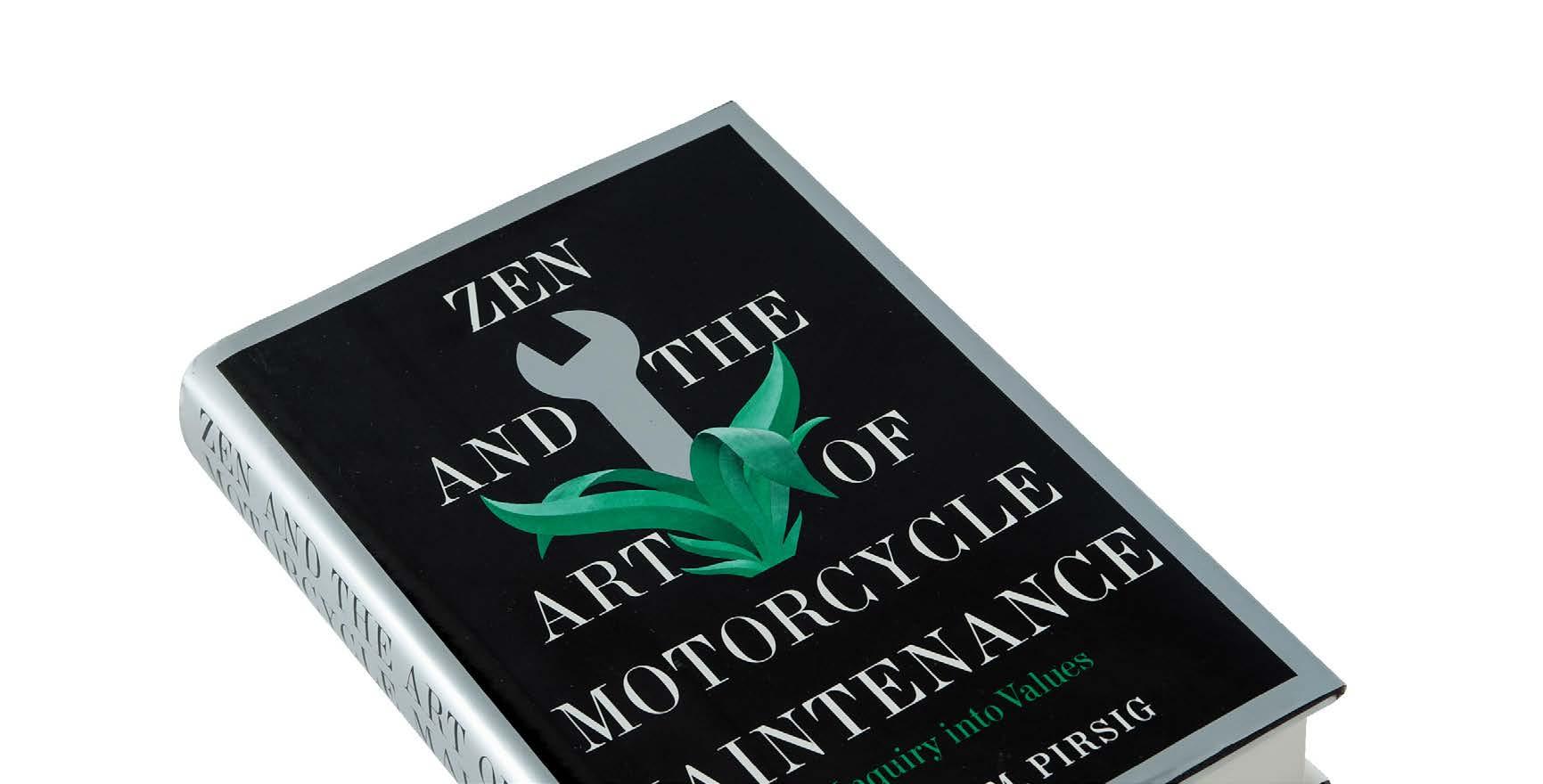
Pirsig was a lifetime avid tinkerer and utilized all types of tools, and over the years, he amassed a collection capable of remedying most types of mechanical problems. Often, the innovative and resourceful Pirsig would go as far as to modify or even create tools to serve a singular, specific function. Mecum Auctions is proud to present many of those inventive, purpose-built tools (and many of his standard ones as well) at the upcoming Las Vegas motorcycle auction—an assemblage that ranges in size from the smallest hand tools to a hydraulic press he built from scratch, his beloved welders and torch set, handmade brick-topped welding table and many power tools, some of which are specifically mentioned in his book. To cap off the offering from his personal collection are autographed copies of both “Zen and the Art of Motorcycle Maintenance” and his second book “Lila,” along with the white rain suit he wore on the trip as well as his “British laminated plateglass goggles” referenced in the book. This is a once-ina-lifetime opportunity to own a historically significant and museum-worthy collection tied directly to one of the world’s greatest motorcycle-meets-philosophy books and its pioneering author.
- From “Zen and the Art of Motorcycle Maintenance”
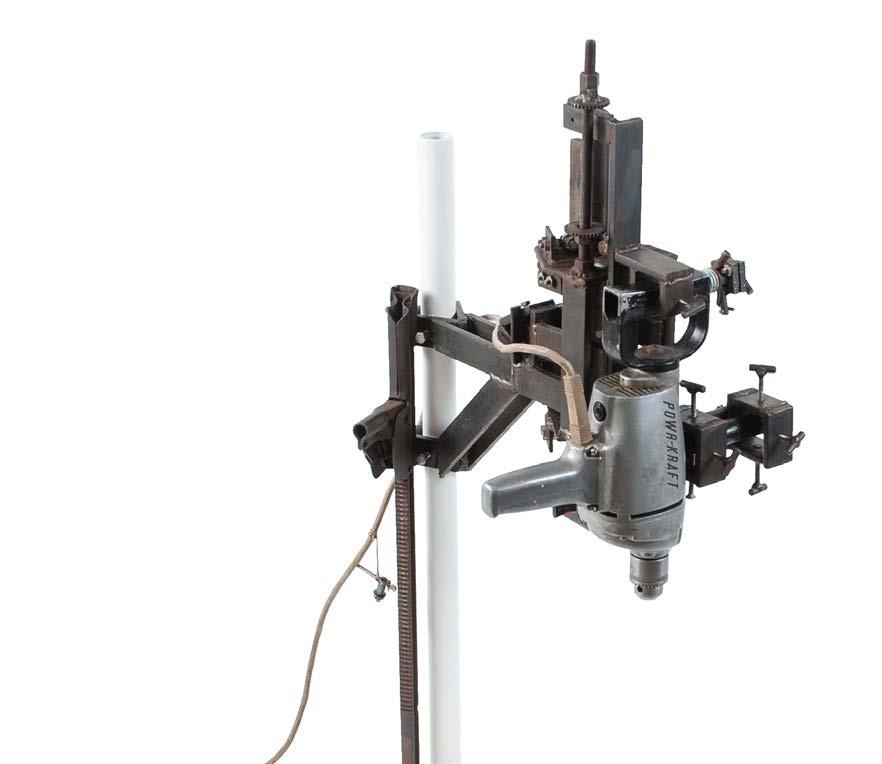


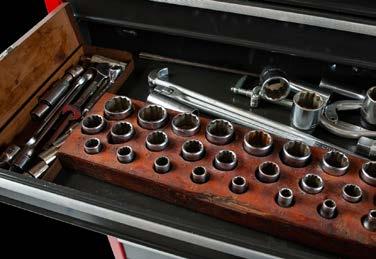
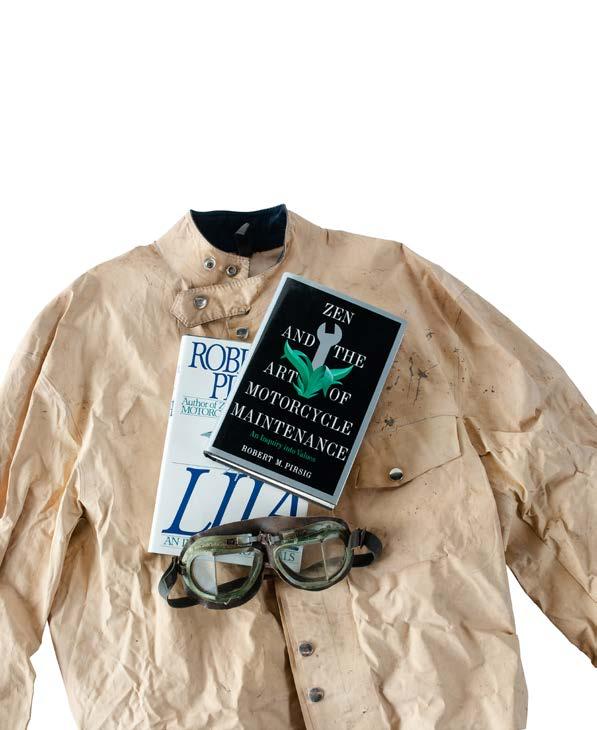



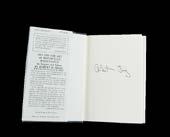

ROBERT PIRSIG
Schulte MECUM.COM • 3 With telling of life’s ruminations accompanied by the depicted “ugliness” of industrialization, Pirsig’s “Zen and the Art of Motorcycle Maintenance” is tale of seeking balance in the everyday world. By weaving in the ideals of everything from Taoism to ancient Greek philosophies with the tales of his personal epic, Pirsig illustrated figurative and thought-provoking narrative of finding the true meaning of equilibrium. According to Pirsig’s widow, Wendy, “Bob’s philosophy explored human values, and he aimed to show how quality actually at the center of all existence.” Upon his return from the original, novel-inspiring trip, Pirsig set out to get his work published. It took nearly seven years and more than 120 rejections for his novel to find path to mass production, but once it fell into the hands of William Marrow and Company, “Zen and the Art of Motorcycle Maintenance” hit the shelves of bookstores around the country and was scooped up by readers everywhere. Both gearheads and theorists found solace in the way Pirsig scrawled his speculations on paper, and it is because of this that his work is considered classic and is still celebrated today. With his collection of personally reworked tools to aid him on his epic cross-country journey, Pirsig was able to curate one of the most well-known motor-centric books of all time. Said to be one of the most influential pieces of motorcycle literature ever written, it is no surprise that signed copy of “Zen and the Art of Motorcycle Maintenance”—along with Pirsig’s Honda—was rehomed at the Smithsonian Museum in 2019. Pirsig’s philosophies have long since inspired thinkers and tinkerers alike. With signed copy of “Zen and the Art of Motorcycle Maintenance: An Inquiry into Values,” signed copy of “Lila: An Inquiry into Morals,” Pirsig’s personal raincoat and his impressive, pioneering hand-modified tools all to be offered as one lot in Las Vegas, Pirsig’s legacy is sure to extend even further into the future as bidders go head-to-head to make this prestigious collectible trove their own. TO BE OFFERED AT MECUM LAS VEGAS 2021 MECUM.COM Pirsig was born Midwesterner, growing up in Minneapolis, Minnesota, where he learned the ins and outs of the mechanical field, but he had longing for something more. Determined to broaden his mind and worldly understanding, Pirsig set out to learn about the depths of philosophy; he studied at the University of Minneapolis, spent year in India and later received his PhD in philosophy from the University of Chicago. nomad of knowledge, Pirsig took it into his own hands to expand his horizons, and he did so by questioning opposing ways of thinking and comparing the knowledge he had of topics like machinery to the grand-scale concepts of human behavior. Pirsig took his love for knowledge and adventure and placed into the hobby of motorcycle riding. With 1966 Honda serving as his weapon of choice, Pirsig mapped out nearly cross-country trip that was supposed to be recreational and embarked on what would ultimately be an expansive, 17-day journey with no other agenda than to enjoy his time. He gathered his son, Chris, and his friends John and Sylvia Sutherland and headed away from Minnesota to the golden coast of San Francisco, California. However, along the way, Pirsig began to notice that the intimacy that motorcycle riding grants its motorist is grounds for analysis. From the seat of his Honda, Pirsig took in the world, noting that motorcycle travel demands full attention, and there is an intimacy in the intricate way of handling such machine while cruising down the backroads of the United States. With the Sutherlands by his side, Pirsig also began noticing the different needs of his older machine than those of the Sutherlands’ expensive new BMW. was this comparative nature of his Honda that helped him perfectly curate the over-arching metaphor of his novel by successfully marrying his appreciation for motorcycles and his knowledge of philosophy together into one fluid idea. Based on his 1968 5,700-mile, cross country trip, “Zen and the Art of Motorcycle Maintenance” is an enjoyable blend of philosophy-meets-mechanics. The fictionalized autobiography follows the story of narrator, one representative of Pirsig, who analyzes two separate ideologies toward life. Where the narrator’s riding companion is a romantic with a newer model motorcycle, ready to live in the now and utilize the help of professional mechanics, the narrator the owner of slightly older motorcycle who yearns for deeper understanding of the ins and outs of his machine, partaking in its maintenance and repair firsthand and often with hand-modified tools, such as the ones available here for auction. Throughout it all, the motorcycles and their maintenance represent the idea that quality is at the center of all inner peace. “The metal of these wrenches is so cold it hurts the hands. But it’s good hurt. It’s real, not imaginary, and it’s here, absolutely, in my hand…” - From “Zen and the Art of Motorcycle Maintenance” MECUM MAGAZINE LAYOUTS

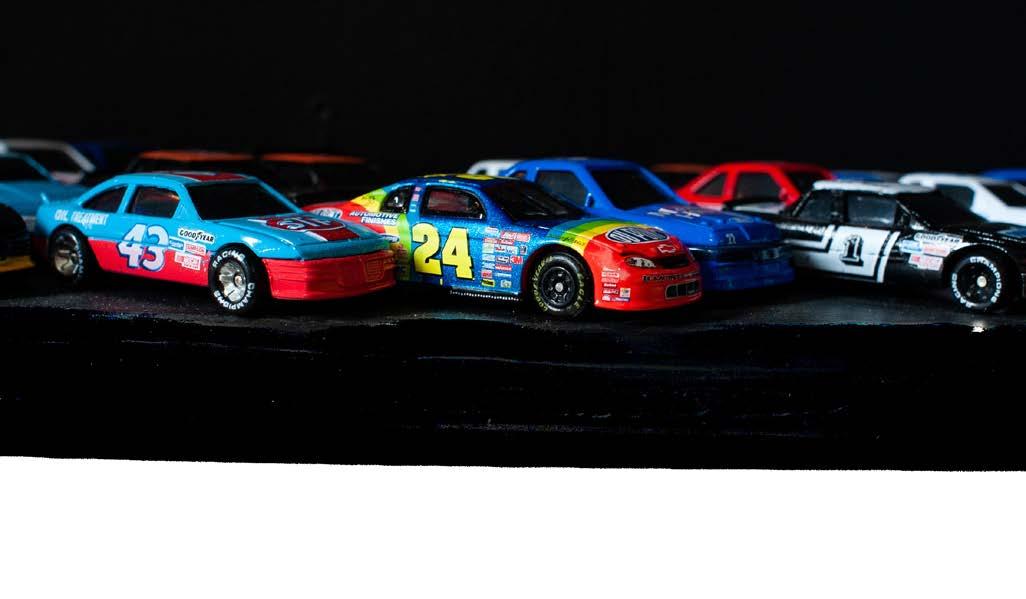
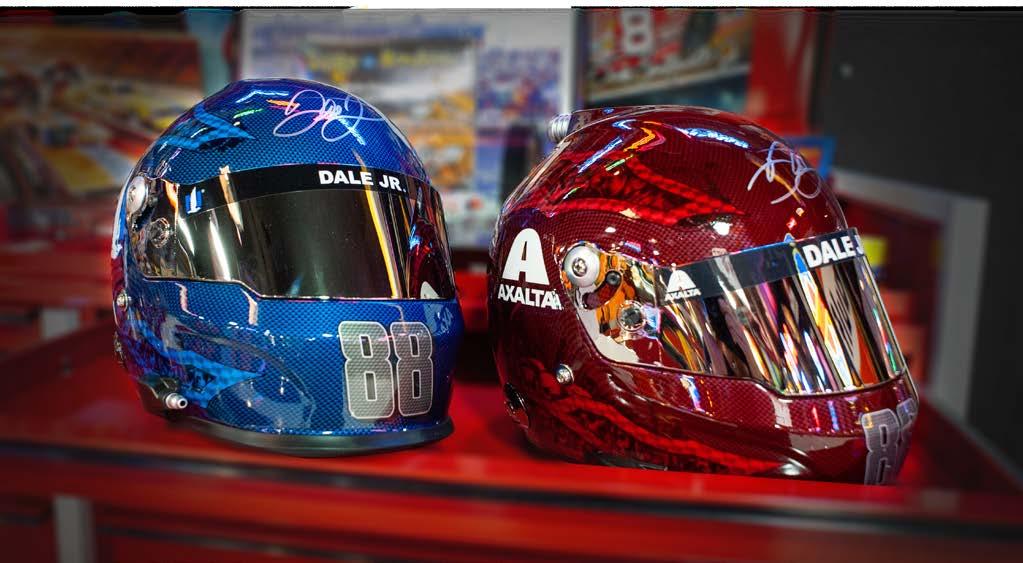


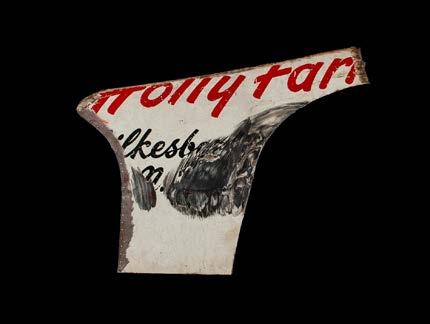
T hroughout history, sports have served as breeding grounds for legendary figures, some of whom are simply admired and adored, and some of whom fans aspire to be. From the days of gladiators and the earliest Olympics, competitors have been put on a pedestal, recognized as being the strongest, fastest or the all-around greatest in their particular pursuit, whatever that might be. Throughout the past century, athletes like Johnny Unitas, Babe Ruth, Michael Jordan, Muhammad Ali and more have become legends, their names almost synonymous with their respective sports. The motorsports world is no different, with NASCAR having risen to that very same legendary status, bringing some of the greatest drivers in history along for the ride. NASCAR has risen from the days of running illegal liquor by moonlight in souped-up Hot Rods to become a full-on sports spectacle with numerous series and races that are so familiar—like the Daytona 500—that even those who aren’t racing fanatics have heard of them. Likewise, there are also drivers’ names that have become so well known for track domination, they’re now engrained in the public’s mind. Junior Johnson, Richard Petty, Dale Earnhardt Sr., Dick Trickle, Jeff Gordon and more have all joined the ranks of legends, their cars and recognizable numbers and color schemes following them into the limelight. Just like with other sports, the names, signatures, likeness and cars of the legends of NASCAR have found their way onto numerous pieces of memorabilia, giving fanatics something tangible to add to their collections and help them feel as if they too are a part of the NASCAR legacy. From trading cards, posters, flags, models and neon signs to the rarer and more obscure collectibles, such as driving helmets, jackets, race suits and pieces of actual cars, collectors have found countless ways to bring the sport into their homes and collections. With an ever-growing market of active collectors buying, selling and trading these goods, many of these pieces of memorabilia find their way to the public auction format, offering like-minded NASCAR fans and aficionados an opportunity to add, or even start, their very own collection of unique and rare pieces of NASCAR history. Start your engines BIDDERS: NASCAR COLLECTIBLES ARE A POPULAR AND ENDURING GENRE AMONG MOTORSPORTS ENTHUSIASTS STORY BY KELLEN OLSHEFSKI NASCAR SERIES MATCHBOX TOYS JUNIOR JOHNSON REAR QUARTER PANEL PIECE DALE EARNHARDT SR. GM GOODWRENCH RACING JACKET NASCAR INDIANAPOLIS MOTOR SPEEDWAY BANNER DALE EARNHARDT JR. AUTOGRAPHED HELMETS 2 • MECUM.COM T he event is called the Muscle Car & Corvette Nationals, or MCACN, held in the Stephens Convention Center in Rosemont, Illinois, a western suburb of Chicago located a mere 10 minutes from O’Hare International Airport. The sprawling facility hosts many events each season, but on the weekend before Thanksgiving, it becomes perhaps the very best collection of muscle cars assembled under one roof, each and every year. That is because MCACN showcases truly the best of the best, replicating, in some ways, some of the large automobile shows of the past, with exciting unveilings and lots of things to see. Show manager Bob Ashton had experience in the show-car world before taking on this responsibility, and his effort is aided by a group of very dedicated helpers who make sure things are ready to go when the doors open on Saturday morning. We are not talking about a mere display but a show that strives to gather the very best or most important cars in history. They have never failed to deliver on this intention, regardless of weather or the economy. If you are invited, you show up … THE GREATEST MUSEUM IN THE WORLD MECUM PROUDLY SUPPORTS MCACN, PERHAPS THE GREATEST SHOW FOR RARE MUSCLE They arrive by the truckload from everywhere in North America, flooding the local parking lots with trailers. Load-in begins promptly on Friday morning, and you are never sure what car may be coming out of the next transporter. Whatever it is, somebody is probably very honored it was invited to be here this weekend. Story by Geoff Stunkard Photos by David Newhardt MECUM.COM 3 2 MONTHLY




Brake Time
While the wheel first came around in about 3500 B.C., according to the Smithsonian, it would still be about another 300 years before they were finally slapped on chariots and actually used for transportation purposes; but, just like that, the world was on a roll. However, this newfound movement also created a new problem. As Sir Isaac Newton’s first law of motion points out, an object in motion stays in motion unless acted upon by an unbalanced force. So, as transportation evolved over the centuries, there eventually came a point when mankind began moving fast enough that it also needed a tool to help it slow back down; enter the invention of brakes.
Brakes first made their way onto the scene in the 19th century, and by the turn of the 20th century, they had found a new use with motorized vehicles. For early motorcycles—essentially bicycles with clip-on motors—this first came in the form of spoon brakes, believed to have been introduced in 1902 by Steffey Motorcycles of Philadelphia. Similar to those used on the bicycles of the era, the spoon brake basically pressed a leather or metal pad against the front tire to slow the bike down; while it wasn’t
the most efficient braking system, it was what was available at the time and undoubtedly a huge improvement over relying on prayers while letting off the throttle and sticking out your legs to (hopefully) bring yourself to a stop.
However, coaster brakes—first invented in 1898—quickly overshadowed spoon brakes, especially when it came to motorcycles. Coaster brakes were essentially an early form of the drum brake that was incorporated into the rear wheel with an internal freewheel. The freewheel allowed movement when pedaling forward or not pedaling at all (coasting), and when the pedals were moved backwards, a screw drove the clutch in the opposite direction of the moving axle, forcing it between two brake shoes and pressing them against the brake mantle, or into a split collar that then expanded against the mantle. Coaster brakes were very prominent among early motorcycles, with both Harley-Davidson and Indian using them exclusively throughout their early production years. A simpler design is still even used today on many single-speed bicycles, such as beach cruisers and children’s bicycles.

BRAKING SYSTEMS THROUGHOUT HISTORY
THE EVOLUTION OF MOTORCYCLE
BY KELLEN OLSHEFSKI MECUM.COM • 3 By the end of that first decade of motorcycle production, many manufacturers had switched to external band brakes. An obvious improvement over its predecessor when it came to slowing down from high speeds, the external band brake featured band of friction material that tightened around cylindrical drum on the rear wheel, either helping to slow it down or preventing the rear wheel from moving altogether. While they were simple, rugged and able to generate high force with light input, the band brakes too had their own set of problems. Light rust on the drum could cause the brake to grab or chatter; water on the drum could cause the brake to slip; and as the system heated up, brake force could drop sharply. While the band brakes were a viable solution in the early years, as motorcycle manufacturers continued to improve their engines and designs, and roadways around the world allowed for greater speeds, more efficient method of coming to halt was needed. The 1920s saw the introduction of motorcycle drum brakes, the basic idea of which is still used in numerous applications today, albeit much more refined and improved version. Their first recorded use was in car built by Maybach in 1900, and they were soon fitted to motorcycles as well. Similar to the spoon brakes of old in sense, the contraption worked by creating friction through the pressing of pad against the rotating object to slow it. However, with the drum brakes, these pads—or brake shoes— were pressed against the inside of cylindrical drum that was attached to and rotated with the rear wheel. When the brake lever was used, would cause pair of brake shoes to expand outward, pressing against the inside walls of the spinning drum and creating friction to help slow the motorcycle. At first, these brake shoes were of leading/trailing design, meaning that single cam would press the leading edge of one shoe and the trailing edge of the other against the inside of the drum. However, a twin leading-shoe design with two separate cams that pushed the leading edge of their respective shoes into the brake drum proved to be superior when it came to stopping forward motion. While this meant braking while traveling in reverse wasn’t as great as before, there really wasn’t as much of need for extreme reverse stopping power anyways. And as motorcycle power and speed improved once again, the twin leading-shoe drum-brake system was also applied to the front wheels, providing even more stopping power. As suspected, though, drum brakes also had their pitfalls, mainly heat. With the brake shoes enclosed within the drum, excess heat was retained, ultimately leading to brake fade and greatly affecting brake performance. As such, motorcycle manufacturers began adding external fins and vents to the brake drums that directed cooler, outside air to the drums to help keep them from reaching such high temperatures and destroying the brake shoes; AJS believed to be the very first manufacturer to employ this method. It was an impressive solution that certainly helped, evidenced by the fact that drum brakes are still used today on cars, and in some applications, on motorcycles as well, but ultimately, the use of a drum brake front and back would be replaced by newcomer to the motorcycle scene by the end of the 1960s. saoc t e r b r a kes b a n d b r a k e s RD U M a k es The venerable disc brake system had found its way into the motorized world by the mid-1950s, primarily for use on race cars, but wasn’t until the early 1960s that was first applied to two-wheeled machine. It was Lambretta in 1962 that would be the first to fit disc brake to motorcycle, and in this case, it was front disc brake made by Campagnolo that was fitted to the company’s TV scooter. Others soon followed suit, including MV Agusta with its limited-production 600cc touring motorcycle of 1965 that featured pair of Campagnolo front disc brakes. At that time, disc brakes were still used primarily for racing purposes, though, in 1969, Honda introduced the world to the first mass-produced motorcycle to feature disc brake, its CB750, which featured a hydraulically operated single-piston sliding caliper with a front disc. Disc brakes tackled the drum brake’s biggest enemy, heat, in surprisingly simple way. Unlike the drum brakes, nearly all of the components of a disc brake are exposed to the elements, including the rotor, caliper and the brake pads that press against the rotor, applying the needed friction to bring the motorcycle to stop. As such, with air constantly flowing over the braking system, the heat created by braking dissipates much, much quicker, making disc brakes the drum brake’s superior. In fact, by the end of the 1970s, disc brakes had proven so efficient and popular that they had essentially become standard on both the front and rear of motorcycles, practice that still largely continues to this day. Naturally they’ve been improved upon over time with various advancements, such as the addition of multiple pistons within the calipers allowing for longer brake pads, more friction and more stopping power, and also with features like the “floating disc” and even anti-lock braking systems, first introduced by BMW in 1989 on the BMW K100 LT. While disc brakes continue to reign as king today, improvements and advancements to the braking system are continually being made. More recent developments have already improved motorcycle braking safety even further, such as system that counters the brake pads from being forced away from the rotor during high-speed oscillation of the front wheel, and such evolution will continue unabated. Though disc brakes today may seem to be the pinnacle of braking design and technology, it’s always possibility that the next great development is right around the corner ready to stop you in your tracks—just as good brakes should. ID S C b r a k e s MECUM MAGAZINE LAYOUTS
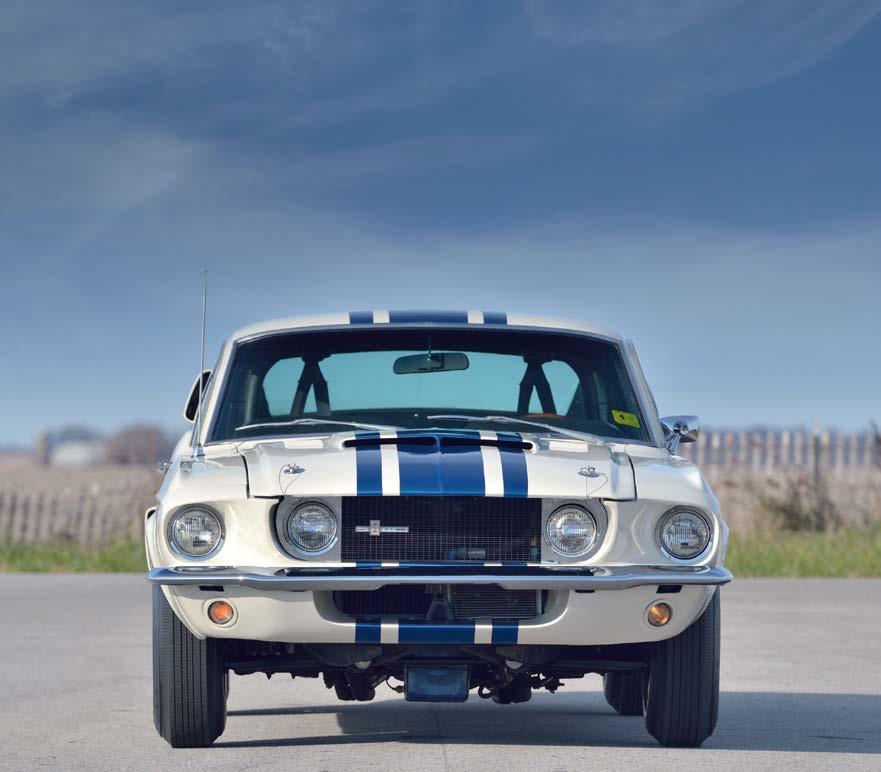





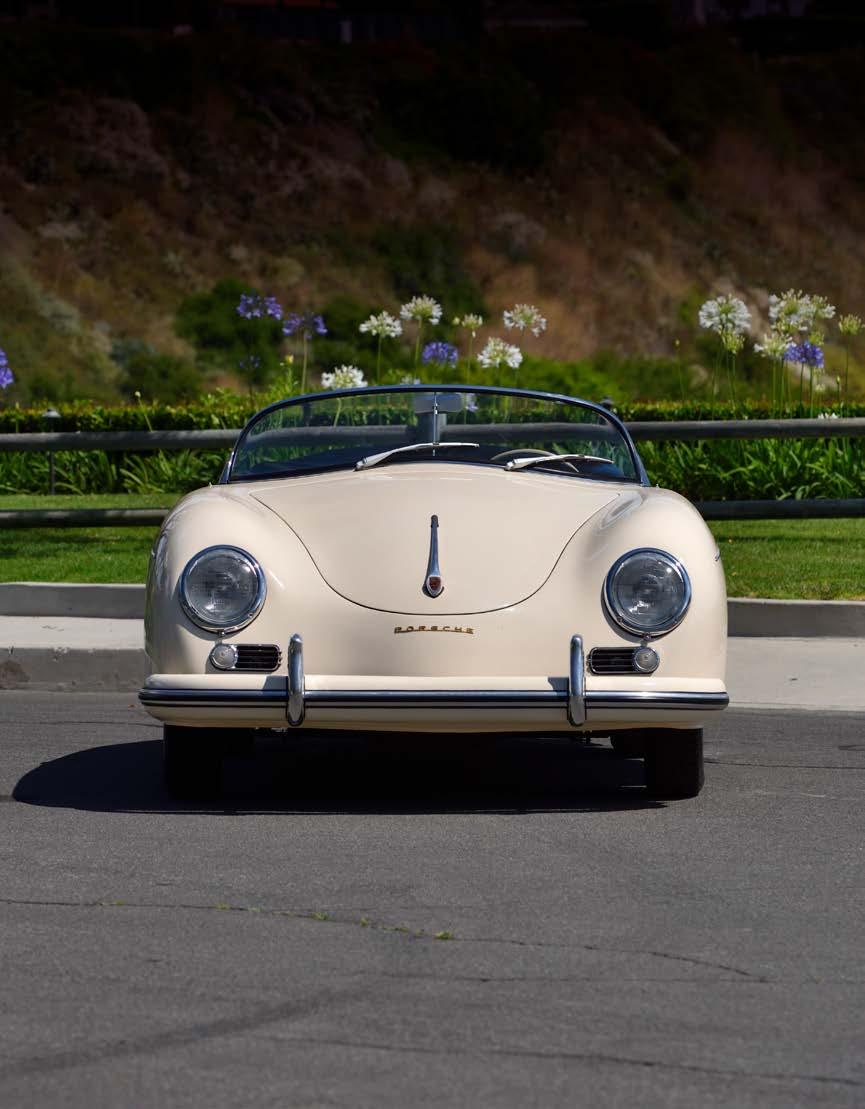
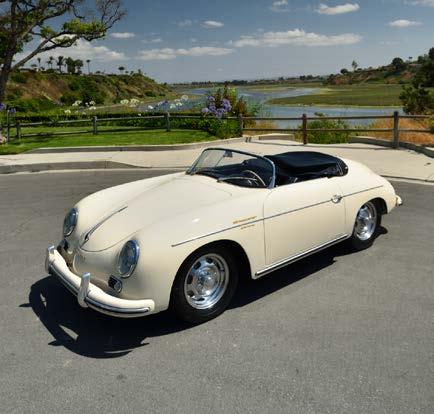
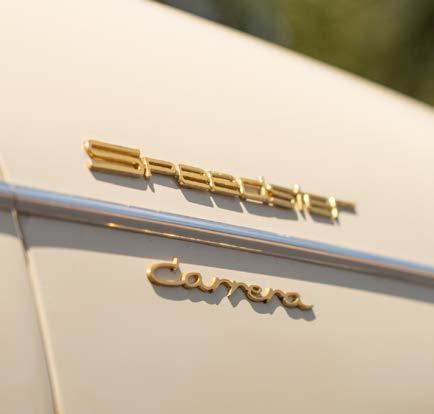
W hile Porsche is best-known for its uniquely engineered, premium-level road models and succession of dominant racing cars, the marque’s true defining characteristic is its quest for constant and never-ending progress and improvement. That tradition is particularly evident when looking back at the production history of the original design that established the legend—the Type 356. Joining Mecum for its return to Monterey this August 17-19 for its annual Daytime Auction, the Veloce, Schnell & Fast Sports Cars Collection is set to serve up an impressive timeline of Porsche development, one that is sure to capture the hearts of Porschephiles. The first automobile line to actually bear the Porsche name, the 356 arose from the ashes of World War II in Europe, when the Porsche Design Bureau relocated to Austria. Designed and developed under Ferdinand Porsche’s son Ferry, the original 356, designated 356/2, featured Volkswagen-sourced mechanicals and sleek, wind-cheating bodywork designed by longtime Porsche associate Erwin Komenda. Constructed in an abandoned sawmill in Gmünd, Austria, the 356 debuted to great anticipation. Proving the soundness of their unconventional design, 356s went on to win the German Sports Car Championship for an astounding six consecutive years from 1950 to 1955, a fruitful era that included two back-to-back class wins at the 1950 and 1951 editions of the legendary 24 Hours of Le Mans, an event that would include many more Porsche victories throughout the following decades. Observing Porsche’s competition focus, the exotic fourcam Carrera debuted alongside the comprehensively revised Porsche 356A at Frankfurt in the fall of 1955 and demonstrated the lengths the company would take to win, regardless of the cost. Engineered by Ernst Fuhrmann, the Type 547/1 Carrera powerplant was a tour de force displacing 1498cc and featuring a complex roller-bearing crankshaft and dual carburetors. So powered, the Carrera was aptly described by Porsche author Karl Ludvigsen as “… instrumental in adapting the auto that started out with forty horsepower to a power level that was two-and-a-half times higher.” Available as a coupe, cabriolet or elemental Speedster, Porsche’s 356A Carrera was built with 1500cc and 1600cc engines from 1955 until 1959, including the 356A Carrera GS Speedster from the Veloce, Schnell & Fast Sports Cars Collection. According to marque experts, approximately 700 Carreras were built in all, including only some 260 examples of the 356A. A DANCE THROUGH PORSCHE’S FORMATIVE YEARS VIA THE VELOCE, SCHNELL & FAST SPORTS CARS COLLECTION BY DESIGN STORY BY DAVID NEYENS • PHOTOS BY JASON BRANT THE FIRST AUTOMOBILE LINE TO ACTUALLY BEAR THE PORSCHE NAME, THE 356 AROSE FROM THE ASHES OF WORLD WAR II IN EUROPE, WHEN THE PORSCHE DESIGN BUREAU RELOCATED TO AUSTRIA MECUM.COM // 3 2 // MECUM.COM Shelby's One-of-One Supercar W hen Ford redesigned the Mustang in 1967 to take the 390/320 HP bigblock V-8, Carroll Shelby took the next logical step and introduced the GT500, the first big-block Shelby GT, powered by a modified Police Interceptor 428 CI engine rated at 355 HP. Buyers took to the new car immediately, and the car outsold its small-block GT350 stablemate 2,048 to 1,175 units. In addition to his partnership with Ford, Shelby was also the West Coast distributor for Goodyear, who in February asked Shelby to take part in a promotional event for its new Thunderbolt line of economy tires. Shelby judged that the GT500 would be the perfect choice for an extended high-speed demonstration of the new tire, but the decision took a twist when former Shelby American Sales Manager Don McCain approached Shelby with the idea of building a supercar that would outperform anything else in the world. Then employed by Dana Chevrolet in South Gate, California, and Mel Burns Ford in Long Beach, McCain suggested that Shelby put a racing 427 in the GT500 for the test, let him sell the car and then build 50 more for Burns. Ever one to leap at opportunity, Shelby instructed Fred Goodell, Shelby American’s chief engineer on loan from Ford, to prepare a GT500 with a special engine for the test, which would be held at Goodyear’s high-speed test facility near San Angelo, Texas. Goodell selected GT500 No. 544 for the task: “We rebuilt it with a special lightweight 427 racing engine, special rear axle, special transmission and, of course, Thunderbolt tires.” McCain later described the engine as “the mother of all 427s at that time … aluminum heads, aluminum water pump, forged crank, Le Mans rods, just basically everything inside the engine was built to run sustained 6,000 RPM—to race at Le Mans.” Essentially, it was the same powerplant used in the GT40 MkII that had won the famous French endurance race the previous year, including a variation on the MkII’s “bundle of snakes” exhaust system and its 600 HP output. Goodell made other modifications to prepare the car for the tire test. An external oil cooler, braided lines and a remote oil filter were installed to increase the 427’s reliability; stiffer springs and shocks were mounted on the passenger side of the GT500 to counteract the high-speed cornering forces it would encounter on Goodyear’s 5-mile oval track. Goodell completed the car with one-off chrome inboard headlight surrounds and a unique version of the production Le Mans striping with two narrow blue stripes flanking a wide blue center stripe, elements that distinguish it from all other GT500s. By Kane Rogers • Photos by David Newhardt MECUM.COM 3

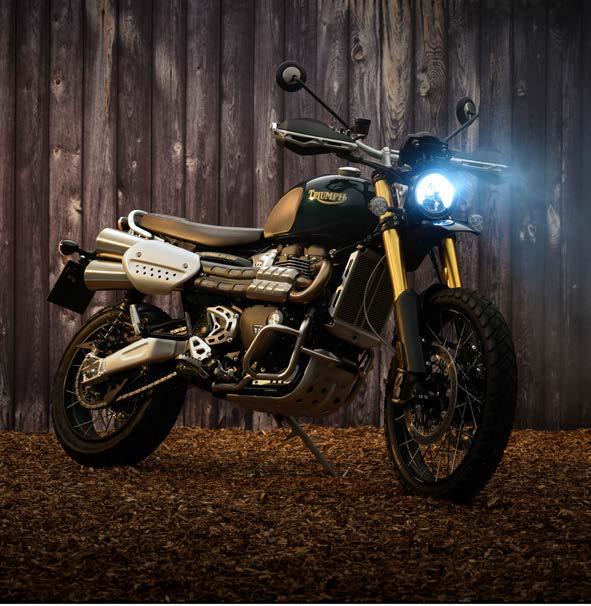




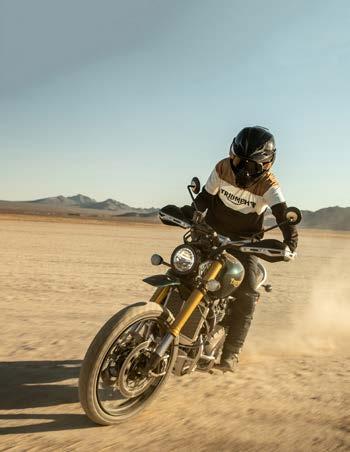
Triumph’s Serial No. 0278 of 1,000 2022 Scrambler 1200
Steve McQueen Edition motorcycles will be offered for public sale on Saturday, August 14 in Monterey, California, at The Daytime Auction with all proceeds from the sale donated to the Boys Republic, a private, nonprofit, nonsectarian school and treatment community for troubled youth. The motorcycle is one of an exclusive run of just 1,000 produced globally and boasts a serial number that matches the number plate ran by Steve McQueen in the International Six Days Trial (ISDT).
It was back in 1964 when actor and motorcycle rider Steve McQueen, “The King of Cool,” helped to form and fund the first official Team USA to enter the famed ISDT motorcycle race held annually in Europe. His team members included Bud and Dave Ekins, Cliff Coleman and John Steen, all of whom piloted their very own Triumph motorcycles in the harrowing and iconic race. Their efforts across the pond were highly publicized, with countless magazines and news outlets including prominent feature articles about the race within their pages. As a result, imagery of McQueen atop his No. 278 Triumph at the 1964 ISDT remains prolific even today, and the Triumph brand has retained status as a household name with relative ease throughout the past half-century.
First established in 1902, Triumph Motorcycles celebrated 119 years of motorcycle manufacture in 2021. For more than three decades, Triumph Motorcycles has been based in Hinckley, Leicestershire, in the United Kingdom and has produced iconic bikes that blend authentic design, character, charisma and performance. Building around 60,000 bikes each year, Triumph is the largest British motorcycle manufacturer and has around 650 dealers worldwide. Triumph’s Serial No. 0278 of 1,000 2022 Scrambler 1200 Steve McQueen Edition motorcycles at Monterey

Story by Chelsey Hinsenkamp
Photos courtesy of Triumph Motorcycles MECUM.COM // 3 MECUM MAGAZINE LAYOUTS The Triumph Scrambler 1200 was first launched in 2019 and has rapidly become modern Triumph icon, setting a new benchmark in its category thanks to its class-leading riding capabilities both on-road and off-road, its state-of-the-art technology, outstanding specifications and extensive customization options. It’s powered by the latest evolution of Triumph’s characterful 1200cc high-power British twin, and, new for 2021, the engine update delivers lower emissions. With low inertia crank and high-compression cylinder head, plus a dedicated Scrambler tune, specifically developed to give the perfect balance of power and torque delivery for both road and off-road riding, the result is incredible torque through the entire rev range. The distinctive Scrambler sound, produced by the 1200cc 8-valve parallel twin engine, delivered by the twin high-level exhaust system, which has been updated with the added benefit of improved heat distribution. The class-leading long travel suspension delivers incredible off-road capability and ground clearance, and superior stopping power guaranteed by the category-leading Brembo M50 radial monobloc calipers, with twin 320mm floating discs on the front and the Brembo caliper with single disc on the back. Such outstanding braking power is managed by the ABS that comes as standard. In celebration of arguably the most famous movie star, stunt and motorcycle in history, the new Scrambler 1200 Steve McQueen Edition takes inspiration from the Triumph TR6 that pulled off the still-legendary stunt from the iconic war movie classic, “The Great Escape.” The limited-edition bike brings all the category-dominating specification, go-anywhere capability and advanced technology of the new 2022 Triumph Scrambler 1200 XE and adds its own premium McQueen-themed paint scheme and extensive list of beautiful, unique details. Fully equipped with a selection of premium Scrambler accessories, fitted as standard, the Steve McQueen Edition now officially the highest-specification Scrambler 1200 ever. Adding layer of ruggedness, the bike comes fitted with engine protection dresser bars, which are fabricated from stainless steel tubing and have an electro-polished finish offering additional protection to the clutch and alternator covers. A laser-cut and pressed aluminum radiator guard with laser-etched Triumph branding also comes as standard, giving additional protection from loose stones while optimizing air flow. The Steve McQueen Edition further features premium brown bench seat with stitched ribbing and Triumph branding, which further enhances the overall classic style and elegance of this limited-production machine. MECUM.COM MECUM.COM OFFERED AUGUST 14 AT MONTEREY 2021 With just 1,000 Scrambler 1200 Steve McQueen Edition models available worldwide, each bike is individually numbered on the beautiful billet-machined handlebar clamp, which also features laser-etched Steve McQueen signature. For even greater exclusivity, each bike comes with unique certificate of authenticity stating the bike’s serial number and carrying the signatures of Triumph’s CEO Nick Bloor and Chad McQueen, son of the legend himself. An exceptional opportunity to acquire Serial No. 0278 of the exclusive run of 1,000 McQueen-edition Scramblers will come about Saturday, August 14 in Monterey, as it crosses the Mecum auction block with a charitable twist. The highest bidder will not only become the proud new owner of this amazing motorcycle that bears serial number matching the number plate ran by McQueen in the 1964 ISDT, but they will also write the check for its purchase directly to the Boys Republic school for troubled youth. The winning bidder will additionally be invited to attend the annual dinner of the Steve McQueen Car and Motorcycle Show scheduled for October as a Guest of Honor at the school located in Chino Hills, California. The school was founded in 1907 and has since helped more than 32,000 at-risk teenage boys and girls lead productive, fulfilling lives, including alumni Steve McQueen, who not only graduated from the school, but also later provided funding and support to the organization and its mission. Mecum has held charitable sales benefiting the Boys Republic in the past, including some that have also been tied in some way to the McQueen name. In 2015, Mecum offered 1976 Porsche 930 Turbo Carrera at that year’s Monterey auction event. The main attraction car was previously owned by Steve McQueen and had, in fact, been ordered new by the movie star as his very last special-order Porsche. After heated bidding, the car ultimately hammered sold for total of $1.95 million, portion of which was donated to the Boys Republic. Boasting a combination of industry-leading technology and performance along with extreme exclusivity, significant serial number paying homage to one of history’s most memorable movie star motorcycle riders, and the opportunity to make the purchase in the name of charitable cause, McQueen Scrambler No. 278 is likely to draw lots of attention in Monterey, and deservedly so. There isn’t much more any avid collector or rider could hope to find in singular machine; this limited-edition, top-shelf Triumph truly has all. Proceeds to benefit MECUM.COM MECUM.COM
Ride Like McQueen

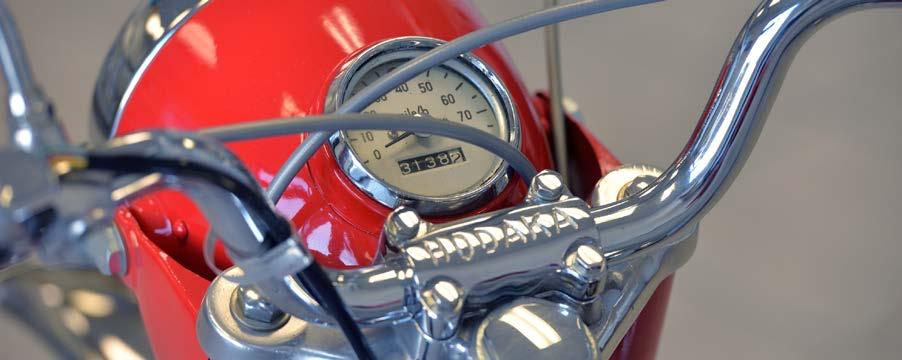
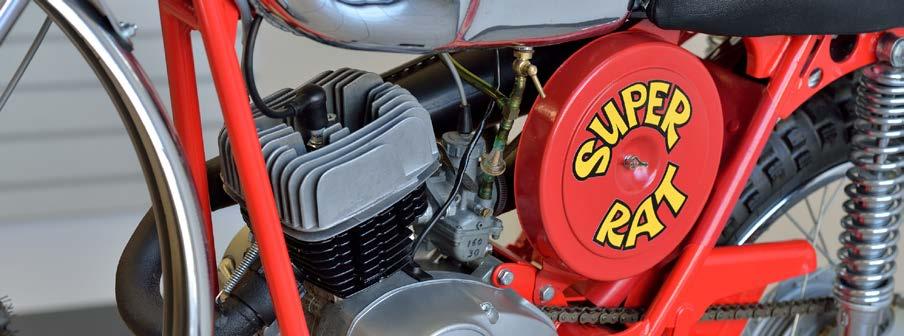
A HEA R T FOR HO D A K A H BY CHELSEY HINSENKAMP • PHOTOS BY DAVID NEWHARDT C ollector Steve Miller of Valparaiso, Indiana, has built a collection of motorcycles from around the world, many of which are motocross bikes, as Miller admits that he’s always been particularly fond of the vintage off-roaders. “Dirt bikes were my hobby growing up,” Miller explained. “In the ‘60s and ‘70s, these were the bikes I was riding. owned a few back then, and did some racing in the ‘70s. I guess I’ve just always loved dirt bikes since they’re really what I grew up with.” Miller said early on in his youth, Hodaka motorcycles became his marque of choice—a preference fueled by the company’s reputation for solid, durable motorcycles that generally sold for reasonable prices. “The Japanese bikes in those days sold for anywhere from $400 to $900, so kids could afford those, while the European ones sold for $1,000 to $2,000,” Miller explained. Interestingly, while Hodaka motorcycles were built and assembled in Japan, they were actually designed in the United States, which is also where they were marketed and sold. While the company’s success was relatively short lived with just a 14-year lifespan, Hodaka undeniably left its mark on the motocross scene. During Hodaka’s peak years in the industry, there wasn’t a single youthful enthusiast in the nation who wasn’t familiar with the brand. COLLECTOR STEVE MILLER TO OFFER 20 VINTAGE OFF-ROAD MOTORCYCLES AND MORE IN VEGAS MECUM.COM • 3 2 • MONTHLY ven with odds stacked against them, America’s first motorcycle company, its first registered distillery and its first large-scale civilian volunteer service corps all proved their enduring viability through the tumultuous decades of the first-half of the 20th century, a time that saw economic crisis, prohibition, world wars and more. Their ability to survive events and eras that decimated most of their competition is a testament to the quality of their products and services and to the ingenuity of the teams that have led their efforts from inception to today. When companies of this outstanding caliber combine their collective strength and influence and dedicate the results of their creative huddle to a worthy and charitable cause, amazing things are bound to be an unavoidable consequence. Enter: the 2023 Indian Chief Bobber Dark Horse Jack Daniel’s Limited Edition motorcycle that is making its way to The World’s Largest Collector Car Auction this January, with all proceeds to benefit the Armed Services YMCA’s Operation Ride Home program. The Indian Motorcycle company and Jack Daniel’s Tennessee whiskey have been partnering on special and limited edition bikes since 2016, a collaborative effort enhanced by the inspired input of Brian Klock of Klock Werks SM Kustom Cycles. As the most exclusive builds in Indian’s model lineup, the specialty bikes have sold out in a matter of minutes. E 2 // MECUM.COM








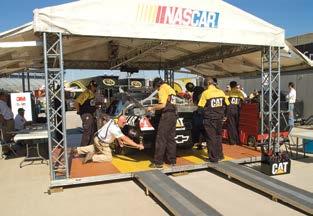

Win a Seat on the No. 31 Pit Box Details on Pages 10 & 11 Are you starting to see some correlation between simulation and on-track performance? We’ve seen results from simulation for long time. RCR is increasing the funding for simulation, and we expect to see much better on-track performance. Simulation is tool that’s become much bigger part of every team’s engineering and R&D arsenal. Can you and your fellow RCR drivers make larger contribution to your mutual success by better communication and information sharing? In word, yes. Although, think we work well together, we must do it better. We need our teams to work better together. We have to form an us-against-them mentality as it relates to the other 39 cars. That’s one of Scott’s initiatives going forward. What is your outlook heading into 2010? The ECR Engines program is great. We have the horsepower and reliability to win a championship. We simply haven’t been making enough grip to carry the necessary speed through the corners. Our latest-generation cars are a definite improvement. They are more drivable and more forgiving. We’re confident we can go faster during 2010. How do you feel about your place in the sport and your goals going forward? I’m blessed because there’s nothing else would rather do. have passion for NASCAR Sprint Cup racing and want to win championship. That’s what motivates me. I’ve been fortunate to have a reasonable amount of success, but haven’t achieved my number-one goal. There’s still time. This sport has more to do with your heart, than how old you are. you have the talent and the desire, you can be successful this sport for long time. After one year, how do you feel about the Caterpillar sponsorship? Caterpillar’s NASCAR program is amazing. Everyone meet—whether customer, dealer or employee—has a close bond and unique relationship with the company and its products. At hospitality events, it’s very evident that you’re in the presence of passionate people who make Caterpillar the industry leader. It’s very different, very refreshing and very fun. Owners and operators have a great deal of pride about Cat equipment. It’s like special fraternity. It’s also really cool to see how skilled the operators are. look forward to meeting many more members of the Cat family during 2010. Some Thoughts from the Driver’s Seat J eff Burton is known as one of the more cerebral drivers in the NASCAR Sprint Cup Series. In sharing his views with the readers of Inside Cat Racing-2010 he answered few questions that reflect on 2009 team performance and his outlook for 2010. Following are the edited highlights of Jeff’s observations: How would you describe the 2009 season? While November was great, we’re extremely disappointed with our overall results. I’ve been through this before. When things aren’t going well, you have to be analytical and methodical. We have technical game plan in place that will, ultimately, yield results. The RCR cars started running better toward the end of the 2009 season. That’s how turnaround starts. It becomes contagious. We’re certainly heading in the right direction. Why wasn’t 2009 typical Jeff Burton year of consistent performance? Historically, the No. 31 really good at wearing people down. was in more wrecks this year than in any other throughout my career. It’s my responsibility to prevent that from happening. In reviewing the video, don’t know how could have avoided almost every wreck we were in. Wrecking not only impacts given race, it frequently impacts race two weeks later one of our best cars can’t be turned around as quickly as normal. The one thing that’s clear about most of the wrecks is that we were running closer to the front, say ninth instead of 15th, we wouldn’t have been involved. That’s the lesson. What are your thoughts about double-file restarts? I’m proponent, even though we’ve come out on the short end of the stick more than we would like. A lot of my 2009 wrecks occurred during double-file restarts. had been running seven or eight spots up in the field, wouldn’t have been in those wrecks. Most of my conversations with other drivers are positive. For sure, think it’s made the racing more exciting for the fans. After 88 races, how do you feel about the newgeneration car? It’s non-issue. Everybody has to run them. Without doubt, the competition has improved. NASCAR Sprint Cup racing is way better and much more competitive than was. think Cat Racing fans will continue to see that during the 2010 season. How do you feel about the new roles of Todd Berrier and Scott Miller and the contributions of Kent Day and his engineering team? We did an exhaustive crew chief search, internally and externally, and met with several candidates. Our talks involved making the No. 31 solid Chase contender for 2010. Todd won the job. He’s not the new crew chief because he was already at RCR. He proved to be the most qualified and, by far, the very best option. Scott’s been a top-notch crew chief and been in every situation on race team. He understands what teams go through. Scott will do great job as our new director of competition. Kent came in during early 2009 with a huge amount of experience. With all three, so much has changed for the better already. How do you feel about other personnel changes on the No. 31 team? Working with different people opens doors to doing things differently. view the changes as an opportunity for fresh start surrounded by very experienced people. That will push me to do things differently and, hopefully, better. Running the last four races of 2009 together gave us a leg up heading into next year. Jeff Burton consults with Richard Childress. W ith a core staff of just 42 full-timers—technical inspectors and pit road officials—NASCAR Sprint Cup Series director John Darby defines his role as ‘chief troubleshooter.’ “From day to day, never know what I’ll be doing and the challenges that our team will face,” said Darby. What he does know is how to stage the competition for each of the 36 points races. Even though the NASCAR officials are the first in and the last out at each event, their time-proven approach to logistics makes the typical three-day show run flawlessly. For Sunday race, Darby’s team members travel on Thursday. Those assigned to setup responsibilities each week arrive first. The full contingent is at the track by 6:30 a.m. on Friday morning for 6:45 a.m. weekly briefing. At 7:00 a.m., the pit gates are opened to the 45 to 50 teams seeking to qualify for the pole or, in the case of those outside the top-35 in points, just making the 43-car starting field. The first five hours are devoted to rigorous openingday inspection. It’s designed to assure that every car adheres to the NASCAR rulebook. With more than 120 items to be verified, roving inspectors visit each garage stall to tackle portion of the checklist. Structural integrity and safety equipment are top priorities. Engines are partially disassembled for various specification checks. Steering and suspension components are also scrutinized. Each car is fully fueled and weighed before thorough inspection of body dimensions and ride heights. As they prepare the cars for practice and qualifying, the race teams accommodate NASCAR’s inspection process. More Inspections Await After a 90- to 120-minute practice session, teams make final pre-qualifying adjustments. The cars are subjected to shorter inspection regimen before qualifying. A random group of cars is pulled for a short post-qualifying inspection. One or two Saturday practice sessions are also conducted. As the teams work on the cars, NASCAR inspectors are frequent observers. A Sunday morning pre-race inspection is very similar to the pre-qualifying inspection. Due to time constraints, these pre-competition inspections are less intrusive. On Sunday, about 20 officials from the companion Nationwide or Camping World Series assist with pit stall monitoring and race control. For any car finishing in the top five, the respective team members happily face an extended workweek. randomly selected sixth car is included for complete inspection and two others are typically pulled for partial inspections. Again, the cars are partially disassembled as inspectors First In, Last Out John Darby NASCAR Sprint Cup Series Director The NASCAR command center (left) and an equipment hauler occupy prominent position the Sprint Cup garage. verify rulebook adherence. After select races, some engines are pulled, placed in sealed crates and taken to the NASCAR Technical Center in Concord, N.C. for complete teardown inspection. Two to four complete cars may also be pulled for these in-depth checks. Long after the fans and most teams have packed up and left and the post-race inspections are complete, the NASCAR officials finally load up their own equipment. Monday another designated travel day leaving Tuesdays and Wednesdays for next-event preparations. Inspections provide NASCAR with the ability to keep the playing field relatively level for all of the competitors. The inspections are open to any team and others who care to watch and have access to the garage. The process helps protect the competitive balance. On occasion, these additional sets of eyes spot team “innovations” that flat out violate the rulebook or seek favorable interpretations of any gray areas. Ultimately, the openness of the process helps refine the rules that govern the sport. Crisscrossing the Country Seven dedicated semi-trailers are required to transport the NASCAR Sprint Cup Series from race to race. They include command center, an inspection trailer, registration office, a complete kitchen facility and equipment haulers. Just as you would take your televisions and telephones and leave the cabling when you move, NASCAR transports its communications and electronic gear. The individual tracks are responsible for providing local power and cabling that now utilizes fiber optics running around the perimeter of most tracks. “Troubleshooting keeps me excited about coming to work every day,” said Darby. “The challenges we face each week could involve inclement weather, darkness, tire issues, track conditions, rules interpretations and competition questions. The fans hear about the drivers and crew chiefs invited to the NASCAR hauler for special post-race discussions. What fans may not know is that NASCAR utilizes an open-door approach to communicating with our team owners, drivers, crew chiefs, sponsors and car manufacturers throughout every race weekend.” 30 31 NASCAR RACING LAYOUTS

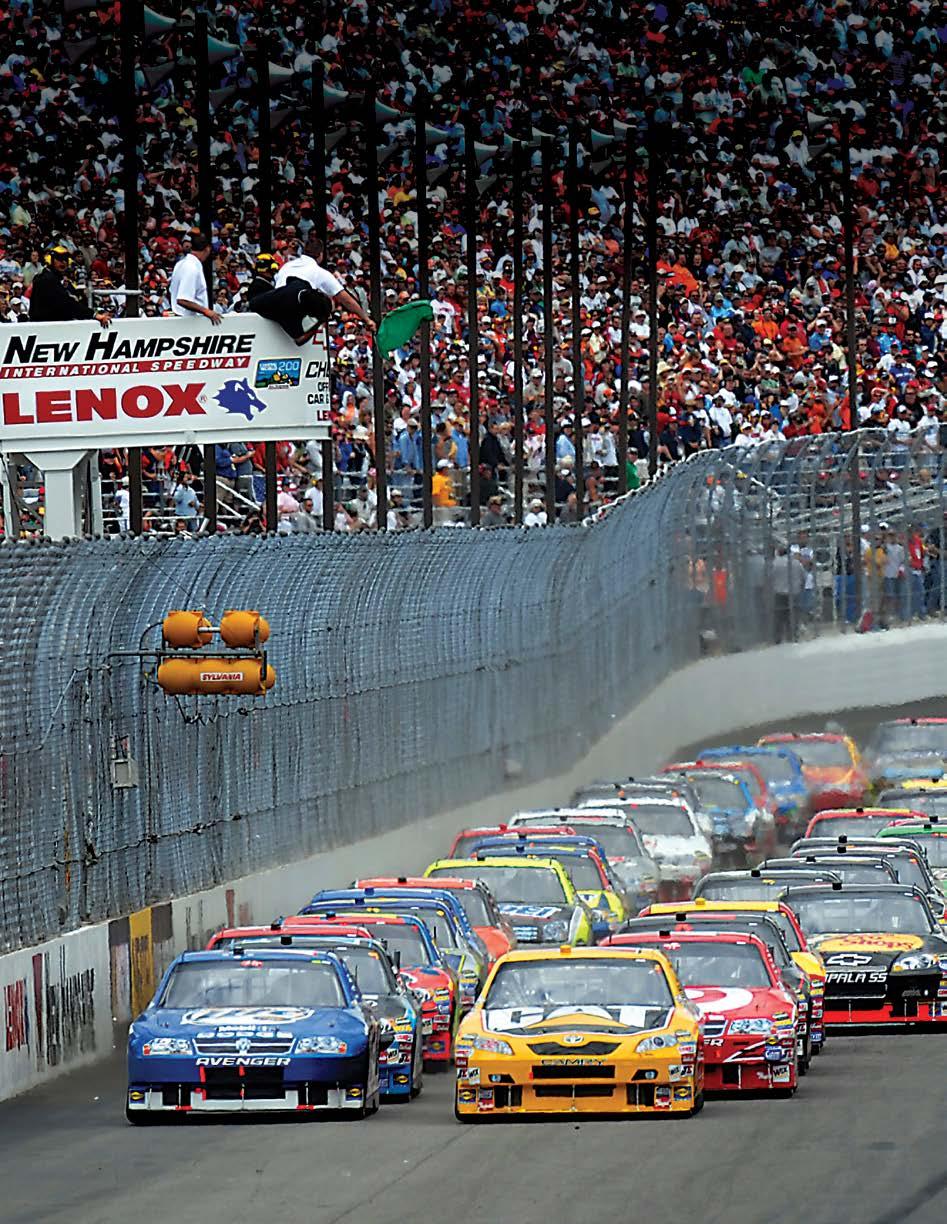
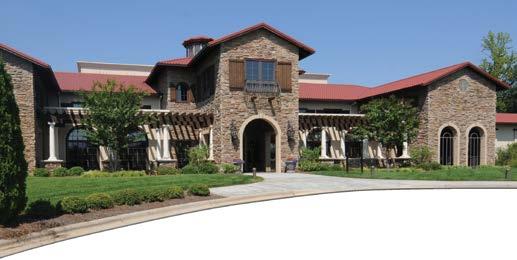


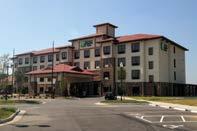
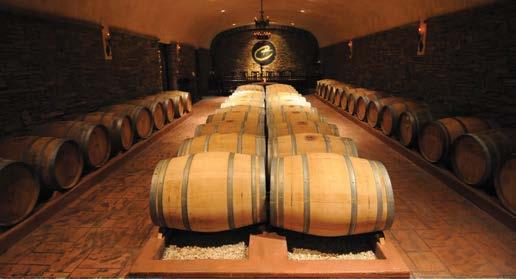

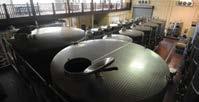
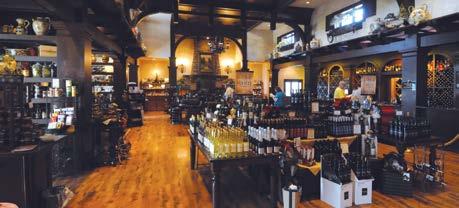
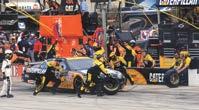

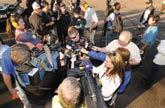



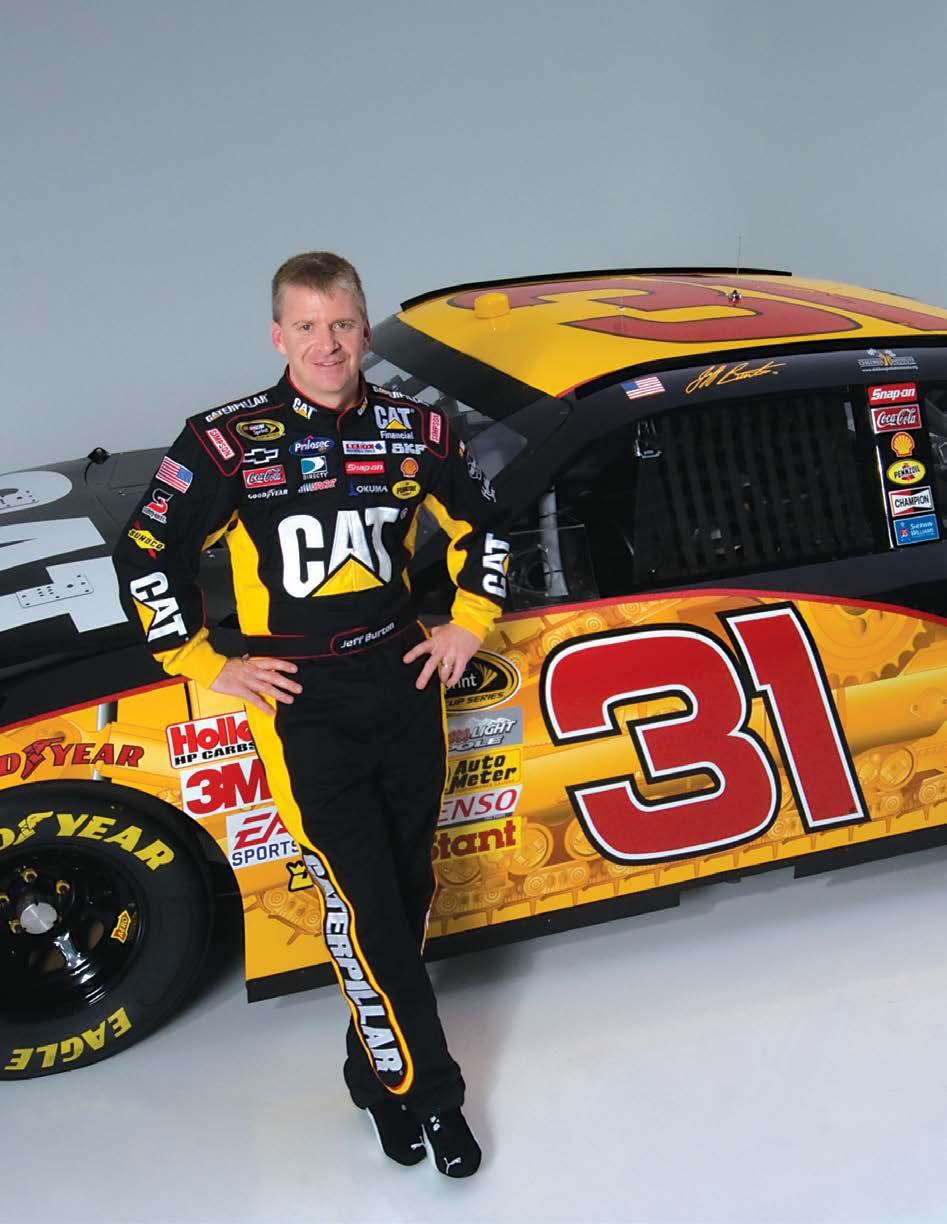

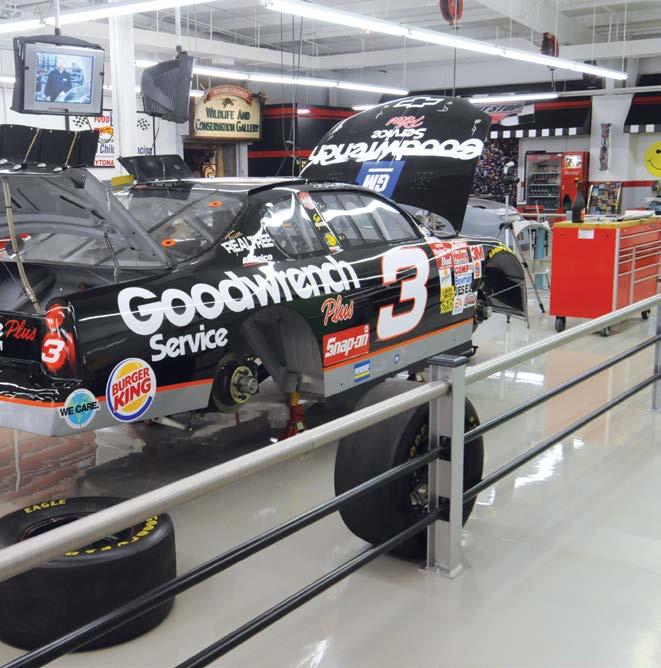


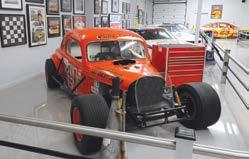


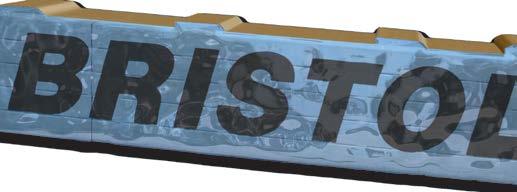



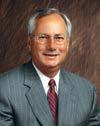
For a team outside the 10-race Chase, or even Chase participant no longer in contention for the Sprint Cup Championship, there might be tendency to look beyond the final month of the season. At Richard Childress Racing, the exact opposite is obviously true. November turned out to be a banner month for the No. 31 Cat Racing team. With fifth, ninth and back-to-back second-place finishes to end the season, Jeff Burton and Todd Berrier led the Cat Racing team the highest point total for the month—648 or 162 per race—and even more importantly, to an entirely with the new double-file restart procedures, we got caught up in someone else’s miscue for several races in row,” said Burton. “We intend to fix that problem by running at or closer to the front during 2010. All things considered, the Richard Childress Racing teams made considerable strides the application engineering data that translated into car construction. At the track, these improvements made the chassis setups easier to adjust, enabling the drivers to carry more speed through the corners. Based on our November results, we’re much more confident and better prepared heading into 2010.” More Than Meets the Eye To casual observers, the November on-track success appeared to coincide with the appointment of Todd Berrier as the No. 31 crew chief. But, that’s simply not the case, and he’ll be the first to tell you so. Former crew chief Scott Miller had already been pulling double duty overseeing engineering and the crew chiefs as the new director of competition. Working close cooperation with Kent Day and his engineering team, the shop had already begun turning out new generation of cars that showed considerable late-season promise for all RCR teams. Although there’s no monthly award for compiling the most points during November, don’t say that the members of the Cat Racing team. Working with the new-generation cars coming out of the shop, the team would you describe lightning-fast pit stops in the 1213-second range? One of the Phoenix stops resulted picking up five positions on the track, clearly helping make this past November one to remember. A November to Remember 2009 Season Recap Winnings Daytona $317,654 California 32 67 30 $130,931 Las Vegas 14 170 18 $247,281 Atlanta 15 14 121 15 $121,181 Bristol 40 142 13 $137,906 Martinsville 13 15 118 13 $122,331 $176,304 $117,381 Talladega 20 10 139 $146,456 10. Richmond 165 $177,906 11. Darlington 12 127 $132,254 12. Charlotte 40 25 88 $137,731 13. Dover 32 16 115 10 $133,331 $124,206 15. Michigan $121,981 16. Sonoma $120,484 17. Loudon 15 31 16 $120,106 18. Daytona 16 16 120 15 $142,731 19. Chicago 23 37 17 $129,281 20. Indianapolis 38 25 17 $195,731 100 $114,931 $109,306 23. Michigan $123,831 24. Bristol 37 18 109 18 $141,981 25. Atlanta 24 34 61 18 $131,131 26. Richmond 22 18 109 18 $117,756 27. Loudon 32 16 115 18 $123,406 28. Dover 28 16 115 18 $119,506 29. Kansas City $135,156 30. California $136,531 31. Charlotte 34 14 121 19 $119,931 32. Martinsville 22 15 123 18 $121,156 33. Talladega 18 160 17 $156,706 34. Texas 42 138 17 $170,631 35. Phoenix 36 175 $204,006 $273,631 Averages Totals $5,352,763 32 33 interested in mimicking others. We’re working to establish our own unique style that pleases people by producing wines that evoke emotions and complement occasions. We need to listen as the flavors speak to us, and then adjust accordingly. Each year, we’re planting more acres and making changes based on what we like, what our customers prefer and what grows the best in the soils and climate of North Carolina.” A Great Experience As operations manger, Richard’s daughter, Tina Dillon, views her responsibilities as providing great experience for everyone who walks through the door. Although she knows her father would love to be hands-on manager, both realize that just isn’t possible. He frequently enjoys lunch at the winery, while Tina fills him on big-picture topics and spares him from immersion in the details. In addition to the Bistro, banquet facilities are also available at Childress Vineyards. The winery can accommodate groups of 250 for seated functions up 500 for wine receptions. An intimate Barrel Cave can host small meetings and dinners for 14, and the Barrel Room is available for functions up to 50. An upscale Holiday Inn Express Hotel and Suites, located adjacent to the winery and the Shoppes at Vineyards Crossings, is a great place to stay. Be sure ask for the special RCR visitor rate. “We look forward hosting Caterpillar Dealers and their customers,” said Tina. “Whether they’re here for race weekend or just passing through, the area offers plenty of things see and do beyond the winery, race shop and museum. We host lots of tour groups, weddings, engagement parties and corporate events. Our own chef handles any catering need, and our staff geared to delivering outstanding hospitality and great experience for everyone from single visitor to large groups.” A Busy Racing Mom Having grown up Childress and being married to RCR competition director, Mike Dillon, Tina has unique perspective on the budding racing careers of sons, Austin and Ty. Although they’ve been involved in stick-and-ball sports over the years, the urge race emerged in their early teens. Experience in Bandoleros, Legend cars, dirt late models and asphalt late models has helped develop their skills on the way up. During 2008, 18-year-old Austin gained notoriety in the NASCAR Camping World East Series by finishing second to veteran Matt Kobyluck the season point standings. Driving the No. Chevrolet Monte Carlo SS for Team Dillon Racing for RCR Development, Austin recorded pole, win, six top-5s and 10 top-10s 13 events. He capped off his season with place run in the October 25 Nationwide Series race at Memphis won by Carl Edwards. The brothers participated in late-November race at Myrtle Beach, in which Austin was the car owner for brother, Ty—like grandfather, like grandson! On the Web www.ChildressVineyards.com Winemaker Extraordinaire Mark Friszolowski came to Childress Winery from Pindar Vineyards, the largest premium winery on his native Long Island. The area transformed itself from potato farming to grape growing and wine making. He apprenticed under famed California enologist Dimitri Tchelistcheff. At Pindar, he rose from cellarmaster to become the winemaker and general manager for 650 acres of grapes that produced 100,000 cases annually. Mark’s wines have won more than 500 awards in competitions from New York to California and beyond, including many double golds and golds for varietals including Merlot, Chardonnay, Cabernet Sauvignon and Meritage blends, as well as specialty dessert wines. His wines were twice named to the 50 Best Wines of the World. During the first year of Childress Vineyards’ production, Mark’s wines won 17 gold medals. Mark has garnered world-class reputation for his sophisticated palate and knowledge of the wine industry. He judges prestigious wine shows, guest lectures at technical seminars around the world, and teaches courses on viticulture and oenology. Mark has served as a consultant to wineries in the United States, Soviet Georgia, South America and Europe. He is past president and current board member of the North Carolina Winegrower’s Association and board member of the North Carolina Wine and Grape Council. An avid runner, reader, and former intercollegiate windsurfing champion, Mark is Lieutenant Colonel in U.S. Army National Guard reserve unit. He was involved in the initial clean-up process at the World Trade Center following 9/11. Holiday Inn Express 40 industry that has recently grown at the rate of almost one per month, from 31 wineries in 2004 78 at the close of last year. The state currently ranks 10th U.S. wine production. At the turn the prior century and until the onset of Prohibition, state winemaking thrived. According to the Sixth Federal Census, North Carolina led all states wine production and boasted the best-selling wine the entire nation. Old World Charm Along with its ornate terra cotta roof, the stone and stucco exterior of the 35,000 sq. winery is reminiscent of rural Tuscany’s Italian Renaissance architecture. Iron chandeliers and sconces, heavy architectural beams and textured walls impart an elegant, antiqued look. Etched glass doors on either side of the Grand Foyer lead into the Wine Tasting Room and Gift Shoppe on one side and the Banquet Hall and Bistro on the other. Most of the winery’s production facilities can be seen from walkways designed to provide visitors with an interactive experience—seeing, hearing, smelling and tasting the winemaking process. During 2008, Wine Enthusiast magazine selected Childress Vineyards as one America’s Top-25 Tasting Rooms. Wine quality was the top criteria followed by décor, staff savvy, amenities and overall uniqueness. The article urges readers to “Try wines, some available nowhere else, view splendid vineyard panoramas and enjoy the hospitality of people who know the wines from the ground up. Those who think NASCAR and world-class wine don’t pair well haven’t been to Childress Vineyards.” “It’s an honor to be named one of America’s Top-25 Tasting Rooms by Wine Enthusiast magazine, especially for new winery in young region,” said Richard. “We hope this designation will help attract new and repeat visitors to our winery and to the other wonderful wineries in the Yadkin Valley, and North Carolina as well.” Childress Vineyards produces more than 30 different wines including Classic house blends, premium varietals, dessert, Reserve, Signature Reserve and sparkling wines. To mark special victories, the winery sometimes offers special bottles featuring the car numbers owned by RCR, along with an etched bottle commemorating each year. For those who wish to receive new, limited wines on regular basis, membership in the Fast Track Wine Club ideal. Grape Growing is Key In world where art and science converge with palettepleasing results, winemaker Mark Friszolowski will tell you that up to 90 percent of the process is controlled by the biology and chemistry of growing grapes. “Most of the wine making process accomplished in the vineyards,” said Mark. “Variables we control include irrigation levels, types and amounts of nutrients, application timing, crop load, berry size, berry weight and number of clusters on vine. We’re constantly analyzing and adjusting soils, pruning rates and crop production. We measure variables in the soil and the plants. Plant samples are analyzed twice each year at critical times.” Mark oversees the 45,000 sq. ft. winery operations and 100 acres of vineyards. Grapes are sourced from the vineyards the winery and other Childress properties, plus few outside growers who conform Mark’s meticulous specifications. Grapes are harvested during a seven-week period from late August into October. Grapes are pressed; then processed tanks from 500 to 8,000 gallons. Actual wine making involves pumping wine from tank tank, clarifying, blending and filtering. The whites are typically processed and bottled within months of harvesting. Most of the reds ferment oak barrels for 10 to 15 months. Each year, 400 tons of grapes produce 75,000 to 80,000 gallons wine. A half-acre experimental block is treated the same as six- or eight-acre block; everything is processed separately. “Although each season’s production is a measure of your current work, wine making is marathon,” said Mark. “We are constantly experimenting, adjusting, adapting and evolving. Long term, we want most of our wines to be pleasing to wine aficionados. In these early years, we’re laying the groundwork see how far we can push the envelope. “The challenge and creativity for me involve a lot of science and manipulation of ingredients. We’re not A Passion for Fine Wine “It’s been my dream to build a winery in my native state and in the county that has been so good to me and my racing business. We want people to enjoy their experiences at Childress Vineyards and taste some of the best world-class wines being produced here in North Carolina.” H passion for fine wine as genuine as Richard Childress’ passion for auto racing. He embarked on a journey of experiencing different wines as his travels took him to tracks near the wine regions of California. Richard was moved by the passion he saw in the farmers who grew and harvested the grapes and was inspired by the warm spirit of the winemaking community. What began as camaraderie and good times soon became an engaging passion and ultimately dream build winery in his home state. At the encouragement of business partner, Greg Johns, Richard began researching the potential for successfully producing fine wines North Carolina’s Piedmont. As their experimentations with different grape varieties continued, both realized need for viticultural expertise. Dreams Turn to Reality Matt Chobanian, vineyard manager with expertise in East Coast growing conditions, was invited to help turn the dreams into reality. He had been growing grapes commercially since 1982 and came to Childress Vineyards from Virginia’s Ingleside Plantation. To bring the vision closer fruition, internationally acclaimed winemaker Mark Friszolowski joined team. His track record in the signature wine category as impressive as Richard’s in NASCAR racing. Located in Lexington the gateway to the Yadkin Valley American Viticultural Area, Richard’s signature winery opened in 2004. Childress Vineyards one North Carolina’s most significant wineries in a reemerging Richard Childress Continued on page 40 A history of catering to the fans When comes to the racing action and the overall experience at Bristol Motor Speedway, fans have continued to show their support via 51 consecutive NASCAR Sprint Cup sellouts. As the expansion history shows, that’s remarkable achievement in light of the competition for today’s entertainment dollar: July 31, 1961 first NASCAR race had a seating capacity of 18,000 January 22, 1996 purchased by Speedway Motorsports, Inc., seating capacity increased to 71,000 August 24, 1996 seating capacity expended to 86,000 for the night race April 13, 1997 capacity grows to 118,000, also 22 skyboxes added August 22, 1998 facility accommodates 131,000 fans and includes 100 skyboxes March 26, 2000 – Kulwicki Terrace and Tower take seating to 147,000 March 23, 2003 – a new backstretch grandstand increases capacity to 160,000 and includes 52 new skyboxes ‘Exceed expectations’ These two words speak volumes about Jeff Byrd, president and general manager of Bristol Motor Speedway, and his entire team. This simple mission statement guides every staff member, every day. They are empowered to make the fan experience as good as possible. That means stopping to give fans rides, rather than riding alone in golf cart. For Jeff, means answering his own phone and responding to e-mails. It makes no difference whether you’re fan, Speedway Motorsports, Inc. shareholder, an employee, corporate partner or a vendor; everyone given the red-carpet treatment. Exceeding fan expectations is a tall order. At a seating capacity of 160,000, Bristol Motor Speedway is one of the five largest spectator facilities in the world. “From the fan perspective, we have what we believe the best formula in NASCAR racing,” said Jeff. “When someone takes their family on vacation, they want to have quality experience and receive an excellent value for their hard-earned dollars. We think of our fans the same way. They’re entrusting us with money that may have taken them all year to save. In return, we need to live up to that trust.” The Bristol Motor Speedway fan advisory board is another vehicle that has contributed many ideas to the improvements implemented during the past 12 years. Jumbotron TVs were added similar to football stadiums. Storage lockers were installed on the concourse. Changes in transportation systems, traffic routing and crowd movement patterns originated with fans simply offering their ideas and suggestions. Obviously, fans are big part of the improvement process at Bristol Motor Speedway. That’s important for staff that’s dedicated to exceeding expectations. Plenty of Cat Yellow For those with Cat yellow flowing through their veins, there’s plenty of your favorite color to provide stark contrast. The bright yellow panel that sweeps forward from the rear wheel well the front splitter contains tone-on-tone graphic of SystemOne track-type tractor undercarriage. thin red line provides just the right amount of separation between the yellow and black. yellow top and deck lid provide the perfect complement to the overall look. The Cat Rental Store logo and Cat Financial continue their familiar positions on the The red No. 31 on each door and the roof also easy to spot from the stands or your favorite TV chair. As many of the top-tier teams are doing with multiple sponsors, Caterpillar will sponsor 33 36 races and pair of well-established RCR sponsors will be primary for the others. Prilosec OTC will sponsor the car at the spring Richmond and the Indianapolis races, while LENOX Industrial Tools has the first Loudon race. Watching from the stands or at home on TV, you’ll notice that the new look of the 2009 car carries through to the pit wall banner (above) and the pit box (right). Continued on page 16 W hether you have just 30 minutes for walkthrough or three days really see all the meticulously prepared and maintained exhibits, the Richard Childress Racing Museum should be on any race fan’s must-see list. The 47,000 sq. facility the first building you encounter when entering the RCR campus Welcome, N.C., about one hour north of Lowe’s Motor Speedway. The museum encompasses the original No. race shop built 1986 and the original RCR Museum added in 1991. They are now joined together in one structure that also houses the Richard Childress Wildlife and Conservation Gallery and the RCR souvenir and gift shop. Be sure bring your camera. The 40-year history Richard Childress Racing on display throughout the six-year-old museum. Richard’s first car, purchased for mere $20, was 1937 Plymouth coupe. The orange, open-wheel No. 41 modified was raced at Bowman Gray Stadium Winston-Salem, N.C., where Richard sold peanuts and popcorn as youth. NASCAR’s longest-running weekly track, currently hosts the NASCAR Whelen All-American Series. You’ll also see Richard’s Kansas Jack L.C. Newton Trucking No. Chevrolet Laguna that carried him to ninth-place Winston Cup points finish in 1977. Reliving Championship Seasons The former Winston Cup shop now home to 24 the most memorable cars from the Dale Earnhardt years. Many of the cars played key role the six championship seasons and each has a very interesting story to tell. A good example RCR chassis No. 5, which started life as No. Wrangler Chevrolet Monte Carlo in 1987. During that championship season, it won four six races entered and finished second the other two. Its final victory on April 16, 1989 at North Wilkesboro was the first NASCAR Winston Cup race run on radial tires. Overall, this car was utilized 15 times from March 1987 to April 1989, winning six races and never finishing outside the top-10. Stop, Look and Listen Continued on page 36

®
June 23-25, 2011
Souvenir Program



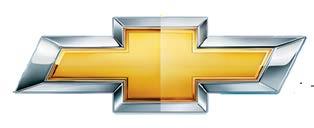
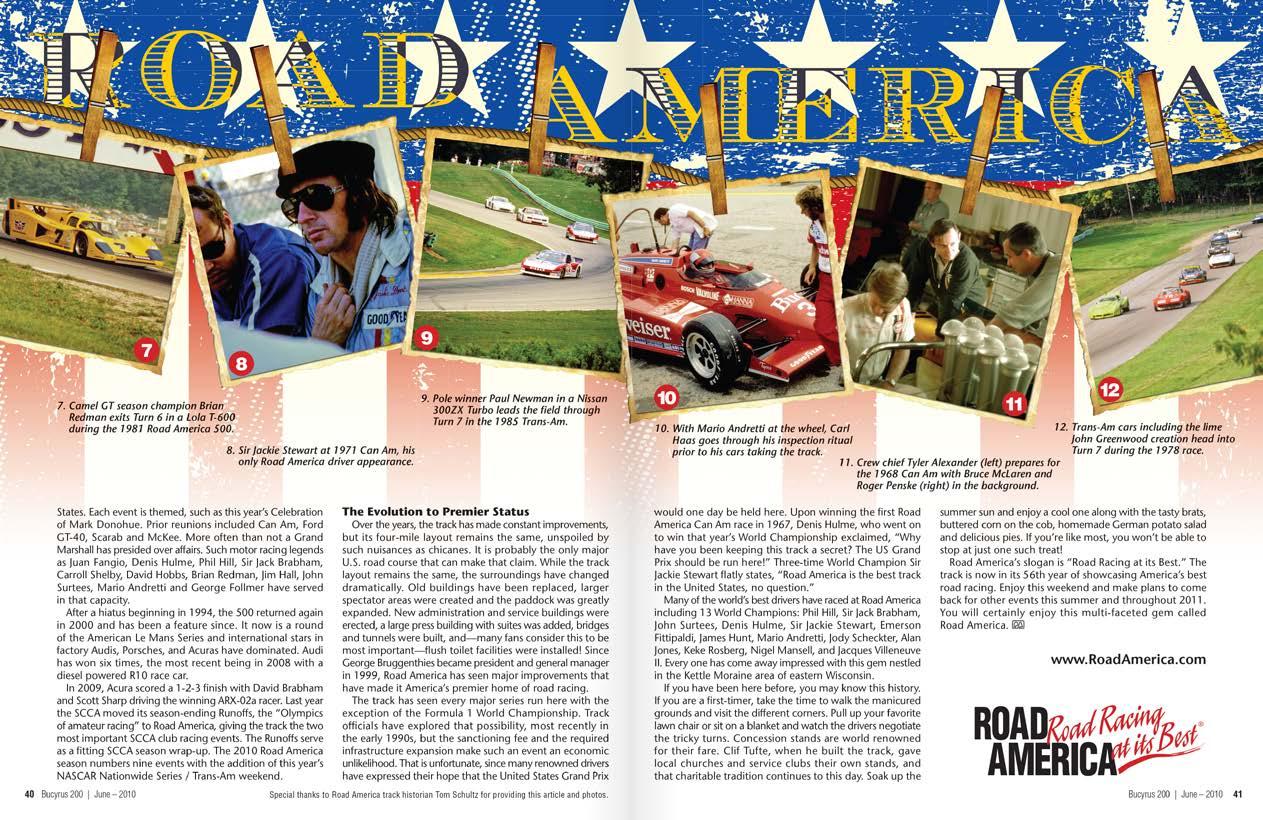 Rolex Sports Car Series 250 driven by VISITFLORIDA.COM
NASCAR RACING LAYOUTS
Rolex Sports Car Series 250 driven by VISITFLORIDA.COM
NASCAR RACING LAYOUTS
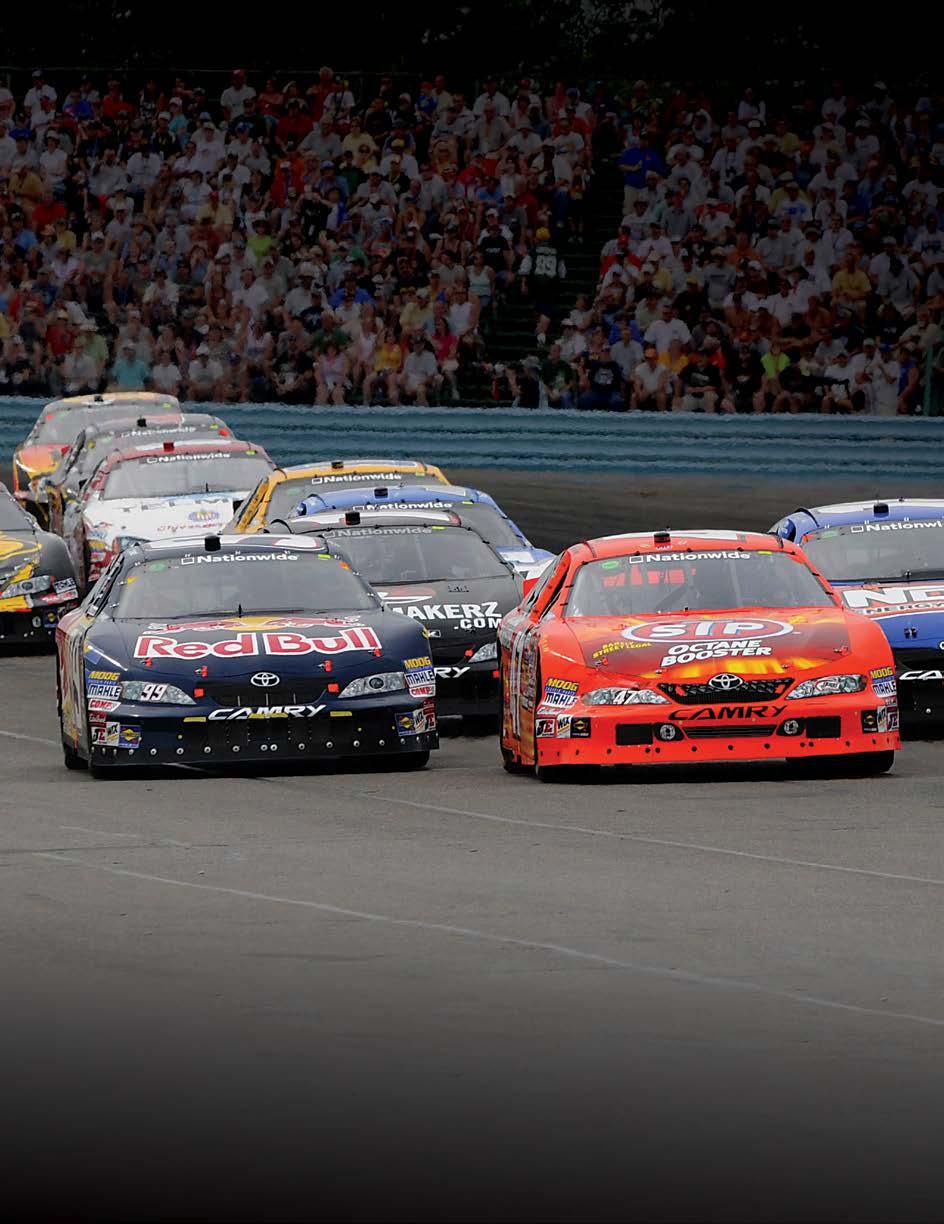









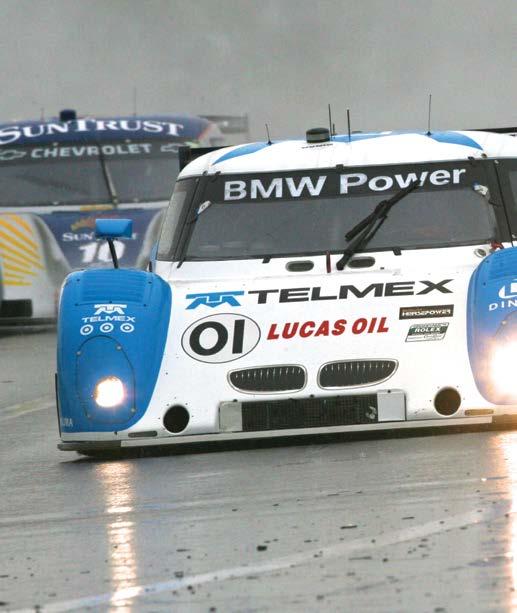
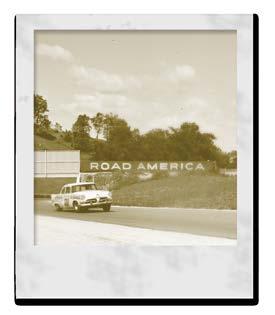
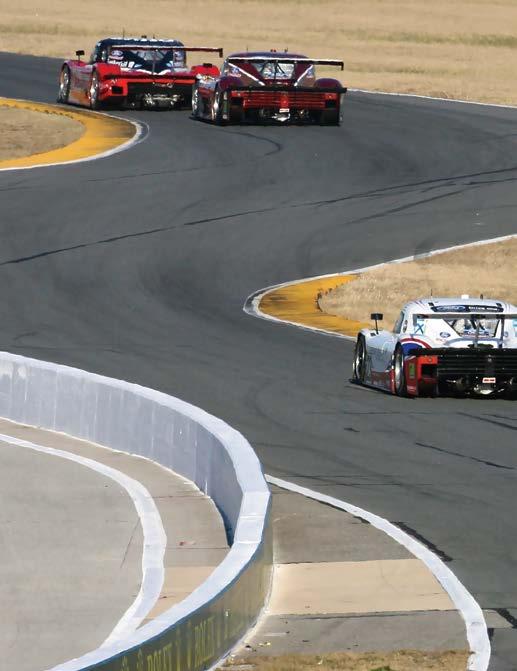



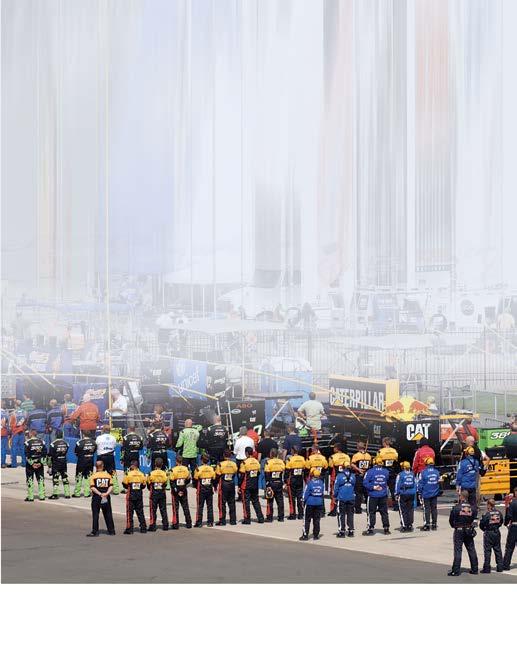




FIVE RACES REMAIN ON THE 2011 SCHEDULE AS FOLLOWS: July MAZDA RACEWAY 250 Mazda Raceway Laguna Seca, Monterey, Calif. July 24 NEW JERSEY 250 New Jersey Motorsports Park, Millville, N.J. Aug. 13 CROWN ROYAL 200 Watkins Glen International, Watkins Glen, N.Y. Aug. 20 MONTREAL 200 Circuit Gilles Villeneuve, Montreal, Quebec, Canada Sept. 17 EMCO GEARS CLASSIC Mid-Ohio Sports Car Course, Lexington, Ohio For more information on the GRAND-AM Rolex Sports Car Series presented by Crown Royal Cask No. 16, visit www.Grand-Am.com You can also tune in on TV. SPEED is the exclusive cable network home for the GRAND-AM Rolex Sports Car Series presented by Crown Royal Cask No. 16 and the Continental Tire Sports Car Challenge. GS and ST the Continental Tire Sports Car Challenge) has separate grid, with the slower class taking the green flag several seconds behind the start for the faster class. In the event Daytona Prototype qualifying interrupted or delayed and the scheduled time expires, the schedule will be adjusted to allow at least two flying laps of qualifying. Drivers may enter and exit the pits order to make minimal changes with the permission of GRAND-AM officials. No driver change allowed during qualifying. driver causes caution period during qualifying, that driver will lose the fastest lap achieved to that point and will not be permitted to continue the qualifying session. If qualifying canceled, race grids will be set by team championship point standings in all classes. Grand-Am Employs Some Unique Rules: Pit Road Speed Limit Set at 45 miles per hour at all events, both Rolex Series and Continental Tire Challenge. 45-Minute Rule All teams must pit within the opening 45 minutes of an event, in essence preventing “pro-pro” teams from making a sprint-format event on only one pit stop. This procedure only utilized in Rolex Series races, but not used in the Rolex 24 At Daytona. There nothing mandatory the crew must do to the car. Restarts All DP drivers will be directed to move to the right-hand side of the track on the final lap of caution period to form continuous line of Daytona Prototypes, with the GT competitors moving to the left to form continuous line. The GT competitors will then fall into line directly behind the last Daytona Prototype before the restart. In the Continental Tire Sports Car Challenge, the same procedure will be followed, with the Grand Sport drivers moving to the right and the Street Tuner drivers moving to the left and then behind the GS cars. caution and GT cars on the third lap. GT cars falling within the lead DP and the leading GT competitor are waved by and allowed to go to the back of the field. In the event of full course yellow situation falling either within 20 minutes of the scheduled end time of race or within five laps of previous full course yellow, race control may call “short” full course yellow. Short Caution Period be for two laps. There will be no class wave-bys. On the out lap, the pace car will only wave-by those cars necessary to pick up the overall race leader. First time by pit entrance, behind the pace car, the pit lane will be open for all cars. In the event the race leader pits at this time, the pace car will wave by any cars necessary to pick up the new race leader. The course will return to green on the completion of the second pace lap. Pit Exit Rules Under yellow flag conditions, the pit exit line will determine the restart order. The car in the first pit box may only accelerate directly toward the pit exit line, up to 45 mph, without merging into the high-speed lane. For safety reasons, the car exiting the pits from the high-speed lane always has the right of way into the pit lane exit. the driver was not first to the pit exit line, the correct order will be established before the green flag waves. Under green flag conditions, the pit exit line only determines the end of the 45 mph speed limit. Drivers are expected to use judgment and avoid contact as they blend into the pit lane exit. 70 Bucyrus 200 June 2011 most recognized names in motorsports: Scott Pruett, Max Angelelli, Alex Gurney, Jon Fogarty, David Donohue, Antonio Garcia, Boris Said, Bill Auberlen, Andy Lally and more. The Rolex 24 At Daytona is also road racing showcase for NASCAR notables such as Jimmie Johnson, Juan Pablo Montoya and AJ Allmendinger, joined by major open-wheel stars like Scott Dixon, Dario Franchitti and Danica Patrick. Daytona Prototypes Launched as the series’ flagship class 2003, this category has attracted the superstar drivers and universally recognized teams through its extremely raceable and relatively affordable format. The DP has revolutionized sports car racing with plentiful battles at the front of the field and close finishes in virtually every race. Like the DP class that has redefined prototype sports car racing, the GT class has done the same for high-performance, production-based sports car engine for approval in the series. Engines that are approved for competition include power plants from Chevrolet (5-liter V-8), Lexus (5-liter V-8), BMW (5-liter V-8), Porsche (4-liter flat six and 5-liter V-8), Ford (5-liter V-8), Ferrari (4.5-liter V-6), Honda (3.8-liter V-6) and Infiniti (4.3-liter V-8). All engines are tuned to produce about 500 horsepower and each is capable of being mated to any of the approved DP chassis, which creates an interesting variety of chassis/ engine combinations. DPs utilizing engines under 4.5 liters are allowed the advantage the six-speed gearboxes, while all race cars with larger engines must run five speeds. In addition to official and approved chassis designs and engines tuned to GRAND-AM specifications, DP competition further equalized through minimum car weight. DPs fitted with engines less than 4 liters can weigh 2,200 pounds or more. DPs running engines liters and up to the maximum liters must weigh in at a minimum of 2,250 pounds. ROLEX SERIES DAYTONA PROTOTYPE Top Speed 195 mph Horsepower 500 Wheelbase 108 – 110 inches Weight (min.) 2,225 – 2,275 pounds Roof Height (min.) 41 inches Wing Height (max.) 41 inches Width (max.) 79 inches Engines 5.0 V-8: Chevrolet, Ford, BMW, Lexus, Porsche; 3.8L V-6 Honda; 4.3L V-8 Infiniti; 4.5L Ferrari Gearbox 6-speed sequential (5-speed for 5.0L V-8); AGS allowed for cars having Pro-Am drivers Tires Continental Chassis Steel tube w/integrated roll cage Suspension Pushrod with multilink Fuel Sunoco Traction Control Not permitted PICTURED: 01 Chip Ganassi Racing with Felix Sabates BMW Riley Rolex Sports Car Series 250 driven by VISITFLORIDA.COM 66 Bucyrus 200 June 2011 NASCAR has made two prior appearances at Road America. Most recently, Paul Menard captured his first NASCAR RE/MAX Challenge Series win in 36-lap shootout on July 7, 2001. One of four regional touring series for up-and-coming drivers at the time, Menard showcased his road racing talents in star-studded field of regional competitors. In talking about this weekend’s NASCAR Nationwide Series event, Menard said, “It’s really great track located on very picturesque site in the Wisconsin countryside. Road America has every kind of corner you can imagine. It’s very challenging. When was a kid, my dad took me there. The fans really love it. “By the second practice, I’m sure the NASCAR Nationwide Series regulars will be up to speed because the drivers are so good. Strategy will play big role, and managing brake wear will be the biggest challenge. I’m really stoked about running at Road America again and thrilled that NASCAR racing will continue in Wisconsin.” Third Time A Charm A Dozen Legends Raced Here Most NASCAR fans aren’t old enough to remember the first time NASCAR racing came to Wisconsin. The date was Sunday, August 12, 1956. At the urging of Carl Kiekhaefer of Fond du Lac, Wisconsin, (see the related story starting on page 34) the Grand National Division (now Sprint Cup) ran the 37th event of the 56 that counted in the championship battle. The series had just begun its barnstorming days when more than 50 events and racing on weekends and some weeknights were common. Although more than 300 drivers attempted to qualify for at least one 1956 race, only 26 started the event at Road America, plus some other cars running in another class. Greg Creamer interviews Paul Menard about his race-winning strategy on July 7, 2001. Many of the drivers who took the green flag that day read like who’s who of early NASCAR racing, in its eighth season of competition. The 26 starters ultimately accounted for 434 career wins. Familiar even to many present-day fans, the following 12 competitors accounted for 386 of those wins and 11 season championships: Driver Wins Championships Lee Petty 54 1954, 1958, 1959 Junior Johnson 50 Herb Thomas 48 1951, 1953 Buck Baker 46 1956, 1957 Tim Flock 39 1955 Fireball Roberts 33 Rex White 28 1960 Joe Weatherly 25 1962, 1963 Speedy Thompson 20 Marvin Panch 17 Curtis Turner 17 Paul Goldsmith Continued on page 32 30 Bucyrus 200 June 2010 Bucyrus 200 June 2010 31 through an Eaton 18-speed to 3.55 rear end. this group help fulfill the wishes of others. pit crew members use the lower portion monitor the TV broadcast, NASCAR timing and scoring, and the transponders on the #22 car. The crew chief, engineers, team executives and administrative personnel utilize the upper deck to plot race strategy and calculate fuel mileage. The self-contained, folddown unit closes up into compact, wheeled package that is transported race to race by Champion Tire & Wheel. Each race morning, the custom command center springs into action along with the team members serves. T hroughout his racing career, crew chief Scott Miller, sought more responsibility and ultimately achieved greater success. Whether racing himself, including three years as an owner/driver the Winston West Series, or turning wrenches for someone else, the story of this self-made man one of tenacity and following his dreams. Kentucky native, Miller admittedly bounced around since moving from California to North Carolina for the 1995 NASCAR season. Not because he couldn’t hold job, but rather because he an ambitious racer seeking to advance his career. His three stints at RCR prove he likeable guy who knows his stuff and doesn’t burn bridges. But early on, Scott recognized that doing good job didn’t necessarily translate into career advancement. Not one to seek the spotlight, Scott’s knowledge of race cars and what makes them run fast was acquired on the job. Although he served as the team engineer for Diamond Ridge Motorsports during the 1997 season, he does not have an engineering degree. He had observed the impact that engineering had on Indy Car racing while working his way up in California during the early nineties, and was among the first to apply some those skills to NASCAR racing. He was also among the first in the open wheel ranks to recognize that NASCAR racing was emerging as the pre-eminent American motorsport. Third Time a Charm Scott returned to RCR as team engineer for the 2004 season, working with Kevin Harvick and Robby Gordon. Although his first Sprint Cup Series win came with Ricky Craven at Darlington during the prior year, he recorded his second atop the pit box at Bristol during 2005, while Kevin Harvick’s crew chief, Todd Berrier, served fourrace suspension. During the latter stages the 2005 season, he served as Dave Blaney’s crew chief on the No. 07 Jack Daniel’s Chevrolet. During these two years, Scott had the opportunity to work with all three RCR teams, and in the process, he and Jeff Burton got to know each other. With the RCR resurgence already underway, they paired up for the 2006 season and the combination clicked. Winning returned for Jeff after four-year drought along with host top-5s and top-10s. Jeff, Scott and the supporting cast that he molded around them qualified for the Chase and established themselves as championship contenders during 2006, 2007 and 2008. “As company, top-tier team, driver and crew chief, we’ve proven we can get done when it comes making the Chase,” said Scott. More Responsibility, More Success Career Highlights Raced mini-bikes and motorcycles competitively from 1969-78 Won Formula Vee Series open wheel championship 1980 Employed by Dan Gurney’s All American Racers, IMSA project, 1982-83 Winston West Series owner-driver, limited schedule, 1983-85, recording two poles, one win and six top-5s Chief mechanic with various Indy Light Series teams, 1989-92 Chief mechanic for Indy Car race teams, 1993-94 Shock specialist for Tri-Star Motorsports in NASCAR Sprint Cup, 1995-96 Team engineer for Diamond Ridge Motorsports during 1997 Served damper engineer/chassis specialist with RCR, 1997-99 Race engineer for PPI Motorsports, 2000-01 Team engineer for RCR’s No. 30 AOL team and driver Jeff Green, 2002 Rickey Craven’s crew chief on the No. 32 Tide Chevrolet, 2003 RCR team engineer working with Robby Gordon and Kevin Harvick, 2004 Crew chief for Dave Blaney and the No. 07 Jack Daniel’s Chevrolet, Crew chief for Jeff Burton and the No. 31 AT&T Chevrolet, 2006-08 Crew chief career stats NASCAR Sprint Cup, 2000-08: Top-5s Top-10s 27 66 Optimism Born of Adversity SEVENTH EDITION Front cover photo Pole winner Dave Blaney brings the field to the green flag at the July 1, 2007, Loudon, N.H., race. The pole was the first for Toyota team and qualified Dave for the 2008 Bud Shootout. When you examine the effort and tenacity exhibited by driver Dave Blaney, competition director Tommy Baldwin, Bill Davis Racing shop personnel and weekend crewmembers, there is considerable cause for optimism regarding the 2008 NASCAR Sprint Cup season. After tough going in the early races, the team regained spot in the top-35 based on owner points—becoming the only 2007 Toyota team to earn guaranteed starting position in the first five races of 2008. Although nothing came easily, the foundation for an improved showing was clearly established. Dividing 2007 performance into four 9-race segments, the team’s on-track results and point total increased significantly during each quarter of the season. In particular, the last eight races placed the Cat Racing team on par with those challenging for a spot in the 10-race Chase. Carrying those results forward on consistent basis over the 36-race 2008 Sprint Cup schedule will be the key to success. Additional causes for optimism include the team’s and Toyota’s first pole and the best 2007 Camry finish, a third at Talladega. Three other top-10s show the horsepower and talent are there to challenge the established multi-car teams. A fast start and a bit of good luck will help the team maintain solid spot among the top-35 throughout the season. Being among those who start all 36 events is the minimum expectation. Only 33 teams accomplished that during 2007. Toyota engineering support, aggressive on-track testing and regular visits to the seven-post track simulator will help continue the momentum. In the seventh annual edition of this unique collectible, you’ll find car building update, look at the 50th anniversary running of the Daytona 500, the inside story of the Bristol Motor Speedway track rebuild and some interesting perspectives from team leaders and Caterpillar customers. A targeted Cat Dealer technician-recruiting program involving the National Hot Rod Association (NHRA) Top Fuel dragster of Hot Rod Fuller receives some special coverage. Strap into your favorite reading chair and enjoy Inside Cat Racing 2008. We hope you agree that it provides a unique perspective not available elsewhere and merits a place among your NASCAR memorabilia. Thanks for your continued support of Cat Racing. Sincerely, Greg T. Towles Greg T. Towles Director of Racing Programs Order on the web purchase additional copies Inside Cat Racing 2008 well as the 2002, 2003, 2004, 2005, 2006 and 2007 for assistance locating other retail outlets, go HighVelocityCommunications.com. CAT, CATERPILLAR, ACERT, their respective logos, “Caterpillar Yellow,” and the Power Edge trade dress, well corporate and product identity used herein, are trademarks Caterpillar and may not be used without permission. published on behalf Caterpillar and Cat Dealers High Velocity Communications Inc. you have any questions, comments suggestions, please mail them High Velocity Communications, 2444 North Publisher/Editor Warren Eulgen, Art Director Ben Newby, Director Client Services Kris Matz, Photography Phil Cavali, Cain Company, Bristol Motor Speedway staff and other sources, Printing Lithoprint Company. Every effort has been made ensure that information contained this publication accurate. Printed the U.S.A. 2008 Caterpillar Rights Reserved. 4 – Team Perspectives 11 Contingency Awards 12 The Power to Improve 14 Symmetry in Motion 16 Complex Construction 20 2002 Daytona 500 22 A Different Kind of Points Battle 24 Performance Predictor 28 Rebuilding a Living Legend 32 Pit Tour Hospitality 34 Race Chasin’ in Style 38 Dealer Technician Recruiting 42 – Thriving on the Competition 46 Garage Pass Photo Gallery 50 Keeping Up With Cat Racing 51 Months to Crown Chase Champ Contents Inaugural Race June 17-20, 2010 June 19,2010 Road America


































































































































































































 Rolex Sports Car Series 250 driven by VISITFLORIDA.COM
NASCAR RACING LAYOUTS
Rolex Sports Car Series 250 driven by VISITFLORIDA.COM
NASCAR RACING LAYOUTS




























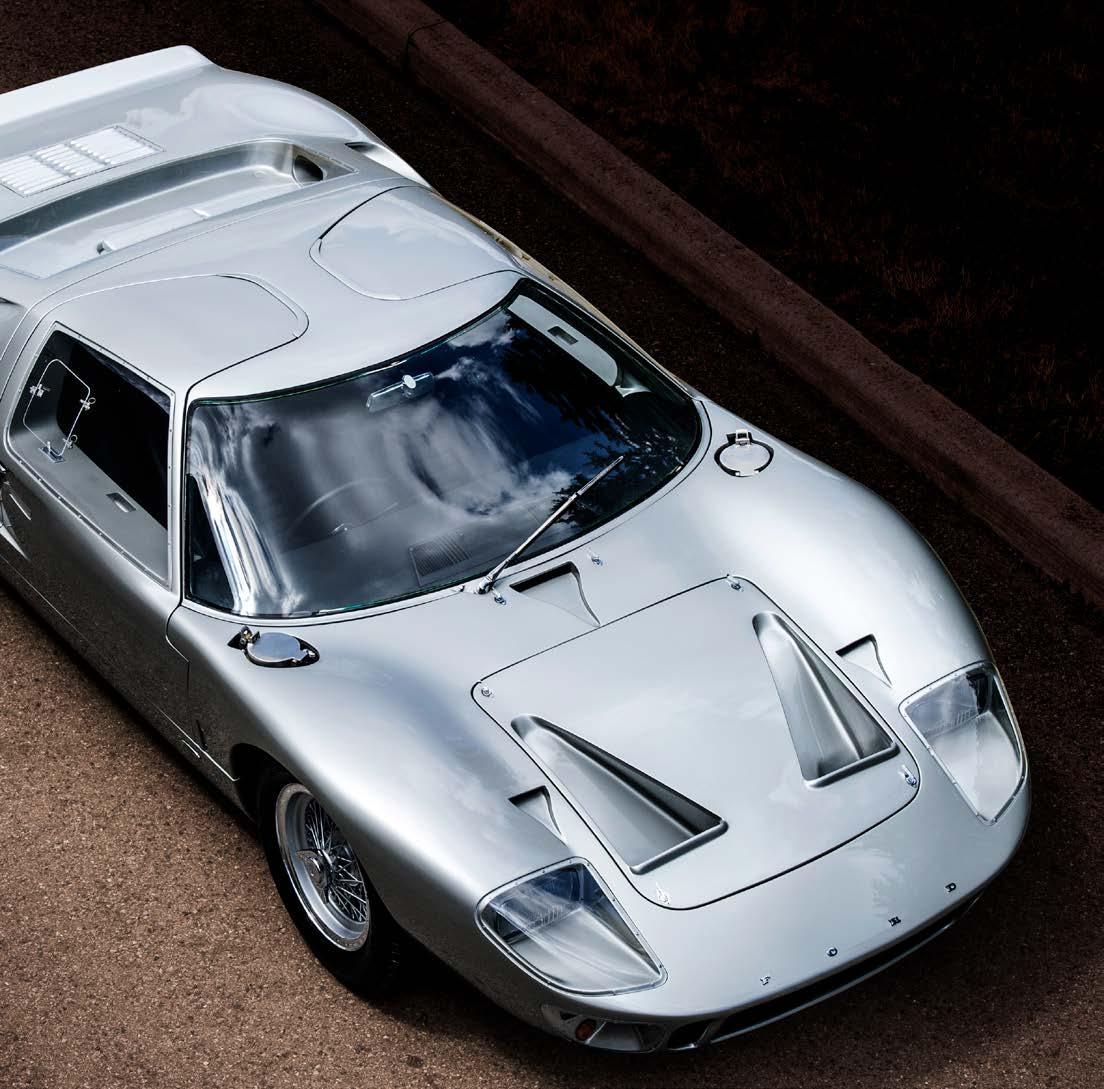

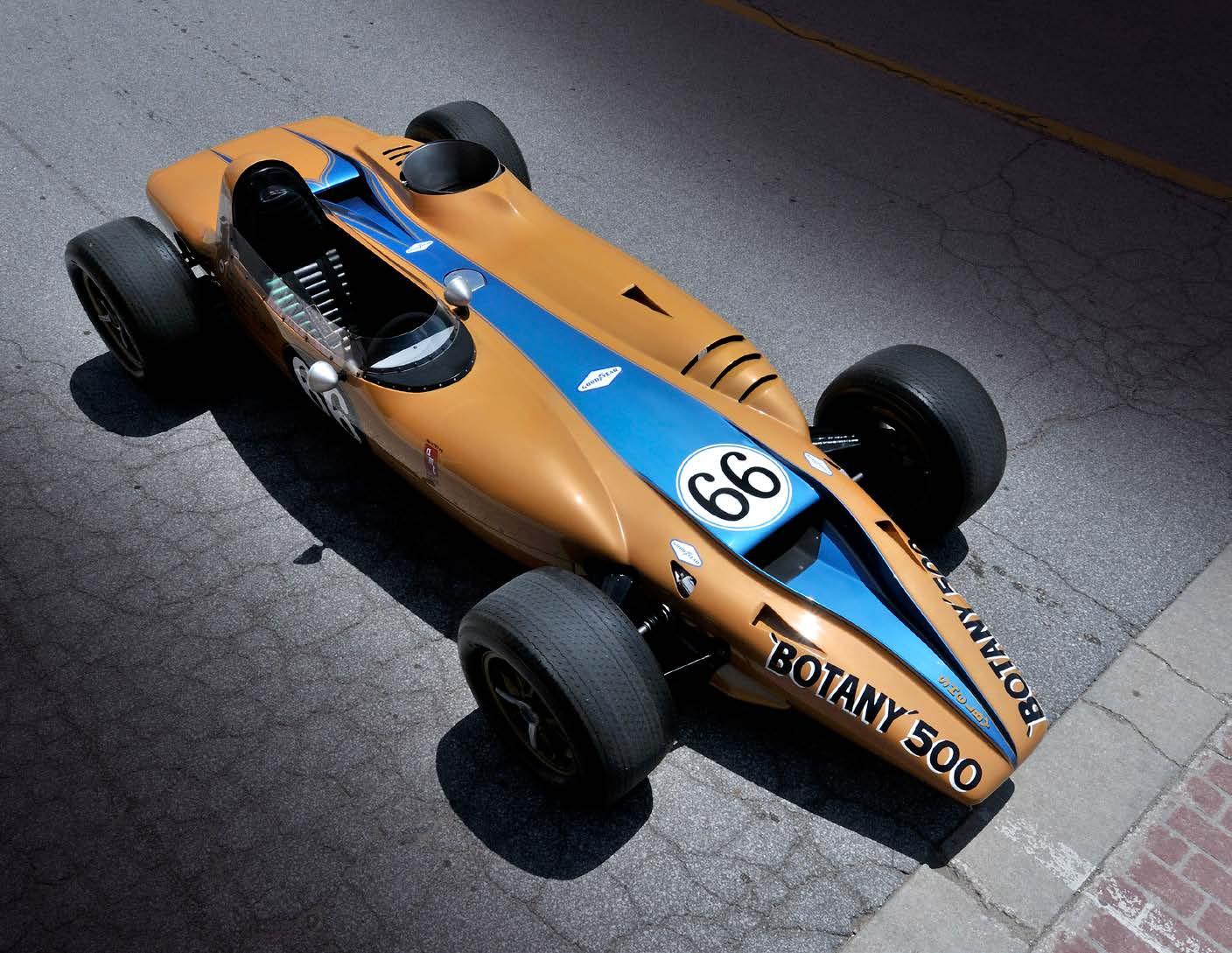


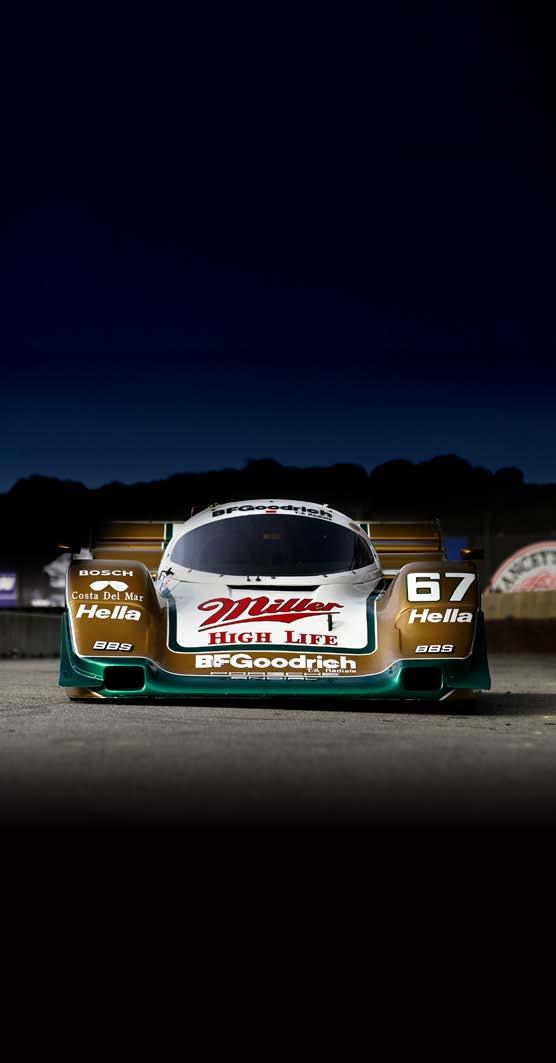

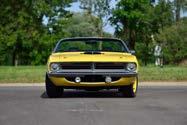




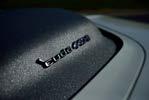

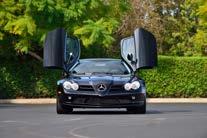



 20′ X4′ HANGING BANNERS
60“ X24“ DISPLAY MATS
6′ X12′ HANGING BANNER
2.5′ X7 ′ PULL-UP BANNER
20′ X4′ HANGING BANNERS
60“ X24“ DISPLAY MATS
6′ X12′ HANGING BANNER
2.5′ X7 ′ PULL-UP BANNER